Apple II
description: an early personal computer released by Apple in 1977, which became one of the first highly successful mass-produced microcomputers.
99 results

Valley of Genius: The Uncensored History of Silicon Valley (As Told by the Hackers, Founders, and Freaks Who Made It Boom)
by
Adam Fisher
Published 9 Jul 2018
Andy Hertzfeld: It was an incredible advance costwise, because to get a computer monitor to do that would have cost as much as the rest of the computer pretty much. But Woz designed it to use a standard color television set, which could be gotten very cheaply. Steve Wozniak: It made it possible for a little one-dollar chip to generate color instead of a thousand-dollar color-generation board. Lee Felsenstein: Nobody had to pay for that additional hardware to do all that vector generation and phasing and so forth. Andy Hertzfeld: It was the single cleverest thing in the Apple II. That was one of the first revolutions. Steve Wozniak: And then I thought, I wonder if I can write a game that’s playable with my slow BASIC? Dan Kottke: A video game has to move fast.
…
And the Apple II was literally full of stuff like that, where by just using tiny little bits of resources it could do amazing stuff. In fact, just looking at the Apple II design gave you the feeling that anything was possible, if you were just clever enough. That’s what the main lesson of the Apple II is: that it had infinite horizons. Steve Wozniak: So I programmed Breakout, and in half an hour I had tried a hundred variations that would have taken me ten years in hardware if I could’ve even done it. So I called Steve Jobs over to my apartment, and we sat down on the floor next to the cable snaking into my TV that had the back off of it so I could get the wires inside. And I showed him how I could change the colors of things and change the shape of the paddle and change the speed of the balls.
…
If you can do this with this machine, imagine what could you do on a more serious machine—like the Alto or the machines that were coming. Chuck Thacker: VisiCalc was a thing that was useful to businesspeople, and a lot of them. And did increase the productivity of people who did who use that kind of tool—enormously. Butler Lampson: It was a success of the Apple II and VisiCalc that created the whole personal computer industry, really. Steve Wozniak: The Apple II was the only one of those computers, the three of them that existed, that had enough memory to run VisiCalc. So they had to write it for this computer only. Everybody else had to go back to the drawing board and make computers that could add floppy disks and more memory.
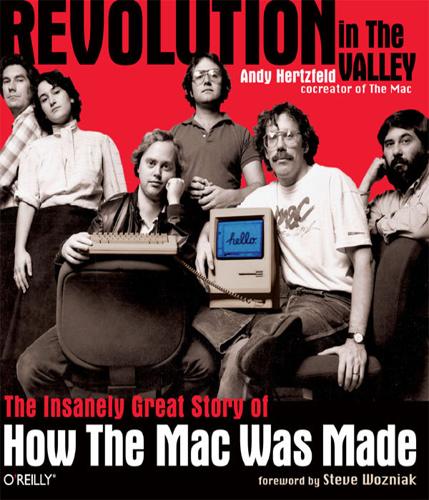
Revolution in the Valley: The Insanely Great Story of How the Mac Was Made
by
Andy Hertzfeld
Published 19 Nov 2011
We’ll See About That November 1979 Burrell proves his mettle with the 80K language card Burrell Smith was a 23-year-old, self-taught engineer, without a college degree, who was drawn to Apple by the sheer elegance of the Apple II design. Apple hired him in February 1979 as employee #282, a lowly service technician responsible for fixing broken Apple IIs that were returned by customers. As he debugged broken logic boards, sometimes more than a dozen in a single day, he developed a profound respect and empathy for Steve Wozniak’s unique and creative design techniques. Meanwhile, the Lisa software team was writing their first code in Pascal running on Apple IIs because the Lisa hardware wasn’t ready yet. They had been at it for almost a year and had written more code than would fit in the 64K bytes of memory in a standard Apple II.
…
As I taught myself 6502 assembly language from the monitor listing that came with the machine, it became clear to me this was no ordinary product: the coding style was crazy, whimsical, and outrageous, just like every other part of the design—especially the hi-res color graphic screen. It was clearly the work of a passionate artist. Eventually, I became so obsessed with the Apple II that I had to go to work at the place that created it. I abandoned graduate school and started work as a systems programmer at Apple in August 1979. Even though the Apple II was overflowing with both technical and marketing genius, the best thing about it was the spirit of its creation. It was not conceived or designed as a commercial product in the usual sense. Apple cofounder Steve Wozniak was just trying to make a great computer for himself and impress his friends at the Homebrew Computer Club.
…
Making the transition from an ardent Apple II hobbyist to an Apple employee was like ascending Mount Olympus, walking among the gods, working alongside my heroes. The early team at Apple was full of amazing individuals, people like Steve Wozniak, Rod Holt, and Mike Markkula. It was a privilege to get to know them and learn the company mythology firsthand. Apple’s other co-founder, Steve Jobs, had no shortage of vision or ambition. Flush with the rapidly growing success of the Apple II, Apple initiated two new projects in the fall of 1978 (codenamed Sara and Lisa), which were aimed beyond the hobbyist market. Sara was a souped-up successor to the Apple II, using the same microprocessor with an 80-column display and additional memory, intended for small businesses.
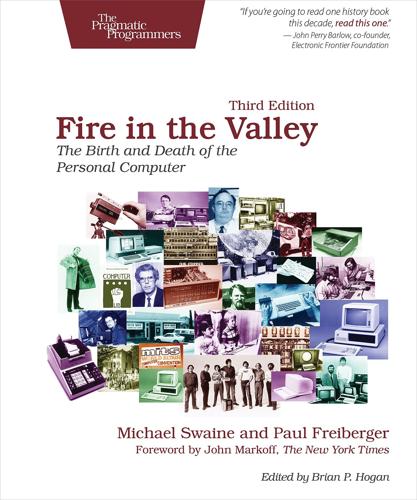
Fire in the Valley: The Birth and Death of the Personal Computer
by
Michael Swaine
and
Paul Freiberger
Published 19 Oct 2014
He told Woz and Jobs that neither of them had the experience to run a company and hired a president: Michael Scott, nicknamed Scotty, a seasoned executive who had worked for him at Fairchild. Designing the Apple II By the fall of 1976, Woz had already made progress on the design of his new computer. The Apple II would embody all the engineering savvy he could bring to it. It would be the embodiment of Steve Wozniak’s dream computer, one he would like to own himself. He had made it considerably faster than the Apple I. There was a clever trick he wanted to try that would give the machine a color display, too.
…
The Debut The young company faced a more modest challenge than tackling the company that had defined computer for generations: they had to finish the Apple II design in time for Jim Warren’s first West Coast Computer Faire in April and get it ready for production shortly thereafter. Markkula was already signing up distributors nationwide, many of whom were eager to work with a company that would give them greater freedom than microcomputer manufacturer MITS had, as well as provide a product that actually did something. * * * Figure 62. Steve Wozniak Woz scrambles for a phone in one of Apple’s early offices. (Courtesy of Margaret Kern Wozniak) Steve Wozniak is justly credited with the technical design of the Apple I and Apple II.
…
When the programmer returned, it took him more than a few minutes to figure out why his Apple was squeaking. Meanwhile, without the singular vision of a Steve Wozniak, the Apple III project was floundering. Delays in the Apple III were soon causing concern in the marketing department. The young company was beginning to feel growing pains at last. When Apple was formed, the Apple II was already near completion. The Apple III was the first computer that Apple—as a company—had designed and built from scratch. The Apple III was also the first Apple not conceived by Steve Wozniak in pursuit of his personal dream machine. Instead the Apple III was a bit of a hodgepodge, pasted together by many hands and designed by committee.
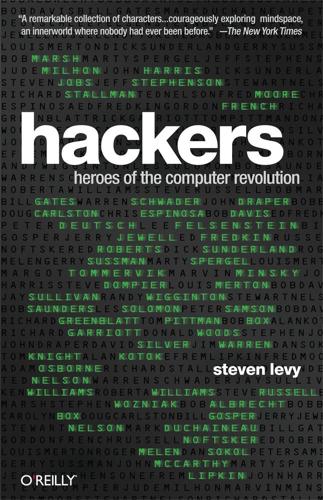
Hackers: Heroes of the Computer Revolution - 25th Anniversary Edition
by
Steven Levy
Published 18 May 2010
While the selling was going on, Steve Wozniak began working on an expanded design of the board, something that would impress his Homebrew peers even more. Steve Jobs had plans to sell many computers based on this new design, and he started getting financing, support, and professional help for the day the product would be ready. The new version of Steve Wozniak’s computer would be called the Apple II, and at the time no one suspected that it would become the most important computer in history. • • • • • • • • It was the fertile atmosphere of Homebrew that guided Steve Wozniak through the incubation of the Apple II. The exchange of information, the access to esoteric technical hints, the swirling creative energy, and the chance to blow everybody’s mind with a well-hacked design or program . . . these were the incentives which only increased the intense desire Steve Wozniak already had: to build the kind of computer he wanted to play with.
…
Who’s Who: The Wizards and Their Machines Bob Albrecht. Founder of People’s Computer Company who took visceral pleasure in exposing youngsters to computers. Altair 8800. The pioneering microcomputer that galvanized hardware hackers. Building this kit made you learn hacking. Then you tried to figure out what to do with it. Apple II. Steve Wozniak’s friendly, flaky, good-looking computer, wildly successful and the spark and soul of a thriving industry. Atari 800. This home computer gave great graphics to game hackers like John Harris, though the company that made it was loath to tell you how it worked. Bob and Carolyn Box. World-record-holding gold prospectors turned software stars, working for Sierra On-Line.
…
Filled a small room, but in the late fifties, this $3 million machine was world’s first personal computer—for the community of MIT hackers that formed around it. Jim Warren. Portly purveyor of “techno-gossip” at Homebrew, he was first editor of hippie-styled Dr. Dobbs Journal, later started the lucrative Computer Faire. Randy Wigginton. Fifteen-year-old member of Steve Wozniak’s kiddie corps, he helped Woz trundle the Apple II to Homebrew. Still in high school when he became Apple’s first software employee. Ken Williams. Arrogant and brilliant young programmer who saw the writing on the CRT and started Sierra On-Line to make a killing and improve society by selling games for the Apple computer.
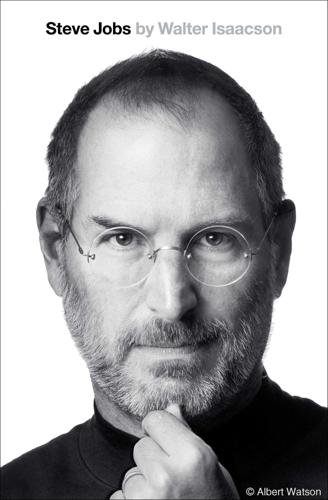
Steve Jobs
by
Walter Isaacson
Published 23 Oct 2011
But the biggest news that month was the departure from Apple, yet again, of its cofounder, Steve Wozniak. Wozniak was then quietly working as a midlevel engineer in the Apple II division, serving as a humble mascot of the roots of the company and staying as far away from management and corporate politics as he could. He felt, with justification, that Jobs was not appreciative of the Apple II, which remained the cash cow of the company and accounted for 70% of its sales at Christmas 1984. “People in the Apple II group were being treated as very unimportant by the rest of the company,” he later said. “This was despite the fact that the Apple II was by far the largest-selling product in our company for ages, and would be for years to come.”
…
Steve Jobs, address to the Aspen Design Conference, June 15, 1983, tape in Aspen Institute archives; Apple Computer Partnership Agreement, County of Santa Clara, Apr. 1, 1976, and Amendment to Agreement, Apr. 12, 1976; Bruce Newman, “Apple’s Lost Founder,” San Jose Mercury News, June 2, 2010; Wozniak, 86, 176–177; Moritz, 149–151; Freiberger and Swaine, 212–213; Ashlee Vance, “A Haven for Spare Parts Lives on in Silicon Valley,” New York Times, Feb. 4, 2009; Paul Terrell interview, Aug. 1, 2008, mac-history.net. Garage Band: Interviews with Steve Wozniak, Elizabeth Holmes, Daniel Kottke, Steve Jobs. Wozniak, 179–189; Moritz, 152–163; Young, 95–111; R. S. Jones, “Comparing Apples and Oranges,” Interface, July 1976. CHAPTER 6: THE APPLE II An Integrated Package: Interviews with Steve Jobs, Steve Wozniak, Al Alcorn, Ron Wayne. Wozniak, 165, 190–195; Young, 126; Moritz, 169–170, 194–197; Malone, v, 103. Mike Markkula: Interviews with Regis McKenna, Don Valentine, Steve Jobs, Steve Wozniak, Mike Markkula, Arthur Rock. Nolan Bushnell, keynote address at the ScrewAttack Gaming Convention, Dallas, July 5, 2009; Steve Jobs, talk at the International Design Conference at Aspen, June 15, 1983; Mike Markkula, “The Apple Marketing Philosophy” (courtesy of Mike Markkula), Dec. 1979; Wozniak, 196–199.
…
He had never been, and would never be, adept at containing his emotions. He told Steve Wozniak that he was willing to call off the partnership. “If we’re not fifty-fifty,” he said to his friend, “you can have the whole thing.” Wozniak, however, understood better than his father the symbiosis they had. If it had not been for Jobs, he might still be handing out schematics of his boards for free at the back of Homebrew meetings. It was Jobs who had turned his ingenious designs into a budding business, just as he had with the Blue Box. He agreed they should remain partners. It was a smart call. To make the Apple II successful required more than just Wozniak’s awesome circuit design.

Insanely Great: The Life and Times of Macintosh, the Computer That Changed Everything
by
Steven Levy
Published 2 Feb 1994
The first computers discussed at the Homebrew Computer Club, Steve Wozniak's home base, had 4K memory, the rough equivalent of four pages of text. When the Apple II shipped with 48K memory, it was deemed an enormous expanse. Later, Apple II users would buy circuit boards to add 16K more, and then they really felt they were humming. So it is not surprising that Jobs felt 128K sufficient. But there were two errors to his thinking. First, since Macintosh was a bit-mapped machine, considerably more memory was required than with the raster-based Apple II or IBM-PC. When one of these displayed a word, it used a shortcut-there was a single one-byte computer code for each letter, and that chunk of code threw the letter on the screen.
…
It filled several low-slung office buildings in Cupertino, and had hundreds of employees. Though the Apple II was wonderful for its time, Apple's leaders realized that the company needed new products to remain competitive. They began work on-the Apple III, a machine roughly as powerful as IBM's personal computer would be. But Steve Jobs had an idea for something even more special-Lisa, a computer that would leapfrog Apple's technology, surpassing not only the Apple II, but Apple III as well. This jump would also vault Apple a generation or so past anything that its competitors were preparing. Begun when Steve Wozniak, at Steve Jobs's request, sketched its architecture on a napkin, Lisa had, in less than a year, evolved to a computer based on the powerful Motorola 68000 microprocessor chip, and was engineered to handle more complicated applications, even running several at the same time, a trick called "multitasking."
…
The stunning visuals produced by Atkinson's work allowed people to see the brain from previously unimagined vistas. Atkinson had experienced a conversion experience when he came across an Apple II in 1977. He easily saw past its limitations (it was much less powerful than the machines he worked with at school), instead appreciating the virtuosity of Steve Wozniak's digital design. He went to work for Apple in 1978-employee number 51-writing applications that would help sell the Apple II. But with Lisa, Atkinson faced his biggest challenge. His ninety-minute exposure to Smalltalk had been somewhat deceiving. While the computer in some ways seemed to have completely solved the challenge of allowing an unschooled worker easy access to the information inside the computer-the furniture of cyberspace-when Atkinson sat down and tried to duplicate the task, he realized that there were gaps as yet unfilled.

Exploding the Phone: The Untold Story of the Teenagers and Outlaws Who Hacked Ma Bell
by
Phil Lapsley
Published 5 Feb 2013
He had spent a total of three months on the inside, where he slopped pigs at the prison’s piggery and tended the prison grounds in a landscaping job. While there, Draper claims, he taught the art of phone phreaking to dozens of other inmates. Draper soon went to work for his friend Steve Wozniak at Apple Computer, designing an innovative product called the Charley Board. Charley was an add-in circuit board for the Apple II that connected the computer to the telephone line. With Charley and a few simple programs you could make your Apple II do all sorts of telephonic tricks. Not only could it dial telephone numbers and send touch tones down the line, it could even listen to the calls it placed and recognize basic telephone signals as the call progressed, signals such as a dial tone or busy signal or a ringing signal.
…
Riches, or promises of riches, or maybe just a fun job that might pay the bills beckoned. In 1976 former phone phreaks Steve Jobs and Steve Wozniak were selling Apple I computers to their fellow hobbyists. “Jobs placed ads in hobbyist publications and they began selling Apples for the price of $666.66,” journalist Steven Levy wrote. “Anyone in Homebrew could take a look at the schematics for the design, Woz’s BASIC was given away free with the purchase of a piece of equipment that connected the computer to a cassette recorder.” The fully assembled and tested Apple II followed later that year. By 1977 microcomputers had begun to enter the mainstream.
…
Excerpt from IWOZ: COMPUTER GEEK TO CULT ICON: HOW I INVENTED THE PERSONAL COMPUTER, COFOUNDED APPLE, AND HAD FUN DOING IT by Steve Wozniak and Gina Smith. Copyright © 2006 by Steve Wozniak and Gina Smith. Used by permission of W. W. Norton & Company, Inc. ISBN-13: 978-0-8021-9375-9 Grove Press an imprint of Grove/Atlantic, Inc. 841 Broadway New York, NY 10003 Distributed by Publishers Group West www.groveatlantic.com 13 14 15 16 10 9 8 7 6 5 4 3 2 1 To the men and women of the Bell System, and especially to the members of the technical staff of Bell Laboratories, without whom none of this would have been possible CONTENTS FOREWORD BY STEVE WOZNIAK A NOTE ON NAMES AND TENSES CHAPTER 1 FINE ARTS 13 CHAPTER 2 BIRTH OF A PLAYGROUND CHAPTER 3 CAT AND CANARY CHAPTER 4 THE LARGEST MACHINE IN THE WORLD CHAPTER 5 BLUE BOX CHAPTER 6 “SOME PEOPLE COLLECT STAMPS” CHAPTER 7 HEADACHE CHAPTER 8 BLUE BOX BOOKIES CHAPTER 9 LITTLE JOJO LEARNS TO WHISTLE CHAPTER 10 BILL ACKER LEARNS TO PLAY THE FLUTE CHAPTER 11 THE PHONE FREAKS OF AMERICA PHOTO INSERT CHAPTER 12 THE LAW OF UNINTENDED CONSEQUENCES CHAPTER 13 COUNTERCULTURE CHAPTER 14 BUSTED CHAPTER 15 PRANKS CHAPTER 16 THE STORY OF A WAR CHAPTER 17 A LITTLE BIT STUPID CHAPTER 18 SNITCH CHAPTER 19 CRUNCHED CHAPTER 20 TWILIGHT CHAPTER 21 NIGHTFALL EPILOGUE SOURCES AND NOTES ACKNOWLEDGMENTS INDEX THE PLAYGROUND Phone phreak (n.) 1.
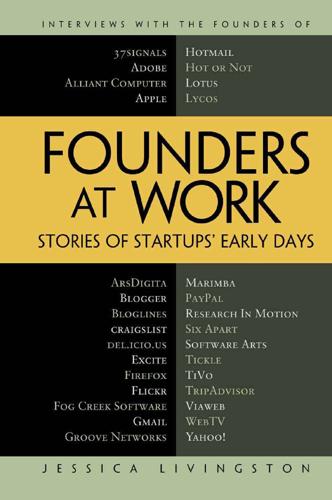
Founders at Work: Stories of Startups' Early Days
by
Jessica Livingston
Published 14 Aug 2008
We put out manuals that had just hundreds of pages of listings of code, descriptions of circuits, examples of boards that you would plug in—so that Steve Wozniak 51 anyone could look at this and say, “Now I know how I would do my own.” They could type in the programs on their own Apple II and then see “that’s how that works” instantly, and know how to write their own programs. Running cards was the most important thing. All these companies started up making cards that you could plug into your Apple II and write a little software (mostly games at first) on cassette tapes. You’d go to the store and they’d just have all this stuff that you could buy to enhance the Apple II. So one of our big keys to success was that we were very open.
…
He said, “Alright, you’ll be productive only in the afternoon. Take the morning off.” Little did he know that I was actually up all night writing a business plan, not partying. C H A P T 3 E R Steve Wozniak Cofounder, Apple Computer If any one person can be said to have set off the personal computer revolution, it might be Steve Wozniak. He designed the machine that crystallized what a desktop computer was: the Apple II. Wozniak and Steve Jobs founded Apple Computer in 1976. Between Wozniak’s technical ability and Jobs’s mesmerizing energy, they were a powerful team. Woz first showed off his home-built computer, the Apple I, at Silicon Valley’s Homebrew Computer Club in 1976.
…
Mike figured out that we were going to need some cash, we were going to be so fast growing. And when you are fast growing, you need more cash right away. So we did have a venture deal in place from well before we shipped an Apple II. And sometime after we were shipping the Apple IIs, we got, I think, $800,000 or $300,000—some large amount—from one venture capital place. Steve Wozniak 57 Livingston: On the East Coast? Wozniak: I believe that’s where we arranged it. Mike Markkula had worked with this guy Hank Smith at Intel, so that’s how they knew each other. And I think Don Valentine actually put some money in, but then it came to a point where he wanted to make some good money and buy some stock off Steve Jobs for like $5.50 before we went public. $5.50 a share, and Steve thought it was too low.

The Innovators: How a Group of Inventors, Hackers, Geniuses and Geeks Created the Digital Revolution
by
Walter Isaacson
Published 6 Oct 2014
To listen to Dompier’s Altair play “Fool on the Hill,” go to http://startup.nmnaturalhistory.org/gallery/story.php?ii=46. 32. After they became successful, Gates and Allen donated a new science building to Lakeside and named its auditorium after Kent Evans. 33. Steve Wozniak’s unwillingness to tackle this tedious task when he wrote BASIC for the Apple II would later force Apple to have to license BASIC from Allen and Gates. 34. Reading a draft version of this book online, Steve Wozniak said that Dan Sokol made only eight copies, because they were hard and time-consuming to make. But John Markoff, who reported this incident in What the Dormouse Said, shared with me (and Woz and Felsenstein) the transcript of his interview with Dan Sokol, who said he used a PDP-11 with a high-speed tape reader and punch.
…
Vint Cerf and Bob Kahn complete TCP/IP protocols for the Internet. 1974 Intel 8080 comes out. 1975 Altair personal computer from MITS appears. Paul Allen and Bill Gates write BASIC for Altair, form Microsoft. First meeting of Homebrew Computer Club. Steve Jobs and Steve Wozniak launch the Apple I. 1977 The Apple II is released. 1978 First Internet Bulletin Board System. 1979 Usenet newsgroups invented. Jobs visits Xerox PARC. 1980 IBM commissions Microsoft to develop an operating system for PC. 1981 Hayes modem marketed to home users. 1983 Microsoft announces Windows.
…
Author’s interview with Lee Felsenstein. 81. Bill Gates interview, Playboy, July 1994. 82. This section draws from my Steve Jobs (Simon & Schuster, 2011), which was based on interviews with Steve Jobs, Steve Wozniak, Nolan Bushnell, Al Alcorn, and others. The Jobs biography includes a bibliography and source notes. For this book, I reinterviewed Bushnell, Alcorn, and Wozniak. This section also draws on Steve Wozniak, iWoz (Norton, 1984); Steve Wozniak, “Homebrew and How the Apple Came to Be,” http://www.atariarchives.org/deli/homebrew_and_how_the_apple.php. 83. When I posted an early draft of parts of this book for crowdsourced comments and corrections on Medium, Dan Bricklin offered useful suggestions.
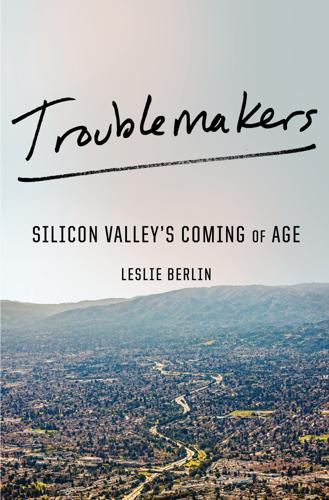
Troublemakers: Silicon Valley's Coming of Age
by
Leslie Berlin
Published 7 Nov 2017
Harriet Stix, “A UC Berkeley Degree Is Now the Apple of Steve Wozniak’s Eye,” Los Angeles Times, May 14, 1986. 18. Marilyn Chase, “Technical Flaws Plague Apple’s New Computer,” Wall Street Journal, April 15, 1981. Apple III prices ranged from $4,300 to nearly $8,000, compared to the Apple II systems at about half the cost. 19. Apple fixed the problems and brought the Apple III back in late 1981—“Let me re-introduce myself,” one advertisement began—but not much software was written for the machine, and it was not anywhere near as popular as the Apple II. (Sales were around 1,000 per month versus the Apple II’s 15,000.) By one estimate (Brent Schlender and Rick Tetzeli, Becoming Steve Jobs: The Evolution of a Reckless Upstart into a Visionary Leader [New York: Crown Business, 2015]: 72), before the Apple III was discontinued in 1984, only 120,000 had been sold.
…
The only people who seemed obvious choices for their jobs were Steve Wozniak, who ran engineering, and Mike Scott, in his capacity as manufacturing head. But it worked. Occasionally lost in the stories of Jobs’s bare feet and Wozniak’s practical joking is the reality of how hard and effectively the young men and their older semiconductor colleagues worked together. The birth of Apple’s floppy disk drive almost exactly a year after the company incorporated, and six months after it began shipping Apple IIs, offers a fine illustration. The Apple II was selling well, but Markkula was convinced it would never make the leap to a broad consumer market unless there were some way to make it load software faster.
…
The first outside backer of Electronic Arts was Don Valentine, the venture capitalist who had funded Atari and introduced Mike Markkula to Steve Jobs and Steve Wozniak. Ben Rosen, the optimistic technology analyst, was another early backer.IV Electronic Arts had its first big hit in October 1983 with Doctor J and Larry Bird Go One-on-One, a basketball game featuring two of the sport’s biggest stars. The title was one of the most popular games for the Apple II and an early indicator of the enormous market for licensed sports video games. (Electronic Arts would exploit this market with great success five years later with the release of John Madden Football.III) But in the wake of the 1983 crash, even Electronic Arts, which made games for computers, not dedicated consoles or arcades, had to retrench.
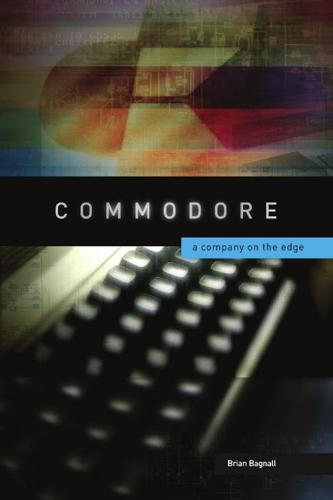
Commodore: A Company on the Edge
by
Brian Bagnall
Published 13 Sep 2005
“The PET and the TRS-80 both came with their own monitors, so they were a more appropriate solution for most people than the Apple II was,” says Yannes. The original design by Steve Wozniak also had several flaws. “Right after the Apple II came out, Electronic Engineering Times wrote a story about the three major design flaws that Woz made on the Apple II,” says Peddle. “He didn’t understand the ways the [6502] chipset worked and some other electronics stuff.” In response to these problems, Apple hired an engineer to redesign Wozniak’s motherboard. “There was a guy who was hired at Apple to redesign the Apple II and make it real engineering without offending Woz,” explains Peddle.
…
In 1981, the nine-year-old received a VIC-20 from his grandfather and used it to learn BASIC programming. He was taking the first steps which eventually led him to create a revolution with Linux. [7] Time magazine, “The Hottest-Selling Hardware” (January 3, 1983), p. 37. [8] Steve Wozniak has attempted to claim the Apple II was the first to a million. On BBC World’s Most Powerful, aired December 2003, Wozniak claimed, “Sales shot sky high. Apple was the first company to sell a hundred thousand computers—a million computers.” CHAPTER 29 Selling the Revolution 1982 With the engineering job complete (or at least good enough), Charlie Winterble’s team reluctantly stepped away from the Commodore 64.
…
“They would go around the suite and they would see the development systems, and they would find out how to log onto the timesharing systems so they could develop code,” says Peddle. “Then they would wander away.” If all went well, the engineers and hobbyists would go out into the world and design products with the 6502. Waiting in line outside the MacArthur Suite was Steve Wozniak, who thought he might be able to use the chip for a homebrew computer project. “Woz and Steve Jobs bought their first 6502 and they used it in the Apple I,” says Bill Seiler. Peddle’s documentation undoubtedly influenced Wozniak’s design. The 6502 did not immediately improve MOS Technology’s finances, but it had a major impact on the computer industry.
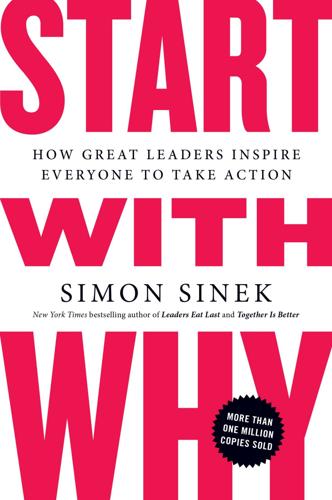
Start With Why: How Great Leaders Inspire Everyone to Take Action
by
Simon Sinek
Published 29 Oct 2009
They hung out with hippie types who shared their beliefs, but they saw a different way to change the world that didn’t require protesting or engaging in anything illegal. Steve Wozniak and Steve Jobs came of age in this time. Not only was the revolutionary spirit running high in Northern California, but it was also the time and place of the computer revolution. And in this technology they saw the opportunity to start their own revolution. “The Apple gave an individual the power to do the same things as any company,” Wozniak recounts. “For the first time ever, one person could take on a corporation simply because they had the ability to use the technology.” Wozniak engineered the Apple I and later the Apple II to be simple enough for people to harness the power of the technology.
…
Disney and the Creation of an Entertainment Empire. New York: Disney Editions, 1998. 142 Herb Kelleher was able to personify and preach the cause of freedom: Kevin Freiberg and Jackie Freiberg, Nuts! Southwest Airlines’ Crazy Recipe for Business and Personal Success. New York: Broadway, 1998. 142 Steve Wozniak is the engineer who made the Apple work: Steve Wozniak, personal interview, November 2008. 143 Bill Gates and Paul Allen went to high school together in Seattle: Randy Alfred, “April 4, 1975: Bill Gates, Paul Allen Form a Little Partnership,” Wired, April 4, 1975, http://www.wired.com/science/discoveries/news/2008/04/dayintech_0404. 145 Oprah Winfrey once gave away a free car: Ann Oldenburg, “7M car giveaway stuns TV audience,” USA Today, September 13, 2004, http://www.usatoday.com/life/people/2004-09-13-oprah-cars_x.htm. 150 the Education for Employment Foundation: http://www.efefoundation.org/homepage.html; Lisa Takeuchi Cullen, “Gainful Employment,” Time, September 20, 2007, http://www.time.com/time/magazine/article/0,9171,1663851,00.html; Ron Bruder, personal interview, February 2009.
…
But it wasn’t until 1976, nearly three years after the end of America’s military involvement in the Vietnam conflict, that a different revolution ignited. They aimed to make an impact, a very big impact, even challenge the way people perceived how the world worked. But these young revolutionaries did not throw stones or take up arms against an authoritarian regime. Instead, they decided to beat the system at its own game. For Steve Wozniak and Steve Jobs, the cofounders of Apple Computer, the battlefield was business and the weapon of choice was the personal computer. The personal computer revolution was beginning to brew when Wozniak built the Apple I. Just starting to gain attention, the technology was primarily seen as a tool for business.
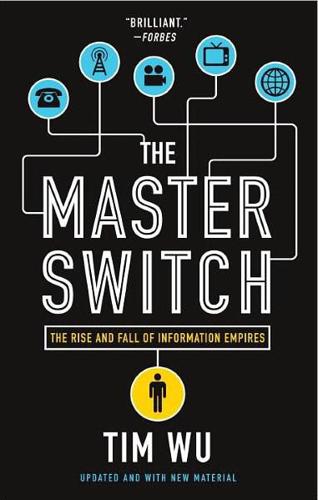
The Master Switch: The Rise and Fall of Information Empires
by
Tim Wu
Published 2 Nov 2010
It made it possible to write and sell one’s programs directly, creating what we now call the “software” industry. In 2006, I briefly met with Steve Wozniak on the campus of Columbia University. “There’s a question I’ve always wanted to ask you,” I said. “What happened with the Mac? You could open up the Apple II, and there were slots and so on, and anyone could write for it. The Mac was way more closed. What happened?” “Oh,” said Wozniak. “That was Steve. He wanted it that way. The Apple II was my machine, and the Mac was his.” Apple’s origins were pure Steve Wozniak, but as everyone knows, it was the other founder, Steve Jobs, whose ideas made Apple what it is today.
…
For while founders do set the culture of a firm, they cannot dictate it in perpetuity; as Wozniak withdrew from the operation, Apple became more and more concerned with, as it were, the aesthetics of radicalism than with its substance. Steve Wozniak is not the household name that Steve Jobs is, but his importance to communications and culture in the postwar period merits a closer look. While Apple’s wasn’t the only personal computer invented in the 1970s, it was the most influential. For the Apple II took personal computing, an obscure pursuit of the hobbyist, and made it into a nationwide phenomenon, one that would ultimately transform not just computing, but communications, culture, entertainment, business—in short, the whole productive part of American life.
…
Theirs was to be a union that could move mountains—or at least break down the old barriers and create a perfect new world.2 The two moguls plotting the future of the Internet had something else in common: neither was what you might call a natural computer geek, in the manner of Bill Gates or Steve Jobs. Entrepreneurs like Apple’s Steve Wozniak got started by programming and soldering; Case was an assistant brand manager at Procter & Gamble in Kansas. He might have languished somewhere in upper middle management had he not resolved to grab the ring. Case took a job at a risky computer networking firm named the Control Video Corporation that had already failed twice.

Becoming Steve Jobs: The Evolution of a Reckless Upstart Into a Visionary Leader
by
Brent Schlender
and
Rick Tetzeli
Published 24 Mar 2015
I was thirty-two years old; Jobs was thirty-one and already a global celebrity, hailed, along with Bill Gates, for having invented the personal computer industry. Long before Internet mania started churning out wunderkinds of the week, Jobs was technology’s original superstar, the real deal with an astounding, substantial record. The circuit boards he and Steve Wozniak had assembled in a garage in Los Altos had spawned a billion-dollar company. The personal computer seemed to have unlimited potential, and as the cofounder of Apple Computer, Steve Jobs had been the face of all those possibilities. But then, in September of 1985, he had resigned under pressure, shortly after telling the company’s board of directors that he was courting some key Apple employees to join him in a new venture to build computer “workstations.”
…
Rock loved order, he loved processes, he believed that tech companies grew in certain ways according to certain rules, and he subscribed to these beliefs because he’d seen them work before, most notably at Intel, the great Santa Clara chipmaker that he had backed early on. Rock was perhaps the most notable tech investor of his time, but he in fact had been reluctant to back Apple at first, largely because he’d found Steve and his partner Steve Wozniak unpalatable. He didn’t see Apple the way Jobs saw it—as an extraordinary company that would humanize computing and do so with a defiantly unhierarchical organization. Rock simply viewed it as another investment. Steve found board meetings with Rock enervating, not invigorating; he had looked forward to a long, fast drive to Marin with the top down to get rid of the stale stench of seemingly endless discussion.
…
“I was inventing new stuff. I figured I’d just stay on here. I’d had a pretty miserable experience at Disney.” He told Schneider that there was only one way that he’d consider working with Disney—the studio would have to make a movie with Pixar. The Evolution of a CEO Steve Jobs and Steve Wozniak in 1979. The two had founded Apple four years earlier, and the company was growing like crazy. But the best years of their collaboration were already over. Ted Thai/Polaris A 1979 gathering of the Seva Foundation, which Steve backed with a $5,000 donation. His close friend Larry Brilliant is at the center with his baby boy, Joseph; Brilliant’s wife, Girija, is to the right, arms crossed and leaning back.
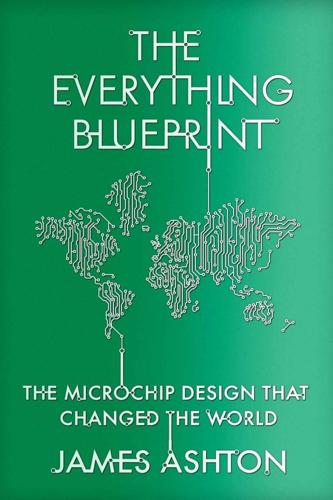
The Everything Blueprint: The Microchip Design That Changed the World
by
James Ashton
Published 11 May 2023
v=KrTmvqwpZF8 8 Brian Merchant, The One Device, Little, Brown, 2017,p. 155. 9 https://archive.computerhistory.org/resources/access/text/2012/06/102746190-05-01-acc.pdf 10 https://media.nesta.org.uk/documents/the_legacy_of_bbc_micro.pdf 11 https://www.nytimes.com/1962/11/03/archives/pocket-computer-may-replace-shopping-list-inventor-says-device.html 12 https://archive.computerhistory.org/resources/access/text/2014/08/102739939-05-01-acc.pdf 13 https://archive.computerhistory.org/resources/access/text/2014/08/102739939-05-01-acc.pdf 14 https://web.archive.org/web/20120721114927/http://www.variantpress.com/view.php?content=ch001 15 https://web.archive.org/web/20120721114927/http://www.variantpress.com/view.php?content=ch001 16 Steve Wozniak, iWoz, Headline, 2007 17 Walter Isaacson, Steve Jobs, Simon & Schuster, 2011, p. 58. 18 https://en.wikipedia.org/wiki/Apple_II#/media/File:Apple_II_advertisement_Dec_1977_page_2.jpg 19 Berlin, The Man Behind the Microchip, p. 251. 20 Isaacson, Steve Jobs, p. 84. 21 https://archive.computerhistory.org/resources/access/text/2014/08/102746675-05-01-acc.pdf 22 https://media.nesta.org.uk/documents/the_legacy_of_bbc_micro.pdf 23 http://www.naec.org.uk/organisations/bbc-computer-literacy-project/towards-computer-literacy-the-bbc-computer-literacy-project-1979-1983 24 https://www.margaretthatcher.org/document/104609 25 https://www.theregister.com/2011/11/30/bbc_micro_model_b_30th_anniversary/?
…
He drafted in his wife Shirley to greet engineers and take their money as they delved their hands into a glass jar of chips. One of the people waiting in line was a young computer designer called Steve Wozniak, whose Apple I machine was released the following year featuring the 6502. The Apple Seed When Steve Jobs saw what his best friend had come up with, he was convinced he was on to something. Jobs and Steve Wozniak had met in 1971, united by pranks and electronics even though they were four school years apart. The pair were polar opposites: Jobs, charismatic and brattish, occasionally dabbling in Eastern religions; Wozniak, the shy son of a rocket scientist at the aerospace manufacturer Lockheed.
…
‘And the people he wanted to promote were usually bozos.’36 After Jobs’ resignation in September 1985, Sculley steered a recovery in Apple’s sales. Looking further out, in 1986 the company created an Advanced Technology Group (ATG) to hunt for and incubate cutting-edge ideas. Jobs the visionary was gone, as was a disillusioned Steve Wozniak. ATG looked and felt a lot like ‘AppleLabs’, the mooted development division Jobs could have run if he had opted to stay on, having been freed from managerial responsibility. Larry Tesler, recruited six years earlier in the ‘raid’ on Xerox and having earned a reputation internally as courageous yet cool under pressure, was elevated to vice president.
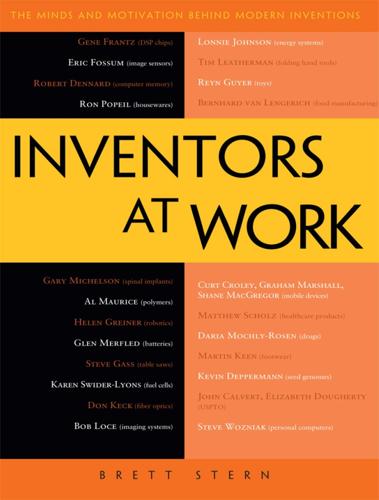
Inventors at Work: The Minds and Motivation Behind Modern Inventions
by
Brett Stern
Published 14 Oct 2012
Calvert: These are the things that an inventor really needs to learn and work out before taking that big step of sending a patent application to the USPTO—hopefully as the prelude to starting up their own business. 1 www.uspto.gov/inventors/independent/eye/201206/index.jsp 2 www.uiausa.org CHAPTER 23 Steve Wozniak Co-Founder Apple Computer A Silicon Valley icon and philanthropist for more than thirty years, Steve Wozniak helped shape the computing industry with his design of Apple’s first line of products, the Apple I and II, and influenced the popular Macintosh. In 1976, Wozniak and Steve Jobs founded Apple Computer Inc. with Wozniak’s Apple I personal computer. The following year he introduced his Apple II personal computer, featuring a central processing unit, a keyboard, color graphics, and a floppy disk drive. The Apple II was integral to launching the personal computer industry.
…
Curt Croley, Shane MacGregor, Graham Marshall, Mobile Devices Chapter 18. Matthew Scholz, Healthcare Products Chapter 19. Daria Mochly-Rosen, Drugs Chapter 20. Martin Keen, Footwear Chapter 21. Kevin Deppermann, Seed Genomes Chapter 22. John Calvert, Elizabeth Dougherty, USPTO Chapter 23. Steve Wozniak, Personal Computers Index About the Author Brett Stern is an industrial designer and inventor living in Portland, Oregon. He holds eight utility patents covering surgical instruments, medical implants, and robotic garmentmanufacturing systems. He holds trademarks in 34 countries on a line of snack foods that he created.
…
Nonetheless, millions of individuals still cherish the dream of inventing and building a better mousetrap, bringing it to market, and being richly rewarded for those efforts. Americans love their pantheon of garage inventors. Thomas Edison, the Wright Brothers, Alexander Graham Bell, Bill Hewlett and Dave Packard, and Steve Wozniak and Steve Jobs are held up as culture heroes, celebrated for their entrepreneurial spirit no less than their inventive genius. This book is a collection of interviews conducted with individuals who have distinguished themselves in the invention space. Some of the inventors interviewed here have their Aha!

Ghost in the Wires: My Adventures as the World's Most Wanted Hacker
by
Kevin Mitnick
Published 14 Aug 2011
Me in my pre-hacking days, around age nine, when my hobby was performing magic tricks (Shelly Jaffe) Me at age twenty-one, with my mother in Stockton, California, 1984 With bride Bonnie Vitello at our wedding reception, June 1987 My hacking partner Lewis De Payne, around the time he and I first met Justin Petersen, aka Eric Heinz, 1992 (Virgil Kasperavicius) Justin Petersen aka Eric Heinz while working as an FBI informant trying to gather evidence against me, 1992 (Count Zero aka John Lester) The Soundex, or driver’s license image, that I obtained of Eric Heinz while he was tailing me The Kinko’s location in Studio City, California, that the DMV investigators chased me from on Christmas Eve, 1992 The cash register building housing the Denver law firm where I worked; in the foreground is the apartment building where I lived (Nick Arnott) In Denver while on the run, April 1993, age twenty-nine The apartment in Seattle where I was raided by the Secret Service and Seattle police, 1994 (Shellee Hale) Mug shot on the day of capture, February 15, 1995, Raleigh, North Carolina My prison ID card from Lompoc FCI, subject of international press after eBay yanked the item for violating “community standards,” vastly raising interest—and raising the value to $4,000 Demonstration by my supporters outside the Miramax offices in 1998 protesting the depiction of me in their feature film Takedown (Emmanuel Goldstein, 2600 magazine) Alex Kasperavicius posting a “Free Kevin” sticker at the Mobil gas station across the street from the Metropolitan Detention Center on my thirty-fifth birthday, August 6, 1998 (Emmanuel Goldstein, 2600 magazine) Holding up a bumper sticker from inside the Metropolitan Detention Center’s inmate law library, in Los Angeles, to a crowd of “Free Kevin” supporters outside, on my thirty-fifth birthday (Emmanuel Goldstein, 2600 magazine) In Lompoc Federal Correctional Institution visiting room, 1999, age thirty-six The day I was released from Lompoc Federal Correctional Institution, January 21, 2000, age thirty-six (Emmanuel Goldstein, 2600 magazine) Gift wrapping on the PowerBook G4 Steve Wozniak gave me in front of television cameras to celebrate the end of my supervised release, January 2003 (Alan Luckow) Apple cofounder Steve Wozniak, me, and Emmanuel Goldstein (founder of 2600 magazine) on the television show The Screen Savers, celebrating the end of my supervised release, making me a completely free man: January 20, 2003, age thirty-nine (Courtesy of G4 TV) Boys will be boys: me before cyberspace (Author’s personal collection) CONTENTS Front Cover Image Welcome Dedication Foreword by Steve Wozniak Prologue PART ONE: The Making of a Hacker 1 Rough Start 2 Just Visiting 3 Original Sin 4 Escape Artist 5 All Your Phone Lines Belong to Me 6 Will Hack for Love 7 Hitched in Haste 8 Lex Luthor 9 The Kevin Mitnick Discount Plan 10 Mystery Hacker PART TWO: Eric 11 Foul Play 12 You Can Never Hide 13 The Wiretapper 14 You Tap Me, I Tap You 15 “How the Fuck Did You Get That?”
…
He has lived a life as exciting and gripping as the best caper movies. Now you’ll be able to share all these stories that I have heard one by one, now and then through the years. In a way, I envy the experience of the journey you’re about to start, as you absorb the incredible, almost unbelievable tale of Kevin Mitnick’s life and exploits. —Steve Wozniak, cofounder, Apple, Inc. PROLOGUE Physical entry”: slipping into a building of your target company. It’s something I never like to do. Way too risky. Just writing about it makes me practically break out in a cold sweat. But there I was, lurking in the dark parking lot of a billion-dollar company on a warm evening in spring, watching for my opportunity.
…
And I appeared to have it, too. It was my first conscious example of social engineering. How did people see me at Monroe High School? My teachers would have said that I was always doing unexpected things. When the other kids were fixing televisions in TV repair shop, I was following in Steve Jobs and Steve Wozniak’s footsteps and building a blue box that would allow me to manipulate the phone network and even make free phone calls. I always brought my handheld ham radio to school and talked on it during lunch and recess. But one fellow student changed the course of my life. Steven Shalita was an arrogant guy who fancied himself as an undercover cop—his car was covered with radio antennas.
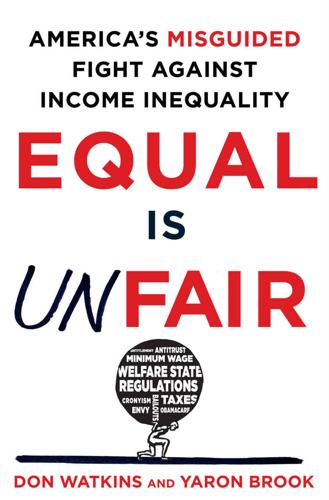
Equal Is Unfair: America's Misguided Fight Against Income Inequality
by
Don Watkins
and
Yaron Brook
Published 28 Mar 2016
Quoted in Sean Rossman, “Apple’s ‘The Woz’ Talks Jobs, Entrepreneurship,” Tallahassee Democrat, November 6, 2014, http://www.tallahassee.com/story/news/local/2014/11/05/apples-woz-talks-jobs-entrepreneurship/18561425/ (accessed April 13, 2015). 11. Quoted in Alec Hogg, “Apple’s ‘Other’ Steve—Wozniak on Jobs, Starting a Business, Changing the World, and Staying Hungry, Staying Foolish,” BizNews.com, February 17, 2014, http://www.biznews.com/video/2014/02/17/apples-other-steve-wozniak-on-jobs-starting-a-business-changing-the-world/ (accessed April 13, 2015). 12. Walter Isaacson, Steve Jobs (New York: Simon & Schuster, 2011), p. 295. 13. Ibid., pp. 308, 318. 14. Ibid., p. 317. 15.
…
And it can be amazing for everyone, because it turns out that the way we improve our lives—ingenuity and effort—is not a fixed-sum game, where we battle over a static amount of wealth. We produce wealth, and there is no limit to how much wealth we can produce. Who Created the Modern World? In his autobiography, Apple cofounder Steve Wozniak, or Woz, as he’s usually called, describes how his dad, an engineer, would explain to the four-year-old Woz how electronics worked. “I remember sitting there and being so little, and thinking: ‘Wow, what a great, great world he’s living in,’” Woz recalls. “I mean, that’s all I thought: ‘Wow.’ For people who know how to do this stuff—how to take these little parts and make them work together to do something—well, these people must be the smartest people in the world. . . .
…
Whatever it is, you do productive work in exchange for money, which you use to buy the dizzying array of things that other people produce. But that’s only part of the story. Not all work is equally productive. Some of us create a little wealth. Some of us create a lot. A tiny handful, like Steve Wozniak, create so much that their names go down in the history books. Think of some of the things that make your life wonderful. Your cell phone, your computer, the Internet? You can thank Robert Noyce and Jack Kilby, who invented the integrated circuit. The car that took you to work? You can thank Henry Ford, who transformed the automobile from a curiosity of the rich into a mass-market product.
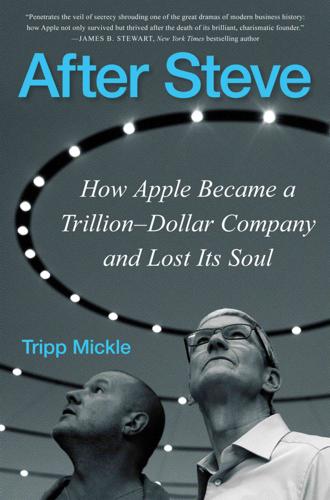
After Steve: How Apple Became a Trillion-Dollar Company and Lost Its Soul
by
Tripp Mickle
Published 2 May 2022
Working from his parents’ ranch home in Los Altos, California, he and his friend Steve Wozniak, a self-taught engineer, developed one of the first computers for the masses, a gray box with a keyboard and power supply that could display graphics. In 1977, their company became formally incorporated as Apple Computer Inc., a name inspired by Jobs’s favorite band, the Beatles, and their record label, Apple Records. Jobs’s brazen salesmanship of their computers was dismissed by some as all pitch, no substance, but the Apple II computer became one of the first commercially successful PCs, earning the company $117 million in annual sales before it went public in 1980.
…
COOK LANDED AT IBM at the dawn of the PC age. Working from a California garage, his future boss, Steve Jobs, together with Steve Wozniak, had popularized the personal computer. Its widespread appeal had inspired the world’s technology heavyweight, IBM, to broaden its business line from the colossal mainframe machines that businesses and universities used to the computers people were putting into their homes. With a mandate from on high, two IBM managers, Philip “Don” Estridge and William Lowe, led the development of an Apple II rival that buyers could configure as they wished with the software and the disk drive of their choosing.
…
Their critical eyes fueled an unspoken competition, colleagues said. Each wanted to beat the other in catching minor flaws that would make an Apple product fall short of the greatness to which they both aspired. Jobs was skilled at finding creative partners. Apple had sprouted out of his partnership with Steve Wozniak. His relationship with Ive over the next few years would become central to his second act at Apple. They balanced each other like Jobs’s favorite bandleaders, the more cynical John Lennon and the more sentimental Paul McCartney. Whereas Jobs was voluble, direct, and insistent, Ive was quiet, steady, and patient.

The Code: Silicon Valley and the Remaking of America
by
Margaret O'Mara
Published 8 Jul 2019
McKenna was unfazed by Apple’s garage setting and the co-founders’ scraggly looks. He’d worked with “lots of strange people” in the Valley already, and he was familiar with the Homebrew scene and the intriguing little enterprises bubbling up from it. The first meeting, however, was a bust. The Steves wanted help placing a Woz-authored article on the Apple II in Byte. It turned out that Steve Wozniak was much better at building elegant motherboards than crafting accessible prose; the piece was a rambling mess better suited for the hobbyist crowd back over at Dr. Dobb’s. McKenna told them it would have to be rewritten, and an offended Woz refused. Then I have nothing to offer you, replied McKenna.9 But Steve Jobs was not one to take no for an answer.
…
“Six people had already built their own computers, and almost everyone else wanted to.”3 The meeting attracted many of the usual suspects. Lee Felsenstein drove down from Berkeley. But it also drew in some new faces. Coming in from Cupertino was a former phone phreaker who’d spent his college years selling marginally legal “blue boxes” door to door in his dorm with a high school buddy. His name was Steve Wozniak, and his buddy’s name was Steve Jobs.4 Part swap meet, part intelligence gathering, part networking session, the biweekly Homebrew meetings quickly morphed into a local phenomenon. The second meeting moved from French’s garage to John McCarthy’s Stanford artificial-intelligence operation, then spilled out to the auditorium at the Stanford Linear Accelerator Center on Sand Hill Road, attracting hundreds of people each month.
…
Featuring shakily hand-drawn portraits of club members (beards, long hair, and Coke-bottle glasses predominated), first-name references to meeting participants, and rough-and-ready page layouts, the newsletters echoed the PCC in their chatty informality, even as the Homebrew Computer Club grew in size and influence. Liza Loop stood out in the crowd. She was the only woman on the early Homebrew membership roster, and she was a computer newbie. To encourage swapping and sharing, Moore’s newsletters included blurbs from members about their skills and needs. Steve Wozniak’s was typical, showcasing dizzying technical virtuosity: “have TVT[ypewriter] of my own design . . . have my own version of Pong,” he wrote. “Working on a 17 chip TV chess display (includes 3 stored boards); a 30 chip TV display. Skills: digital design, interfacing, I/O devices, short on time, have schematics.”

A People’s History of Computing in the United States
by
Joy Lisi Rankin
Increasingly, people would have to purchase computers and software (now, devices and apps) for their personal and social computing. BASIC also figures prominently in the history of Apple. Steve Wozniak produced his own “Integer BASIC” for his homemade computer, built around MOS Technology’s 6502 microprocessor chip; he shared Integer BASIC , and he even published programs in Dr. Dobb’s Journal.29 When Wozniak’s high school chum Steve Jobs saw the computer, he proposed they team up to assemble and sell them. They named the computer Apple, and soon began working on a new version, the Apple II. Although Apple declared its philosophy 238 A People’s History of Computing in the United States was “to provide software for our machines f ree or at minimal cost,” Apple sought (aggressively) to sell its hardware.30 W hether they w ere called home computers, hobby computers, microcomputers, or personal computers, they were consumer products, purveyed by Steve Jobs.
…
International Business Machines, much more familiar as IBM, dominated the era when computers were the remote and room-size machines of the military-industrial complex. Then, around 1975, along came the California hobbyists who created personal computers and liberated us from the monolithic mainframes. They were young men in the greater San Francisco Bay Area, and they tinkered in their garages. They started companies: Steve Jobs and Steve Wozniak established Apple; Bill Gates and Paul Allen developed Microsoft. Then, in the 1990s, along came the Internet to connect all of t hose personal computers, and the people using them. Another round of eccentric nerds (still all young white men)—Jeff Bezos, Sergey Brin, Larry Page, and Mark Zuckerberg among them—gave us Amazon, Google, Facebook, and the fiefdoms of Silicon Valley.
…
PLATO’s revolutionary plasma screens attracted the investment of the Control Data Corporation, which tried (unsuccessfully) to market its own version of the PLATO system to schools and universities. The BASIC programs shared freely around the Dartmouth network and on the pages of the People’s Computer Company newsletter fueled the imaginations of many—including Steve Wozniak and Bill Gates. Gates first learned to program in BASIC , the language on which he built his Microsoft empire. Wozniak adapted Tiny BASIC into Integer BASIC to program his homemade computer, the computer that attracted the partnership of Steve Jobs and launched Apple. And the Minnesota software library, mostly BASIC programs including The Oregon Trail, proved to be the ideal complement for the hardware of Apple Computers.

Visual Thinking: The Hidden Gifts of People Who Think in Pictures, Patterns, and Abstractions
by
Temple Grandin, Ph.d.
Published 11 Oct 2022
We mostly agree that maintaining and improving infrastructure is critical, but are we identifying, encouraging, and training the builders, welders, machinists, and engineers to manifest it? In other words, where are today’s clever engineers? From there we’ll look at the brilliant collaborations between verbal and visual thinkers, including the work of Richard Rodgers and Oscar Hammerstein, Steve Jobs and Steve Wozniak, and architect Rem Koolhaas and engineer Cecil Balmond. We’ll look at studies that show how diverse thinkers advantage teams. Then we’ll explore the intersection of genius, neurodiversity, and visual thinking. Here we’ll describe artists and inventors, among them many visual thinkers and some on the autism spectrum as well.
…
Theoretical physicist Stephen Hawking took apart model trains and airplanes before making a simple computer out of recycled clock and telephone parts. Pioneering computer scientist and mathematician Grace Murray Hopper took apart all seven of the clocks in her family home. You probably wouldn’t be happy if your teen took apart your laptop, though you might be happier if he or she turned out to be the next Steve Wozniak. With adults, I suggest taking what I call the IKEA Test to help identify where you fall on the visual-verbal spectrum. It’s not strictly scientific, but it’s a fairly reliable shortcut to separating the more verbally inclined from the more visually inclined. Here’s the test: You buy a piece of furniture and are ready to put it together: Do you read the instructions or follow the pictures?
…
Grandfather liked to say, somewhat judgmentally, that original ideas did not come from company men, because company men all think in a similar way. They can develop, refine, and market an idea but cannot originate it. Of the five major tech companies, four started as a garage operation or in a college dorm room, with two brilliant minds tinkering and dreaming together: Steve Jobs and Steve Wozniak created Apple, Bill Gates and Paul Allen created Microsoft, Sergey Brin and Larry Page created Google, and Mark Zuckerberg and Eduardo Saverin created Facebook. In the late 1930s, the Sperry Corporation hired two brothers, Russell and Sigurd Varian, who exemplify the concept of complementary minds.
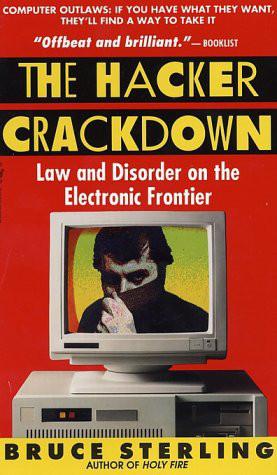
The Hacker Crackdown
by
Bruce Sterling
Published 15 Mar 1992
Before computers and their phone-line modems entered American homes in gigantic numbers, phone phreaks had their own special telecommunications hardware gadget, the famous "blue box." This fraud device (now rendered increasingly useless by the digital evolution of the phone system) could trick switching systems into granting free access to long-distance lines. It did this by mimicking the system's own signal, a tone of 2600 hertz. Steven Jobs and Steve Wozniak, the founders of Apple Computer, Inc., once dabbled in selling blue-boxes in college dorms in California. For many, in the early days of phreaking, blue-boxing was scarcely perceived as "theft," but rather as a fun (if sneaky) way to use excess phone capacity harmlessly. After all, the long-distance lines were JUST SITTING THERE....
…
They have funds to burn on any sophisticated tool and toy that might happen to catch their fancy. And their fancy is quite extensive. The Deadhead community boasts any number of recording engineers, lighting experts, rock video mavens, electronic technicians of all descriptions. And the drift goes both ways. Steve Wozniak, Apple's co-founder, used to throw rock festivals. Silicon Valley rocks out. These are the 1990s, not the 1960s. Today, for a surprising number of people all over America, the supposed dividing line between Bohemian and technician simply no longer exists. People of this sort may have a set of windchimes and a dog with a knotted kerchief 'round its neck, but they're also quite likely to own a multimegabyte Macintosh running MIDI synthesizer software and trippy fractal simulations.
…
Furthermore, proclaimed the manifesto, the foundation would "fund, conduct, and support legal efforts to demonstrate that the Secret Service has exercised prior restraint on publications, limited free speech, conducted improper seizure of equipment and data, used undue force, and generally conducted itself in a fashion which is arbitrary, oppressive, and unconstitutional." "Crime and Puzzlement" was distributed far and wide through computer networking channels, and also printed in the Whole Earth Review. The sudden declaration of a coherent, politicized counter-strike from the ranks of hackerdom electrified the community. Steve Wozniak (perhaps a bit stung by the NuPrometheus scandal) swiftly offered to match any funds Kapor offered the Foundation. John Gilmore, one of the pioneers of Sun Microsystems, immediately offered his own extensive financial and personal support. Gilmore, an ardent libertarian, was to prove an eloquent advocate of electronic privacy issues, especially freedom from governmental and corporate computer-assisted surveillance of private citizens.

Whole Earth: The Many Lives of Stewart Brand
by
John Markoff
Published 22 Mar 2022
The deal proved to be a disappointment when the market for how-to computing manuals was quickly oversubscribed, but its magnitude alerted an industry that remained notoriously conservative about using new technologies that there might be a market for books about personal computing. Brockman had come to San Francisco in the spring of 1983 to attend the West Coast Computer Faire, an annual computer hobbyist exhibition. (It had been at the first Faire, held in 1977, that a twenty-two-year-old Steve Jobs and his twenty-six-year-old partner, Steve Wozniak, had introduced the Apple II.) Brockman’s literary agency was focused on scientists and technology writers. Now he embarked on a strategy of trying to find and represent star programmers, selling their work to the new software publishing industry. He had recently added an image of a floppy disk to the logo on his company stationery.
…
When Brand was at Stanford, placing a transistor in contact with the telephone handset and grounding it against the hinges of the phone booth produced a dial tone and—presto!—you were able to make a free phone call. Schooled in basic electronics by his ham-radio-operator father, Brand obtained a stack of the necessary transistors from Zack Electronics, a local supply store, and passed them out freely. He was ahead of his time: thirteen years later Steve Jobs and Steve Wozniak would famously meet Captain Crunch (John Draper), an early hacker, who taught them how to build blue boxes, which they then sold in Wozniak’s dormitory at Berkeley. From the start his regular letters home were peppered with optimism and superlatives: “The class this year looks the best ever”; “the top man in the philosophy department”; “the liveliest guy in the classics department”; “experience excellent”; “a damn good man.”
…
When Brand had read the quote in a generally flattering Washington Post profile,[25] the words had stung. The Hackers Conference would become an annual event, drawing together a digital subculture that was passionate about the machines and programs they designed. The first gathering was marked by several heated debates that would continue long after everyone had gone home. While Apple cofounder Steve Wozniak argued that the term hacker represented the child in everyone, a well-known programmer named Brian Harvey warned there was a dark side as well, and the general public would soon come to see the word as synonymous with computer outlaws who broke into computers for sport and profit. Another important debate took place over the economic value of software.

Thinking Machines: The Inside Story of Artificial Intelligence and Our Race to Build the Future
by
Luke Dormehl
Published 10 Aug 2016
CHAPTER 2 Another Way to Build AI IT IS 2014 and, in the Google-owned London offices of an AI company called DeepMind, a computer whiles away the hours by playing an old Atari 2600 video game called Breakout. The game was designed in the early 1970s by two young men named Steve Jobs and Steve Wozniak, who later went on to start a company called Apple. Breakout is essentially a variation on the bat-and-ball tennis game Pong, except that instead of hitting the square ‘ball’ across the screen to another player, you fire it at a wall of bricks which smash on impact. The goal is to destroy all of the bricks.
…
He insisted on giving it spoken responses – which the original Siri app had not had – and got rid of the ability to type requests as well as just ask them, so as not to complicate the experience of using it. Apple also removed the bad language, and gave Siri the ability to pull information from Apple’s native iOS apps. Early Siri reviews were very positive when the iPhone 4s launched in 2011. Over time, however, cracks began to show. Embarrassingly, Apple co-founder Steve Wozniak – who left Apple decades earlier – was one vocal critic of the service, noting how Apple’s own-brand version seemed less intelligent than the original third-party Siri app. What had won him over about the first Siri, he said, was its ability to correctly answer the questions, ‘What are the five largest lakes in California?’
…
Epub ISBN: 9780753551653 Version 1.0 3 5 7 9 10 8 6 4 2 WH Allen, an imprint of Ebury Publishing, 20 Vauxhall Bridge Road, London SW1V 2SA WH Allen is part of the Penguin Random House group of companies whose addresses can be found at global.penguinrandomhouse.com Copyright © Luke Dormehl 2016 Cover design: Two Associates Luke Dormehl has asserted his right to be identified as the author of this Work in accordance with the Copyright, Designs and Patents Act 1988 First published by WH Allen in 2016 www.eburypublishing.co.uk A CIP catalogue record for this book is available from the British Library ISBN 9780753556740 Chapter 1 fn1 The answer, in case you want to prove yourself as smart as an AI, is 162. Chapter 3 fn1 Coffee, as it turns out, is a good starting point for a discussion about smart devices. Apple’s co-founder Steve Wozniak once said that he could never foresee a robot with enough general intelligence to walk into a strange house and make a cup of coffee. Exploring this hypothesis, some researchers now suggest the ‘coffee test’ as a potential measure for AGI, Artificial General Intelligence. I will discuss AGI later on in this book.
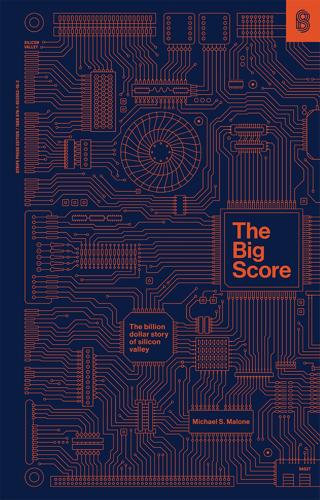
The Big Score
by
Michael S. Malone
Published 20 Jul 2021
In fact, though Silicon Valley is often described as a tight, incestuous family, Sporck knows very few of the presidents of the hot new computer, video game, and peripheral companies. Walking with a visitor across the lawn at the center of the company compound, Sporck asks about these young whiz kids, what they’re like. It is a week after Apple co-founder Steve Wozniak’s latest rock concert. Sporck says he doesn’t know any of these people, having only met Steve Jobs at some political event for Jerry Brown which Sporck found idiotic and walked out of. As the visitor describes some of the antics of these young tycoons, Sporck shakes his head. “You know,” he says, “us guys who started out at Fairchild and built all of these semiconductor companies, you know, when you get right down to it, we’re a pretty conservative, old-fashioned bunch.
…
But there has always been that insanity factor in the society of electrical engineers, a structural weakness that, given the right external pressure, can crack and send the individual crashing down into perdition, or at least a good time. Lee De Forest was an early case in point, with his run-ins with courts and his infatuation with movie stars. Shockley is another case, with his racial theories and genius sperm banks. The latter-day case, of course, is Steve Wozniak, with his rock festivals and Datsun commercials. For the most part, these occasional bouts with pixilation in the ranks were overwhelmed by the predominating soberness of the profession as a whole. This changed, however, with the rise of the modern entrepreneur, the man or woman who was just as much a businessperson as a scientist, who not only had to design the product but had to sell it to a skeptical market.
…
This one is built around an Alpha Beta supermarket, a main-line market that gets the folks who can’t afford Petrini’s. This shopping center also sports a Farrell’s Ice Cream Parlor, a Velvet Turtle restaurant, a renowned Szechuan restaurant, a video cassette store, and a thriving computer store owned by Apple founder Steve Wozniak’s brother. The fourth corner contains a bank and the only two-story building around: an office complex that holds, among others, the West Coast bureau of Hayden Publishing (Popular Computing, Electronic Design). Past Mary, Fremont passes another gas station. Unlike its subdued competitor down the road, this one is a self-serve, with an attached quick-stop market.
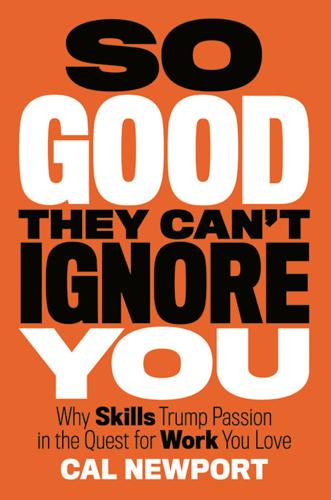
So Good They Can't Ignore You: Why Skills Trump Passion in the Quest for Work You Love
by
Cal Newport
Published 17 Sep 2012
It’s at this point that Jobs’s ascent begins to accelerate. He takes on $250,000 in funding from Mark Markkula and works with Steve Wozniak to produce a new computer design that is unambiguously too good to be ignored. There were other engineers in the Bay Area’s Homebrew Computer Club culture who could match Jobs’s and Wozniak’s technical skill, but Jobs had the insight to take on investment and to focus this technical energy toward producing a complete product. The result was the Apple II, a machine that leaped ahead of the competition: It had color graphics; the monitor and keyboard were integrated inside the case; the architecture was open, allowing rapid expansion of memory and peripherals (such as the floppy disk, which the Apple II was the first to introduce into mainstream use).
…
At one point, he left his job at Atari for several months to make a mendicants’ spiritual journey through India, and on returning home he began to train seriously at the nearby Los Altos Zen Center. In 1974, after Jobs’s return from India, a local engineer and entrepreneur named Alex Kamradt started a computer time-sharing company dubbed Call-in Computer. Kamradt approached Steve Wozniak to design a terminal device he could sell to clients to use for accessing his central computer. Unlike Jobs, Wozniak was a true electronics whiz who was obsessed with technology and had studied it formally at college. On the flip side, however, Wozniak couldn’t stomach business, so he allowed Jobs, a longtime friend, to handle the details of the arrangement.
…
Using this trio as our running example, I can now ask what it is specifically about these three careers that makes them so compelling? Here are the answers that I came up with: TRAITS THAT DEFINE GREAT WORK Creativity: Ira Glass, for example, is pushing the boundaries of radio, and winning armfuls of awards in the process. Impact: From the Apple II to the iPhone, Steve Jobs has changed the way we live our lives in the digital age. Control: No one tells Al Merrick when to wake up or what to wear. He’s not expected in an office from nine to five. Instead, his Channel Island Surfboards factory is located a block from the Santa Barbara beach, where Merrick still regularly spends time surfing. ( Jake Burton Carpenter, founder of Burton Snowboards, for example, recalls how negotiations for the merger between the two companies happened while he and Merrick waited for waves in a surf lineup.)
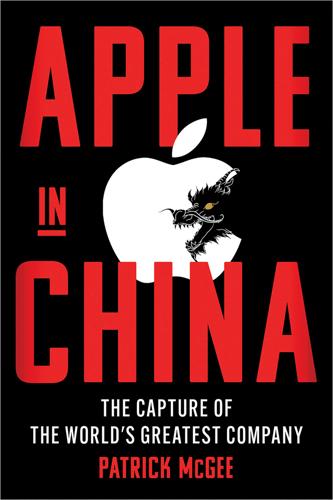
Apple in China: The Capture of the World's Greatest Company
by
Patrick McGee
Published 13 May 2025
Apple itself could have played this dominant role; in fact, it had played this role. At the behest of Steve Wozniak—overruling Jobs—the Apple II featured an open architecture with eight expansion slots and a floppy drive. This allowed third-party software and hardware companies to build applications for it, widening its appeal beyond hobbyists and gamers to the workplace. That openness gave rise, in October 1979, to a breakthrough digital spreadsheet tool, VisiCalc, the first “killer app” for personal computers. Along with EasyWriter, an early word processor, VisiCalc helped transform the Apple II from a plaything to a workhorse. The openness of the Apple II was a unique feature and proved critical to its success.
…
The Threat from Boca Raton—and Huntsville In a way, it was amazing Apple had made it this far against a field of rivals who could achieve lower cost and better distribution for every computer they sold. Apple’s survival was testament to the twin and somewhat contradictory forces of its founders. The Steve Wozniak–led Apple II computer, released in 1977, was the first personal computer to define a standard for others to follow, and it would be Apple’s number one revenue driver for an entire decade. The second force was the advanced nature of the Macintosh operating system (OS). It really was a decade ahead of its time when, in 1984, a boyish and handsome Steve Jobs, then just twenty-eight, unveiled the Mac with dramatic flair to a packed auditorium.
…
It lacked much third-party support, so it was even more isolated than the Mac. Jobs had commissioned an expensive, inefficient factory capable of handling 10,000 units per month—far more capacity than it would ever need. The poor decisions highlight the difficult-to-grasp nature of his peculiar genius. Whereas the brilliance of Apple cofounder Steve Wozniak was tangible—he could disassemble a computer, then rebuild it to work faster and with fewer parts—Jobs lacked such practical skills. But through instinct, passion, and an uncompromising vision, he could lead a team to build “insanely great” products. When things weren’t going well, however, his idiosyncratic traits felt overbearing and his taste could seem arbitrary.
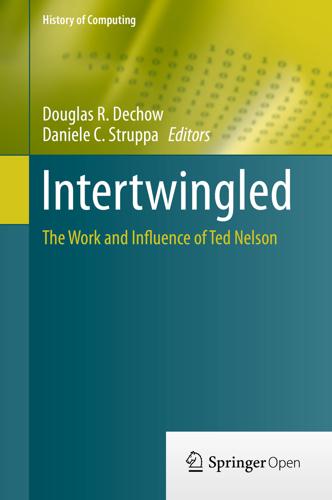
Intertwingled: The Work and Influence of Ted Nelson (History of Computing)
by
Douglas R. Dechow
Published 2 Jul 2015
Forty years after Computer Lib, computers are far more sophisticated and the networks among digital objects are much richer and more complex. It is time to revisit fundamental assumptions of networked computing, such as the directionality of links, a point made by multiple speakers at the symposium—Wendy Hall, Jaron Lanier, Steve Wozniak, and Rob Akcsyn amongst them.1 Fig. 10.3Ordinary hypertext, with multi-directional links. From Literary Machines (Used with permission) 10.2.3 Managing Research Data Managing research data is similarly a problem of defining and maintaining relationships amongst multi-media objects. Research data do not stand alone.
…
Wing JM (2006) Computational thinking. Commun ACM 49(3) 18. Wozniak S (2014) In “Intertwingled: afternoon session #2.” Chapman University, Orange, California. Video timecode: 58:14. http://ibc.chapman.edu/Mediasite/Play/52694e57c4b546f0ba8814ec5d9223ae1d Footnotes 1For example, as Steve Wozniak said at Intertwingled, “At our computer club, the bible was Computer Lib” — referring to the Homebrew Computer Club, from which Apple Computer and other major elements of the turn to personal computers emerged [18]. 2“Computational thinking is the process of recognising aspects of computation in the world that surrounds us, and applying tools and techniques from Computer Science to understand and reason about both natural and artificial systems and processes” [5]. 3“Computational Media” has recently emerged as a name for the type of work that performs this interdisciplinary integration [15]. 4Kodu is both an influential system itself and the basis of Microsoft’s Project Spark, launched in October 2014. 5The first stage of our work is described in “Say it With Systems” [4].
…
From the age of about three or four I was particularly fascinated by “exclusive or” light switches, where you have a room with the need for switches at two different doors and so they are wired up in such a way that both switches control the light and you can turn it on or off from either door. As a child I then went on to explore in sequence: electricity, electronics, digital electronics and early computers. We had ancient computers at my school. We had a PDP-8 and then an LSI-11 and an Apple II and so on up through the history of computers. I was interested in each level of hardware: how the physics of transistors worked, how digital circuits were put together, and how CPUs operated. When I was young, I designed a simple CPU and a simple operating system. I asked my brother to sit underneath a desk, fed him instructions, and had him execute them.

Stakeholder Capitalism: A Global Economy That Works for Progress, People and Planet
by
Klaus Schwab
Published 7 Jan 2021
Governments and companies must invest more in continuous retraining of workers, unions must be stronger but have a cooperative approach to business and government, and workers themselves should be positive and flexible about future economic challenges they and their country face. A Changing Business Landscape Tim Wu was still in elementary school in 1980, when he was one of the first of his class to get a personal computer: the Apple II. The now iconic computer propelled creators Steve Jobs and Steve Wozniak to stardom and heralded a new era in technology. But for Tim and his brother, the Apple II was first and foremost an exciting way to get acquainted with a new technology. “My brother and I loved Apple, we were obsessed with it,” Wu told us.31 The two preteens would make it their hobby to get the computers chips out, reprogram them, and put them back in.
…
Kahn, The Yale Law Journal, January 2017 34 “Big Tech Has Too Much Monopoly Power—It's Right to Take It On,” Kenneth Rogoff, The Guardian, April 2019, https://www.theguardian.com/technology/2019/apr/02/big-tech-monopoly-power-elizabeth-warren-technology; Quote: “Here are titles of some recent articles: Paul Krugman's “Monopoly Capitalism Is Killing US Economy,” Joseph Stiglitz's “America Has a Monopoly Problem—and It's Huge,” and Kenneth Rogoff's “Big Tech Is a Big Problem”; “The Rise of Corporate Monopoly Power,” Zia Qureshi, Brookings, May 2019, https://www.brookings.edu/blog/up-front/2019/05/21/the-rise-of-corporate-market-power/. 35 “Steve Wozniak Says Apple Should've Split Up a Long Time Ago, Big Tech Is Too Big,” Bloomberg, August 2019, https://www.bloomberg.com/news/videos/2019-08-27/steve-wozniak-says-apple-should-ve-split-up-a-long-time-ago-big-tech-is-too-big-video. 36 Some scholars do dispute this notion. Yuval Noah Harari, for example, is much less upbeat about the impact of the agricultural revolution on the quality and quantity of food supply on people. 37 A Tale of Two Cities, Charles Dickens, Chapman & Hall, 1859. 38 “The Emma Goldman Papers,” Henry Clay Frick et al., University of California Press, 2003, https://www.lib.berkeley.edu/goldman/PublicationsoftheEmmaGoldmanPapers/samplebiographiesfromthedirectoryofindividuals.html. 39 “Historical Background and Development Of Social Security,” Social Security Administration, https://www.ssa.gov/history/briefhistory3.html. 40 “Standard Ogre,” The Economist, December 1999, https://www.economist.com/business/1999/12/23/standard-ogre. 41 “The Presidents of the United States of America”: Lyndon B.
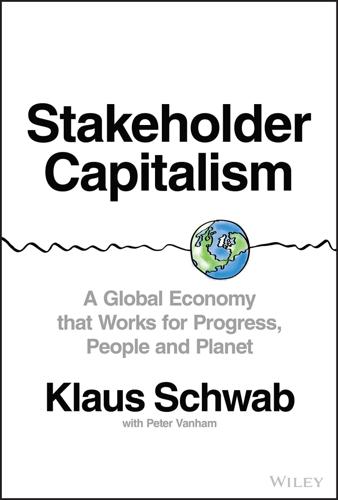
Stakeholder Capitalism: A Global Economy That Works for Progress, People and Planet
by
Klaus Schwab
and
Peter Vanham
Published 27 Jan 2021
Governments and companies must invest more in continuous retraining of workers, unions must be stronger but have a cooperative approach to business and government, and workers themselves should be positive and flexible about future economic challenges they and their country face. A Changing Business Landscape Tim Wu was still in elementary school in 1980, when he was one of the first of his class to get a personal computer: the Apple II. The now iconic computer propelled creators Steve Jobs and Steve Wozniak to stardom and heralded a new era in technology. But for Tim and his brother, the Apple II was first and foremost an exciting way to get acquainted with a new technology. “My brother and I loved Apple, we were obsessed with it,” Wu told us.31 The two preteens would make it their hobby to get the computers chips out, reprogram them, and put them back in.
…
Kahn, The Yale Law Journal, January 2017 34 “Big Tech Has Too Much Monopoly Power—It's Right to Take It On,” Kenneth Rogoff, The Guardian, April 2019, https://www.theguardian.com/technology/2019/apr/02/big-tech-monopoly-power-elizabeth-warren-technology; Quote: “Here are titles of some recent articles: Paul Krugman's “Monopoly Capitalism Is Killing US Economy,” Joseph Stiglitz's “America Has a Monopoly Problem—and It's Huge,” and Kenneth Rogoff's “Big Tech Is a Big Problem”; “The Rise of Corporate Monopoly Power,” Zia Qureshi, Brookings, May 2019, https://www.brookings.edu/blog/up-front/2019/05/21/the-rise-of-corporate-market-power/. 35 “Steve Wozniak Says Apple Should've Split Up a Long Time Ago, Big Tech Is Too Big,” Bloomberg, August 2019, https://www.bloomberg.com/news/videos/2019-08-27/steve-wozniak-says-apple-should-ve-split-up-a-long-time-ago-big-tech-is-too-big-video. 36 Some scholars do dispute this notion. Yuval Noah Harari, for example, is much less upbeat about the impact of the agricultural revolution on the quality and quantity of food supply on people. 37 A Tale of Two Cities, Charles Dickens, Chapman & Hall, 1859. 38 “The Emma Goldman Papers,” Henry Clay Frick et al., University of California Press, 2003, https://www.lib.berkeley.edu/goldman/PublicationsoftheEmmaGoldmanPapers/samplebiographiesfromthedirectoryofindividuals.html. 39 “Historical Background and Development Of Social Security,” Social Security Administration, https://www.ssa.gov/history/briefhistory3.html. 40 “Standard Ogre,” The Economist, December 1999, https://www.economist.com/business/1999/12/23/standard-ogre. 41 “The Presidents of the United States of America”: Lyndon B.
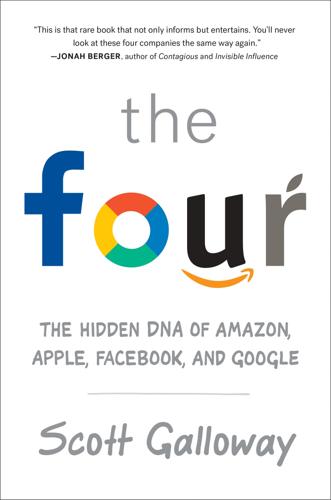
The Four: How Amazon, Apple, Facebook, and Google Divided and Conquered the World
by
Scott Galloway
Published 2 Oct 2017
It was the best house in a shitty neighborhood, tech hardware. A world of cables, geekware, acronyms, and low margins. In the early days, Apple simply made a more intuitive computer than its competitors. Steve Jobs’s notions about elegant packaging only appealed to a minority of customers; it was Steve Wozniak’s architecture that drew the rest. Back then, the company appealed largely to consumers’ brains. Many early Apple lovers were geeks (which did nothing for its sex appeal). Apple, to its credit, gazed across the tracks at luxury town and thought: Why not? Why can’t we be the best house in the best neighborhood?
…
The Builder King You would be amazed at how many people still believe, against all evidence, that Steve Jobs actually invented all of Apple’s great products. As if he sat at a lab table in the R&D department at Apple headquarters in Cupertino and soldered chips on a tiny motherboard . . . until boom! he gave the world the iPod. Actually, that was Steve Wozniak with the Apple 1 a quarter century before. Steve Jobs was a genius—but his gifts lay elsewhere. And nowhere was that genius more visible than when business experts everywhere were proclaiming the “disintermediation” of tech—the disappearance of the physical distribution and retail channels as they were replaced by the virtualization of e-commerce.
…
Attendees at the 1977 Western Computer Conference in San Francisco registered the difference the instant they walked into Brooks Hall: while all other new personal computer companies were offering stripped-out motherboards or ugly metal boxes, Jobs and Woz sat at their table behind the tan injected-plastic Apple II computers that would define the elegant Apple look. The Apple computers were beautiful; they were elegant. Most of all, in a world of hackers and gearheads, Apple’s products bespoke luxury. Luxury is not an externality; it’s in our genes. It combines our instinctive need to transcend the human condition and feel closer to divine perfection, with our desire to be more attractive to potential mates.
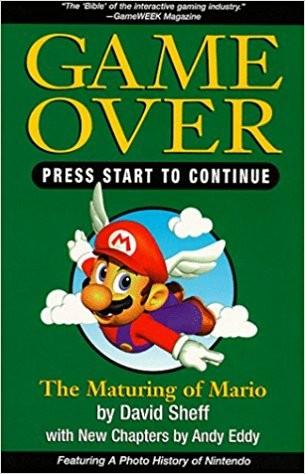
Game Over Press Start to Continue
by
David Sheff
and
Andy Eddy
Published 1 Jan 1993
He named it “Pong,” after the sonar-like “pongs” that sounded each time the ball made contact with the paddle. In the fall of 1972, Bushnell placed “Pong,” the first commercial video-arcade game, with a coin box bolted to the outside, in Andy Capp’s tavern, a popular Sunnyvale pool bar that holds a place in Silicon Valley lore rivaled only by the garage in which Steve Jobs and Steve Wozniak invented the Apple computer. Set beside a pinball machine, “Pong” was an oddity, a dark wood cabinet that held a black-and-white TV screen on which cavorted a white blip like a shooting star in a black sky. One of the bar’s patrons stood over the machine, examining it. “Avoid missing ball for high score,” read the only line of instructions.
…
Don Valentine’s money had helped build up production, but the returns lagged. A big success that followed “Pong” bailed them out. It was the first video car-racing game that was controlled by a steering wheel attached to the cabinet. The game, “Gran Trak,” gobbled up quarters even faster than “Pong.” A friend of Steve Jobs, Steve Wozniak, an engineer at Hewlett Packard, was a “Gran Trak” addict. Most evenings after work he headed to a pub, where he put great quantities of quarters, money he could not afford, into “Gran Trak.” Jobs began to sneak him into Atari’s production facility at night, where he could play the game for free.
…
When a successful hit was made, the on-screen tank exploded and the player controlling the disabled vehicle got an electric shock. “We did it so it wasn’t lethal or anything,” Bushnell notes. “But all of a sudden it was real. Certain people really liked it.” The company’s legal department, however, was not among them, and the game never made it out the door. Steve Wozniak came over to Atari to help Jobs build another “Pong”-based game for Bushnell called “Breakout.” A paddle hit a ball against a wall of bricks that disappeared, one by one, when hit, until there were none left. Bushnell liked the game, but the circuitry required too many expensive computer chips.

Experience on Demand: What Virtual Reality Is, How It Works, and What It Can Do
by
Jeremy Bailenson
Published 30 Jan 2018
Of course, trying to predict how a developing technology is going to affect culture is a speculative endeavor, at best. I was reminded of this while giving a talk at a technology conference in 2016 alongside Steve Wozniak, cofounder of Apple. Woz is high on VR—his first HTC Vive experience gave him goose bumps. But he cautions about overspecifying use cases. He told the story of the early days at Apple, and how when he and Steve Jobs made the Apple II, they conceived of it as a home appliance for computer enthusiasts, and believed users would use it to play games, or to store and access recipes in the kitchen. But it turned out it was good for unexpected applications.
…
An industry is already growing in Hollywood and Silicon Valley to explore VR as a space for fictional narratives, and within it storytellers from Hollywood and the gaming world, with technical help from technology companies, are beginning to take the tentative early steps in defining the grammar of virtual storytelling. Brett Leonard was a young filmmaker fresh from his hometown of Toledo, Ohio when he landed in Santa Cruz just before the beginning of the first VR boom in 1979. There he fell in with future Silicon Valley icons like Steve Wozniak, Steve Jobs, and Jaron Lanier. Jaron is also one of our most incisive and visionary thinkers about technology and its effects on human commerce and culture; at the time, as well as now, he was the very public face of virtual reality, a term he coined and popularized. Leonard was a big fan of technology and science fiction when his trip to Silicon Valley dropped him into what must have seemed the most interesting place in the world, amidst a group of people who were already playing a significant role in shaping the future.
…
At the time of the purchase, Oculus, founded by a 21-year-old self-taught engineer who had been mentored by the genius HMD maker Mark Bolas, had already reignited interest in VR among techies and gamers a few years earlier by making a lightweight and effective HMD prototype, the Oculus Rift, jury-rigged with smartphone screens and some clever programming. “I’ve seen a handful of technology demos in my life that made me feel like I was glimpsing into the future,” wrote Chris Dixon, an investor at the influential Silicon Valley venture capital firm Andreesen-Horowitz. “Apple II, the Macintosh, Netscape, Google, the iPhone, and—most recently—the Oculus Rift.”1 While the performance of this new consumer VR equipment was not quite as good as that of the state-of-the-art hardware in labs like mine, it was good enough to avoid the major performance problem that had bedeviled previous attempts at consumer VR—nausea-inducing lag.

Dogfight: How Apple and Google Went to War and Started a Revolution
by
Fred Vogelstein
Published 12 Nov 2013
Steve Jobs’s store was, naturally, the one in downtown Palo Alto at the corner of University Avenue and Kipling Street. It was a mile and a half from his house and he often showed up there unannounced when he was in town. The appropriate high-tech luminaries had already gathered when he arrived. Apple cofounder Steve Wozniak and early Apple employees Bill Atkinson and Andy Hertzfeld were already standing on line. But it also seemed as if Jobs had some internal flames to fan of his own, said one of the engineers who was there along with Grignon and many others who had worked on the project, including Fadell and Forstall.
…
The shift hit Dell so hard that by the beginning of 2013 it was trying to take itself private to retrench. Jobs was particularly satisfied with this development, a confidant said—even though in the context of the other upheavals the iPad was unleashing it was almost a footnote. Thirty-five years after starting Apple with Steve Wozniak, Jobs was finally doing what he had set out to do all along: he was transforming what consumers and businesses expected from their computers. The Macintosh in 1984—the first mainstream machine to use a mouse—was supposed to have been the machine that did this. It was supposed to have taken a complicated device—the PC—and made it a consumer product that anyone could use.
…
Fadell was getting ready to start his own company when Apple’s head of hardware, Jon Rubinstein, called, trying to recruit Fadell for a job that, astonishingly, he was not allowed to disclose. According to Steven Levy’s book The Perfect Thing, Fadell took the call on a ski slope in Colorado in January and expressed interest on the spot. He had idolized Apple since he was twelve, according to Levy. That was when he’d spent the summer of ’81 caddying to save up enough money to buy an Apple II. Weeks after Rubinstein’s call, Fadell joined Apple, only discovering then that he was being hired as a consultant to help build the first iPod. Grignon and others have said that Fadell’s rise never sat well with Forstall. Up until Fadell joined Apple, Jobs’s inner circle was composed of people he’d worked closely with at least from the beginning of his return in 1997, and in some cases from his days running NeXT, the computer company he’d founded after getting fired from Apple in 1985.
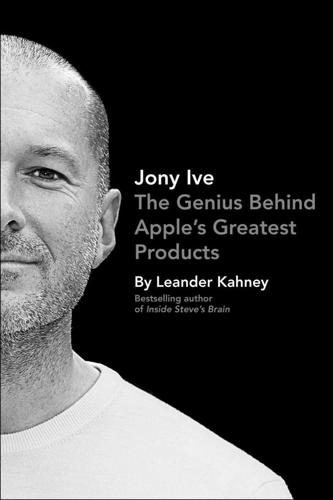
Jony Ive: The Genius Behind Apple's Greatest Products
by
Leander Kahney
Published 14 Nov 2013
With the much-anticipated twentieth anniversary of the Macintosh approaching, the decision was made to designate Spartacus as a special edition. Officially named the Twentieth Anniversary Macintosh, the new product was limited to a run of just twenty thousnd units. Apple unveiled it at Macworld in January 1997 and the first two units were given to Steve Jobs and Steve Wozniak, who had just returned to the company as advisers. To make it more memorable, the machine was hand-delivered to customers’ homes by specially trained “concierges,” who set up the machines, installed any expansion cards (along with the ugly hunchback) and showed users how to use them. “I think it is the first sensible computer design that we have seen in a long time,” said Henry Steiner, Hong Kong’s most eminent graphic designer.
…
It has the status value of a Porsche. The fact that the machine combines computer, television and stereo system is impressive.” Like the MessagePad, the Twentieth Anniversary Macintosh (TAM) won not only kudos but awards, including the Best of Category prize for I.D. magazine’s Annual Design Review. Steve Wozniak thought it was the perfect college machine “with the computer, TV, radio, CD player and more (AV even) all in one sleek machine.” He had several at his mansion in the hills of Los Gatos above Silicon Valley. By the time the machine was pulled from the market one year after launch, however, Wozniak seemed to be the only person on the planet who liked it.
…
In addition, it shouldn’t take up too much space on a desk, so Jobs and his design team decided it should have an unusual vertical orientation, with the disk drive below the monitor, instead of to the side like other machines at the time. The design process continued for several months, with a sequence of prototypes and endless discussions. Material evaluations led to the use of tough ABS plastic that was used to make LEGO bricks, which would give the new machine a fine, scratch-resistant texture. Troubled by the way earlier Apple IIs had turned orange in sunlight over time, Manock decided to make the Macintosh beige, initiating a trend that would last twenty years. As Jony would do in the next generation at Apple, Jobs paid close attention to every detail. Even the mouse was designed to reflect the shape of the computer, with the same proportions, and a single square button that corresponded to the shape and placement of the screen.
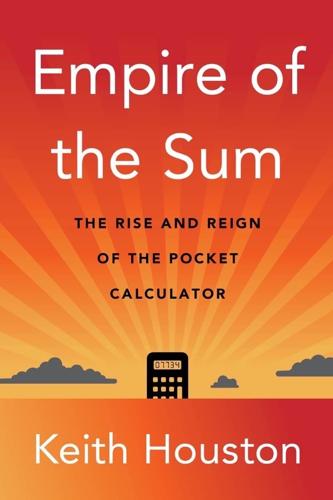
Empire of the Sum: The Rise and Reign of the Pocket Calculator
by
Keith Houston
Published 22 Aug 2023
Its disappearance as an artifact worthy of note has been so complete that it is difficult to say with any certainty, but the sheer pace of technological change may well have had something to do with it. During the 1970s, electronics, computing, and software were evolving so rapidly that the calculator was caught up in a jumble of cause and effect. For a flavor of that foment, consider that Apple’s co-founders, Steve Wozniak and Steve Jobs, met at HP during that company’s push into calculators. The Steves’ early microcomputers, the Apple and Apple II, helped spark the home-computer revolution, which in turn gave Dan Bricklin the opportunity to perfect the first computerized spreadsheet. Mitch Kapor, who had worked for Bricklin’s publisher, stole the spreadsheet crown with his own program, Lotus 1-2-3, and with it gave the IBM PC one of its first killer apps.
…
Engineers bought HP-35s with their own money, rather than wait for their employers to process purchase orders.49 College students sold their cars to fund HP-35s. General Electric asked to buy twenty thousand units.50 Scientists working for the U.S. Army invented a training course* as an excuse to buy HP-35s as “training tools.”51 Steve Wozniak, then an HP employee and later the co-founder of Apple Computer, was hypnotized by the sleek, pocketable machine.52 And the HP-35 breached frontiers both on Earth and in heaven: climbers took them to the top of Mount Everest; TV broadcast engineers brought them on Richard Nixon’s 1972 trade mission to China; and NASA astronauts flew with them to the Skylab† space station.53 In its first year, HP sold ten thousand HP-35s each month against initial predictions of just a tenth that figure, and would likely have sold more had there been any spare capacity to make them.
…
Dan Fylstra in particular was an enthusiastic booster of what were variously called “home,” “personal,” or “micro” computers, as distinct from traditional, room-sized mainframes and the fridge-sized “minicomputers” that were gradually replacing them. He showed Bricklin and Frankston what he considered to be the front runners: a Commodore PET, a Radio Shack TRS-80, and an Apple II. The last of these Fylstra had bought directly from Steve Jobs, one of Apple’s founding partners, and quite aside from the machine’s technical merits, he was convinced that Apple was destined for greater things. Accordingly, Bricklin borrowed Fylstra’s square, beige Apple II and set to work on a new prototype.22 It was on that Apple II that Bricklin’s electronic spreadsheet came to life—and where his wildest ideas went to die. Out went the heads-up display and in came the Apple’s monochrome monitor.

All Your Base Are Belong to Us: How Fifty Years of Video Games Conquered Pop Culture
by
Harold Goldberg
Published 5 Apr 2011
Tobey spent most of his time at the computer trying to make a game that was as close to real life as a computer in the 1980s could make it. Through word of mouth, Tobey’s flying and shooting game based on F-15 fighter jets came to the attention of Apple’s Steve Wozniak when Tobey was just sixteen. Wozniak was wowed at the sound, graphics, and game play. He kept saying, “This can’t be done on the Apple II. I can’t believe it. This can’t be done.” He gave Tobey a calling card and added a note to Trip Hawkins, which read, “Please consider this flight simulator as the finest Apple game ever done.” Hawkins didn’t waste any time. He wanted to make a deal right away.
…
It was precious gold to the principals of Atari, and it would only become more valuable as the decade progressed. Atari’s arcade business was still thriving, and Home Pong exceeded sales expectations, and demand exceeded supply. Alcorn hired an unkempt and unshaven Steve Jobs, who in turn asked his best friend, the diffident genius Steve Wozniak, for help with what would be one of Atari’s most popular additions to its ever expanding library. Without telling Alcorn, Bushnell asked Jobs to help him streamline the innards of a brick-breaking arcade game called Breakout. Bushnell wanted to save money because the chips used in each arcade machine were still pricey at the time.
…
Ken was on a roll, thinking he could do all the programming on the brand-new Apple II for which they had scrimped and saved $2,000. “I can write the algorithm that includes graphics,” he told her. “It hasn’t been done before, but I can do it.” He forgot all about his Fortran program. For the next three months, they rarely got any appreciable amount of sleep. Roberta was making more drawings in black-and-white while Ken worked well into the night to code the software engine, the way the game would understand what you typed in. In a eureka moment, he was even able to add a few colors, a first for an Apple II game. Roberta felt they were really on to something big; she told friends that every pore in her body was gushing with creativity.

The Power Law: Venture Capital and the Making of the New Future
by
Sebastian Mallaby
Published 1 Feb 2022
The fertility of the network was illustrated by the story of Apple, founded in 1976 by Steve Jobs and Steve Wozniak. On the face of it, Apple was an obvious candidate for venture investment, because scores of insiders already understood that the personal computer would be the next big thing in technology. Xerox’s Palo Alto Research Center, or PARC, had recognized the PC as “an idea whose time has arrived” and had produced a prototype complete with mouse and graphical interface. Intel and National Semiconductor had considered making a PC, and Steve Wozniak had twice offered the Apple I design to his employer, Hewlett-Packard.[1] But all four companies had decided not to build a PC, inhibited by what the business thinker Clayton Christensen termed the “innovator’s dilemma.”
…
Montagu said he would wait. “I have my toothbrush, and I can just lie here,” he repeated, as though dental hygiene were the only conceivable reason not to bed down in someone’s office. At a quarter to seven that evening, Mike Scott appeared again. “Mr. Montagu, you are really a fortunate guy,” he said. Steve Wozniak had decided to buy a house. To raise the cash, he wanted to sell some of his own equity. Montagu asked how much stock Wozniak was selling. “Four hundred and fifty thousand dollars,” came the answer. It was more stock by far than Venrock or Valentine had laid hands on. A giddy Montagu called Kramlich again.
…
The contrast between the coasts was crystallized in the story of Bob Metcalfe.[22] A self-styled “Viking-American,” with grandparents from Oslo, Bergen, Leeds, and Dublin, Metcalfe sported bushy strawberry-blond hair and wing tip loafers and called himself “a right-wing hippie.”[23] After studies at MIT and Harvard, he moved out west to Xerox PARC, where he seldom used an alarm clock, frequently pulled all-nighters at the lab, and invented a computer-networking technology called Ethernet. He was a ferociously competitive tennis player and a force of nature: he combined the promotional charisma of Steve Jobs with the engineering virtuosity of Steve Wozniak. But to Metcalfe’s immense frustration, Xerox showed no sign of building a business out of his Ethernet invention, nor did the company appear eager to promote such a free spirit up the managerial ladder.[24] So Metcalfe quit and founded a startup called 3Com, promising that Ethernet would link up personal computers in offices and living rooms across the nation.[25] Fifteen years earlier, an ambitious engineer like Metcalfe would have lined up a financial backer first, then summoned the courage to quit afterward.
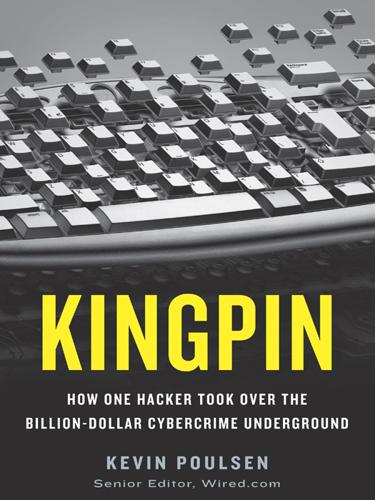
Kingpin: How One Hacker Took Over the Billion-Dollar Cybercrime Underground
by
Kevin Poulsen
Published 22 Feb 2011
The word “hacker” took on darker connotations in the early 1980s, when the first home computers—the Commodore 64s, the TRS-80s, the Apples—came to teenagers’ bedrooms in suburbs and cities around the United States. The machines themselves were a product of hacker culture; the Apple II, and with it the entire home computer concept, was born of two Berkeley phone phreaks named Steve Wozniak and Steve Jobs. But not all teenagers were content with the machines, and in the impatience of youth, they weren’t inclined to wait for grad school to dip into real processing power or to explore the global networks that could be reached with a phone call and the squeal of a modem.
…
Max says he did not consider himself an informant and only provided technical information. Chapter 4: The White Hat 1 The first people to identify themselves as hackers: The seminal work on the early hackers is Steven Levy, Hackers: Heroes of the Computer Revolution (New York: Anchor Press/Doubleday, 1984). Also see Steve Wozniak and Gina Smith, iWoz: From Computer Geek to Cult Icon: How I Invented the Personal Computer, Co-Founded Apple, and Had Fun Doing It (New York: W. W. Norton and Company, 2006). 2 Tim was at work one day: This anecdote was recalled by Tim Spencer. Max later recalled Spencer’s advice in a letter to his sentencing judge in Pittsburgh. 3 If there was one thing Max: Details of Max’s relationship with Kimi come primarily from interviews with Kimi. 4 Max went up to the city to visit Matt Harrigan: Harrigan’s business and his work with Max were described primarily by Harrigan, with some details confirmed by Max.
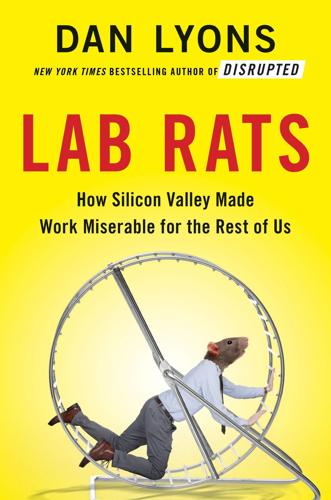
Lab Rats: How Silicon Valley Made Work Miserable for the Rest of Us
by
Dan Lyons
Published 22 Oct 2018
Bosses engaged in “management by wandering around,” a practice that struck Tom Peters when he studied HP and raved about the company’s way of doing things in his 1982 business classic, In Search of Excellence. By the 1970s, HP was a thriving organization that many in Silicon Valley (and beyond) wanted to emulate. Apple co-founder Steve Wozniak, who worked as an engineer at HP in the 1970s, later recalled: “We had such great camaraderie. We were so happy. Almost everyone spoke about it as the greatest company you could ever work for.” The 1970s brought another element to Silicon Valley—the idealistic values of the counterculture. “Power to the people” was the slogan of 1960s, and it was also the motto of the people who led the personal computer revolution in the 1970s.
…
Customers love Uber, but Uber operates a toxic workplace and exploits its drivers. Tesla makes very sexy electric cars, but by many accounts, Elon Musk behaves abominably toward his employees and has earned a reputation for being less than forthcoming with customers. “I don’t believe anything Elon Musk or Tesla says,” Apple co-founder Steve Wozniak, a disappointed Tesla owner, said in 2018. In the past few years I’ve come to the uncomfortable conclusion that, for various reasons mostly related to greed, the very people in Silicon Valley who talk so much about making the world a better place are actually making it worse—at least when it comes to the well-being of workers.
…
They might have become just another kooky old hippie couple living in the Bay Area except that in the early 1980s Mitch became fantastically rich. This happened almost by accident. After graduation in 1971 he spent a decade bouncing around. He taught Transcendental Meditation. He worked as a DJ. In 1978 he bought an Apple II computer and taught himself to write programs, which landed him a job at VisiCorp, a tiny software developer near Boston. In 1982, Mitch founded Lotus Development, named after the lotus position used in meditation, to sell a software program called Lotus 1-2-3, a spreadsheet that ran on the recently introduced IBM personal computer.
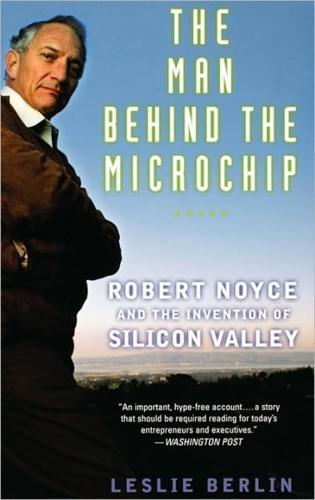
The Man Behind the Microchip: Robert Noyce and the Invention of Silicon Valley
by
Leslie Berlin
Published 9 Jun 2005
In exchange, he received a one-third ownership stake in Apple.47 One of Markkula’s first calls on behalf of Apple was to Noyce. “I want you to be aware of this,” Markkula said. “I’d like to present to the [Intel] board.” Noyce gave his approval and on the appointed day, Markkula and Steve Wozniak gave a presentation about the personal computer, an Apple II on hand for demonstration purposes. “If you want to participate in this in some way, say so,” Markkula told the board. “If you don’t, fine. But this Renewal 251 is something you should have in front of your consciousness.” Intel had not given much thought to the personal computer since Moore squelched Noyce and Gelbach’s plans to go head to head with Altair.
…
Clearly this was a company that needed her help. She agreed to consult for Apple.49 A few months into her consulting work, Bowers learned that Steve Wozniak wanted to sell some of his founders’ stock for $13 a share. She bought it from him. “Bob thought I was nuts,” she recalls. Noyce did not try to stop her from investing—they had long ago agreed that she could do what she liked with her money, and he could do the same with his—but he could not take Jobs and Wozniak seriously. Even Arthur Rock admits, “Steve Jobs and Steve Wozniak weren’t very appealing people in those days.” Wozniak was the telephone-era’s version of a hacker—he used a small box that emitted electronic tones to call around the world for free—and Steve Jobs’s ungroomed appearance was offputting to Noyce.
…
Noyce once said that “small entrepreneurs depend totally upon the infrastructure that is— has been—established . . . so that they can use those tools, those techniques, and go off and do something specialized.” This certainly was true of Apple Computer, which was financed by men associated with Fairchild and Intel and staffed with many people from Hewlett-Packard and Intel.46 Apple had gotten its start in 1976, when 19-year-old Jobs convinced his friend Steve Wozniak, who had developed a personal computer in his garage, to start a business with him. The two showed their computer to venture capitalist Don Valentine (a former Fairchild salesman), who suggested they contact Mike Markkula, recently retired (at age 34) from his job in Intel’s marketing group. Markkula, who had long dreamed of something like a personal computer—as a teenager, he had built a “programmable electronic sliderule”—invested $91,000 in the company.
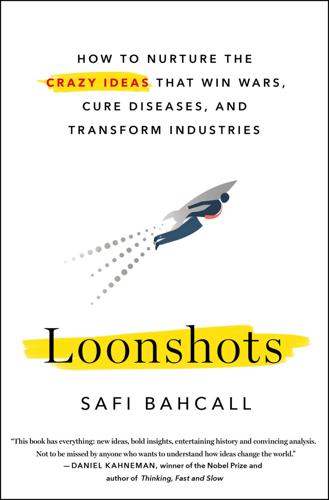
Loonshots: How to Nurture the Crazy Ideas That Win Wars, Cure Diseases, and Transform Industries
by
Safi Bahcall
Published 19 Mar 2019
During Steve Jobs’s first stint at Apple, he called his loonshot group working on the Mac “pirates” or “artists” (he saw himself, of course, as the ultimate pirate-artist). Jobs dismissed the group working on the Apple II franchise as “regular Navy.” The hostility he created between the two groups, by lionizing the artists and belittling the soldiers, was so great that the street between their two buildings was known as the DMZ—the demilitarized zone. The hostility undermined both products. Steve Wozniak, Apple’s cofounder along with Jobs, who was working on the Apple II franchise, left, along with other critical employees; the Mac launch failed commercially; Apple faced severe financial pressure; Jobs was exiled; and John Sculley took over (eventually rescuing the Mac and restoring financial stability).
…
By early 1993, nearly all the vice presidents at the company, including all five of Jobs’s original cofounders, had left. A Forbes article stated, “There are very few miracle workers in the business world, and it is now clear that Steve Jobs is not one of them.” WHEN MOSES DOUBLES DOWN The facts of Jobs’s forced exit from Apple in 1985, and his path to the mess at NeXT, have been well laid out. In 1975, Steve Wozniak combined a microprocessor, keyboard, and screen into one of the earliest personal computers. Jobs convinced Wozniak to quit his job and start a company. After some initial success with their Apple I and II, however, competitors quickly passed Apple by. In 1980, Atari and Radio Shack (TRS-80) sold roughly seven times as many computers as Apple.
…
Jobs proudly and publicly referred to his team, working on the Macintosh, as artists. He referred to the rest of the company, developing the Apple II franchise, as bozos. Apple II engineers took to wearing buttons with a circle and line running through an image of Bozo the Clown. Wozniak, an engineer with the demeanor of a teddy bear, was widely beloved at the company and in the industry. He resigned, openly complaining about the demoralizing attacks. Departures in the Apple II group became so common that one joke ran, “If your boss calls, be sure to get his name.” The toxicity spread. Key designers on the Macintosh side soon began leaving as well.

Alpha Girls: The Women Upstarts Who Took on Silicon Valley's Male Culture and Made the Deals of a Lifetime
by
Julian Guthrie
Published 15 Nov 2019
Women, outnumbered and overmatched, were mostly reduced to entertainers, companions, wives, or housekeepers. Things were not that different in the more recent gold rush. The Valley was always a region dominated by men, from William Hewlett, Dave Packard, Bob Noyce, Gordon Moore, Andy Grove, Larry Ellison, Steve Jobs, and Steve Wozniak to, decades later, in the twenty-first century, Larry Page, Sergey Brin, Mark Zuckerberg, Elon Musk, Tim Cook, Travis Kalanick, and Marc Benioff. Mary Jane, fueled by peanut butter sandwiches packed in wax paper for the two-day journey, was under no illusion that it would be easy to navigate the old boys’ club of Sand Hill Road and Silicon Valley.
…
* * * Her career after graduating from Stanford, more than a decade before, had started off so promising, and then she took a detour. Even before she finished her master’s degree, Magdalena had gone to seven job interviews and received seven offers. Her first interview had been with Steve Jobs and Steve Wozniak of Apple. The founders invited double-e students to the LOTS computer center to hear a pitch about their three-year-old company. If the students liked what they heard, they could stay and be interviewed. Jobs, wearing wire-rimmed glasses and jeans, told Magdalena and the other double-e students that working for Apple would be like “an extension of college.”
…
She believed that women were more likely to fund other women and that more women were needed at the decision-making table. Once she defined the focus on venture, Melinda wanted to understand what was keeping women out of the industry and what were the pathways in. Melinda had been drawn to tech personally because of an outstanding woman math teacher who was able to get ten Apple II computers into her Catholic girls’ school. She remembered the teacher asking the girls whether they wanted to learn to code in BASIC. Melinda took to coding immediately, finding it like solving a puzzle, something she’d always loved. She then got a summer job teaching kids how to program in LOGO.

The Simulation Hypothesis
by
Rizwan Virk
Published 31 Mar 2019
Nevertheless, the video game pioneers of that time persisted, squeezing every bit of performance out of the limited hardware and memory of the day to create these early arcade games. A well-known anecdote from Silicon Valley at the time involves future Apple Computer co-founders Steve Jobs and Steve Wozniak. Jobs worked for Nolan Bushnell, the founder of Atari, and promised his boss that he could build a certain game quickly and using limited memory resources. Bushnell was skeptical but gave him the project. At night, Jobs brought in his friend, Steve Wozniak, who, created the game at night after his full-time engineering job. Wozniak, of course, as the future creator of the first Apple computers, is acknowledged today as a hardware genius.
…
I found myself wondering how far this “simulated world” extended in all directions beyond the track. What happened when no one was playing the video game? Did the characters and the buildings still exist, or did they simply cease to exist? Although I learned to program rudimentary video games myself shortly thereafter when my parents bought my brother and I a Commodore 64 (and later, an Apple II), it would be many years before I understood video game development well enough to answer these types of questions. The first game I ever created was Tic Tac Toe, basically putting blocky lines on the screen and then figuring out how to get the computer to “draw” Xs and Os on the squares selected by the players.
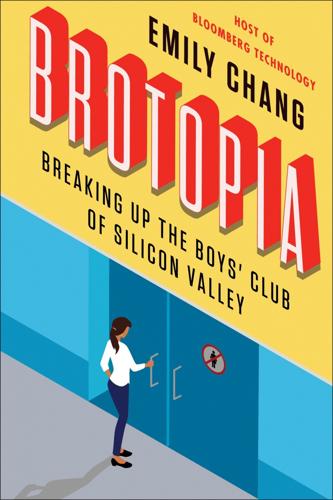
Brotopia: Breaking Up the Boys' Club of Silicon Valley
by
Emily Chang
Published 6 Feb 2018
As the number of overall computer science degrees picked back up leading into the dot-com boom, more men than women were filling those coveted seats. In fact, the percentage of women in the field would dramatically decline for the next two and a half decades. APPLE UPSETS THE NERD CART As women were leaving the tech world, a new type of tech hero was taking center stage. In 1976, Apple was co-founded by Steve Wozniak, your typical nerd, and Steve Jobs, who was not your typical nerd at all. Jobs exuded a style and confidence heretofore unseen in the computer industry. He had few technical skills—Wozniak handled all that—yet Jobs was a never-before-seen kind of tech rock star. He proved you could rise on the strength of other skills, such as conviction, product vision, marketing genius, and a willingness to take risks.
…
The cherry on top: when the troll responded inappropriately to a tweet in which I had tagged IBM CEO Ginni Rometty, after an interview I had conducted with her, Rometty herself was alerted with several cheerful notifications from Twitter. I’ve developed the requisite thick skin, and I use a common tactic for dealing with trolls: ignoring them. I quickly scroll past the vitriolic direct replies to my Twitter account, and I never, ever use Reddit. Once an interview I conducted with Apple’s co-founder Steve Wozniak ended up on Reddit, and the response was worse than unnerving. (For the same reason, many women in tech avoid using Hacker News, the prominent start-up incubator YCombinator’s official bulletin board that has since become one of the industry’s leading message boards; the trolls are there too.) Most important, I don’t respond to the haters.
…
“Oh, my gosh, this isn’t for me,” she said. “I don’t dream in code like they do.” WOMEN’S NARROW PATH GETS NARROWER Shy, antisocial boys in their coding caves weren’t glamorous, but starting in the late 1970s and early 1980s, the computer business suddenly was. It began when Apple released the Apple II and continued when, a couple of years later, IBM came out with the PC. In 1984, Apple brought the groundbreaking Macintosh to market, and in 1985 Microsoft released Windows 1.0. Thanks to these new machines and the realization that there were fortunes to be made, the field was suddenly heady with excitement.

How I Built This: The Unexpected Paths to Success From the World's Most Inspiring Entrepreneurs
by
Guy Raz
Published 14 Sep 2020
Having somebody who you totally trust, who’s totally committed, who shares your vision and yet has a little bit different set of skills, and also acts as a check on you—and just the benefit of sparking off of somebody who’s got that kind of brilliance—it’s not only made it fun, but it’s really led to a lot of success.” In a 1985 Playboy interview, Apple co-founder Steve Jobs talked about the importance of both his partner Steve Wozniak’s differing interests and their shared lack of a vision. “Neither of us had any idea that this would go anywhere,” Jobs said. “Woz was motivated by figuring things out. He concentrated more on the engineering and proceeded to do one of his most brilliant pieces of work, which was the disk drive that made the Apple II a possibility. I was trying to build the company . . . I don’t think it would have happened without Woz and I don’t think it would have happened without me.”
…
As for Warren Buffett and his part in that conversation with Bill Gates in 1998, he was in complete agreement about the importance of picking people: “I’ve had a partner like that, Charlie Munger, for a lot of years, and it does for me exactly what Bill is talking about.” As unlikely as many of these successful partnerships seem, to me at least, they do not appear to be entirely the product of chance. Adam and Eric were childhood friends. Gates and Allen went to high school together. Steve Wozniak lived across the street from Steve Jobs’s only friend at the Cupertino, California, high school Jobs attended. Jen Rubio and Steph Korey worked together. Charlie Munger worked in Warren Buffett’s grandfather’s store. There are also countless marriages at the center of the founding of great brands: Kate Spade, Dermalogica, Stacy’s Pita Chips, Drybar, Lonely Planet, Melissa & Doug, to name just a few.
…
“I was a premed major,” Michael told me, “and some of this was [a result of] the programming from my parents, because my father was a doctor, my older brother was a doctor, a lot of my cousins were doctors, and I always thought I’d be a doctor.” Except Michael had discovered computers several years earlier as a junior high school student, and they had quickly become his passion. He bought his first computer, an Apple II, when he was fifteen years old, and he took the whole thing apart to see how it worked. He was one of those kids. Then, as a premed freshman, he started upgrading off-the-shelf computers out of his dorm room. “It was just sort of a fun thing to do, a way to make some money,” he said. “I was buying new computers and souping them up and then reselling them.

Why Wall Street Matters
by
William D. Cohan
Published 27 Feb 2017
Objectively speaking, we learn from the Apple prospectus that there would be no Apple, at least in its present form, without Wall Street. The prospectus explains that Apple had a relatively large group of early investors who supported the company from its inception in 1976, when Steve Jobs and Steve Wozniak, the two founders, “designed, developed and assembled the Apple I, a microprocessor-based computer consisting of a single printed circuit board.” On January 3, 1977, Apple incorporated; three months later, it introduced the Apple II, which was similar to the Apple I but with a keyboard and a plastic cover. For the nine months leading up to the end of September 1977, Apple had a profit of almost $45,000. But Apple had big ambitions, as the prospectus makes clear, and achieving those ambitions required capital.
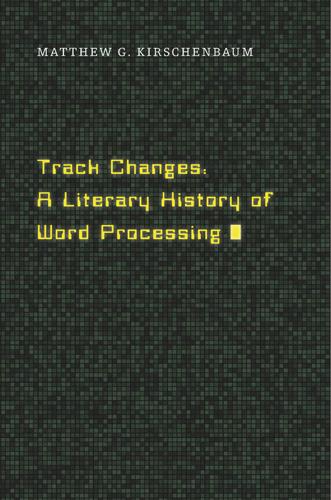
Track Changes
by
Matthew G. Kirschenbaum
Published 1 May 2016
Users’ groups were one of the fixtures of early computer culture. The first and most famous of them all was the Homebrew Computer Club, which met in the auditorium of Stanford University’s linear accelerator. Adam Osborne was a member, and at one of those now quasi-legendary gatherings Steve Wozniak had demonstrated his prototype for what eventually became the Apple II computer. But users’ groups were all very “homebrew”; they tended to coalesce organically, their members finding each other through notices tacked up in computer shops (or on virtual bulletin boards), ads in newsletters, and word of mouth. Typically they were tied together by an interest in a common system or product.
…
Beeching’s fanciful scenario would thus have already been familiar—mundane—to any office secretary who had been trained on Lexitron or its competitors’ equipment.2 The creation of a working “TV Typewriter” (TVT) also soon became a rite of passage for the home computer hobbyist. It was a key stepping stone for Steve Wozniak on the way to the Apple computer, and it featured prominently in the announcement for the first meeting of the Homebrew Computer Club: “Are you building your own computer? Terminal? T V Typewriter? I O [input/output] device? Or some other digital black-magic box?” read the ad that was posted around Silicon Valley in February 1975.3 Computers themselves, of course, compute: which is to say they work by fundamentally arithmetical principles.
…
Smith, and developed since 1990 by Eastgate Systems), and then the Web itself.67 Interactive fiction—so-called “text adventures,” which had a brief commercial vogue in the early 1980s through the success of a company named Infocom—have also increasingly been explored by scholars.68 Lori Emerson, among the best of recent academic critics, has carefully detailed the ways in which poets like bpNichol, Geof Huth, and Paul Zelevansky each leveraged the programmable capabilities of the early Apple II line of computers to craft innovative on-screen textual compositions.69 The texts thus produced are indeed striking, harbingers of a new aesthetic intimately tied to the procedural capabilities of digital media but also knowingly reaching back to Concrete Poetry, Surrealism, and other well-documented movements. Yet the Osborne 1, which debuted in 1981 (the year the Apple II became the best-selling computer on the consumer market), was likewise an important platform for writing, as we have already seen.
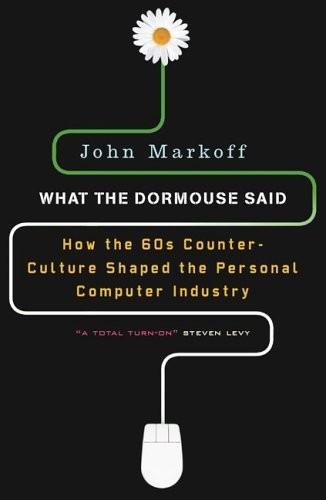
What the Dormouse Said: How the Sixties Counterculture Shaped the Personal Computer Industry
by
John Markoff
Published 1 Jan 2005
Or are you buying time on a time-sharing service? If so you might like to come to a gathering of people with like-minded interests. Exchange information, swap ideas, talk shop, help work on a project, whatever…13 One person who saw the flyer was Allen Baum, who was working at Hewlett-Packard at the time with his friend Steve Wozniak. The two had met in high school when Baum had seen Wozniak sitting in his homeroom class drawing strange graphics in a notebook. “What are you doing?” Baum asked. “I’m designing a computer,” was Wozniak’s reply. It turned out that Baum had on his own become intrigued with computers just months earlier after his father, who had moved the family from the East Coast, took a job at Stanford Research Institute.
…
At various times Engelbart has said that he found the original article in the library and at other times he has said he believed he first read the Life account of Vannevar Bush’s Memex. Whatever the case, it had a defining impact on him. 5.Vannevar Bush, “As We May Think,” Atlantic Monthly, July 1945. 6.Lowood and Adams, oral history. 7.Ibid. Twenty years later, a young Steve Wozniak, then a brand-new HP engineer, would ask the company if they wanted to sell a personal computer. HP said it wasn’t interested, and Wozniak went off to cofound Apple Computer. It was the second time the Silicon Valley pioneer missed an opportunity to define the future of computing. 8.Ibid. 9.Jack Goldberg, Stanford Research Institute, e-mail to author. 10.Author interview, Charles Rosen, Menlo Park, Calif., October 10, 2001. 11.Douglas C.
…
A frustrated Engelbart began to explore the idea of remotely connecting to the SDC computer from the Control Data minicomputer in Menlo Park using an early modem. Unfortunately his engineers were never able to make the system communicate reliably. As a result, for the next two years Engelbart’s fledgling Augmented Human Intellect Research Center began to build his system on a computer that had far less processing power than an Apple II of a decade and a half later. The Menlo Park computer used the magnetic-core memory that Engelbart, Crane, and English had all worked on improving in the fifties. It had a capacity of eight thousand twelve-bit characters—a little more than three pages of typed text—in its main memory. Instead of on a disk drive, it stored information permanently on a rotating drum that could hold thirty-two thousand characters.

Dealers of Lightning
by
Michael A. Hiltzik
Published 27 Apr 2000
Started in the proverbial Silicon Valley garage by Jobs and his high school classmate Steve Wozniak, Apple had successfully negotiated the transition in its product line from kit versions of Woz’s little personal computer to a more versatile version, the Apple II. This machine was unique in the hobbyist market. It came already assembled, with a keyboard (although it required a separate monitor). Shortly after Jobs’s appearance before Zarem’s group, Apple started bundling it with VisiCalc, a unique software program known as a financial spreadsheet—a “killer app” that would single-handedly turn the Apple II into a popular businessman’s tool. With fewer than forty employees in 1978, Apple was already one of the most sought-after investments among the small community of speculative private investors known as venture capitalists.
…
February: PARC engineers demonstrate for their colleagues a graphical user interface for a personal computer, including icons and the first use of pop-up menus, that will develop into the Windows and Macintosh interfaces of today. March 1: PARC’s permanent headquarters at 3333 Coyote Hill Road are formally opened. January 3: Apple Computer is incorporated by Steve Jobs and Steve Wozniak. August: Having perfected a new technology for designing high-density computer chips at PARC, Lynn Conway and Carver Mead begin drafting Introduction to VLSI Systems, a textbook on the technology that is written and typeset entirely on desktop publishing systems invented at the center. August 18: Xerox shelves a plan to market the Alto as a commercial project, closing the door to any possibility that the company will be in the vanguard of personal computing.
…
Sure enough, within months VisiCalc had transformed the Apple II into a commercial sensation. By contrast, at PARC, where funds had flowed so limitlessly that no one ever felt the urge to run “what-if” budget scenarios, the spreadsheet idea had not even occurred to the greatest software engineers in the world. What Simonyi found even more depressing was that VisiCalc was simple, intuitive, and fast—all the qualities he and his colleagues had strived for in their work over the past decade. “That alarmed me a lot, how good it was,” he remembered. “They were using even fewer cycles than the Alto to run it on the Apple II, way fewer.” Like Larry Tesler, Simonyi had discovered the power of low-end computing.

Elon Musk
by
Walter Isaacson
Published 11 Sep 2023
In addition, he came to a realization: he had a fanatic love of video games and the skills to make money creating them, but that was not the best way to spend his life. “I wanted to have more impact,” he says. King of the road One unfortunate trend in the 1980s was that cars and computers became tightly sealed appliances. It was possible to open up and fiddle with the innards of the Apple II that Steve Wozniak designed in the late 1970s, but you couldn’t do that with the Macintosh, which Steve Jobs in 1984 made almost impossible to open. Similarly, kids in the 1970s and earlier grew up rummaging under the hoods of cars, tinkering with the carburetors, changing spark plugs, and souping up the engines.
…
He thrived on crises, deadlines, and wild surges of work. When he faced tortuous challenges, the strain would often keep him awake at night and make him vomit. But it also energized him. “He is a drama magnet,” says Kimbal. “That’s his compulsion, the theme of his life.” * * * When I was reporting on Steve Jobs, his partner Steve Wozniak said that the big question to ask was Did he have to be so mean? So rough and cruel? So drama-addicted? When I turned the question back to Woz at the end of my reporting, he said that if he had run Apple, he would have been kinder. He would have treated everyone there like family and not summarily fired people.
…
After Musk took his turn zipping around and marveling at the car’s super-quick but silent acceleration, he agreed to invest $9 million more in the company. Whose company? One issue with startups, especially those with multiple founders and funders, is who should be in charge. Sometimes the alpha male wins, as when Steve Jobs marginalized Steve Wozniak and when Bill Gates did the same to Paul Allen. At other times it’s messier, especially when different players feel that they are the founder of a company. Both Eberhard and Musk considered themselves to be the main founder of Tesla. In Eberhard’s mind, he had come up with the idea, enlisted his friend Tarpenning, registered a company, chosen a name, and gone out and found funders.
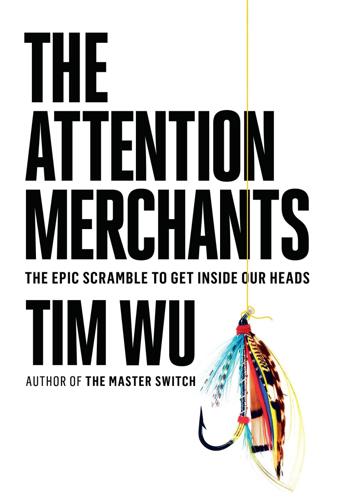
The Attention Merchants: The Epic Scramble to Get Inside Our Heads
by
Tim Wu
Published 14 May 2016
In this way video games were arguably the killer app—the application that justifies the investment—of many computers in the home. As a game machine, sometimes used for other purposes, computers had gained their foothold. There they would lie for some time, a sleeping giant.7 * * * * Breakout was written by Apple’s cofounders, Steve Wozniak and Steve Jobs, as a side project, as described in the Master Switch, chapter 20. CHAPTER 16 AOL PULLS ’EM IN In 1991, when Steve Case, just thirty-three years old, was promoted to CEO of AOL, there were four companies, all but one lost to history, that shared the goal of trying to get Americans to spend more leisure time within an abstraction known as an “online computer network.”
…
In the end, AOL was no corporate Ozymandias; though a failure, it would have a lasting and monumental legacy. True to its name, it got America online—reaching out to one another, ready for the biggest attention harvest since television. * * * *1 Before this, personal computers had come in the now unrecognizable form of hobbyist kits, assembled and programmed by guys like Steve Wozniak of Apple. For more, see The Master Switch, 274–75. *2 Example: +++, ATDT (416) 225-9492. *3 The movie also proved an opportunity for the first meetings between AOL and Time Warner executives: Steve Case and Jerry Levin met at a White House screening of the film. See The Master Switch, chapter 19
…
The significance of those little Atari 2600 consoles appearing in homes would only become apparent later. For many people, here were the first computers to come into the home, and the first new screens, after the television, to breach those walls. They made easier the entry into the home of not just more consoles, but also home computers, like the Apple II or the Commodore 64, for it was one thing to buy an expensive machine that supposedly would be used for work or programming; it was another to get all that along with the spoonful of sugar, namely, a machine that also came with even better games than the Atari had. In this way video games were arguably the killer app—the application that justifies the investment—of many computers in the home.
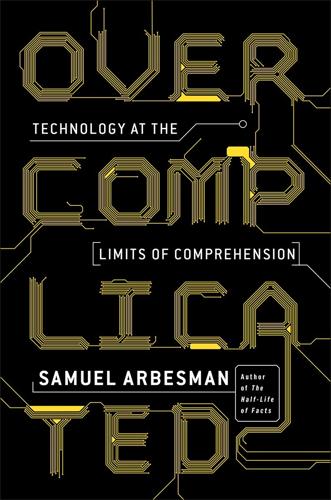
Overcomplicated: Technology at the Limits of Comprehension
by
Samuel Arbesman
Published 18 Jul 2016
A self-taught genius who worked during the early part of the twentieth century, Ramanujan was not your average mathematician who tried to solve problems through trial and error and occasional flashes of brilliance. Instead, equations seemed to leap fully formed from his brain, often mind-bogglingly complex and stunningly correct (though some were also wrong). The Ramanujan of technology might be Steve Wozniak. Wozniak programmed the first Apple computer and was responsible for every aspect of the Apple II. As the programmer and novelist Vikram Chandra notes, “Every piece and bit and byte of that computer was done by Woz, and not one bug has ever been found. . . . Woz did both hardware and software. Woz created a programming language in machine code.
…
abstraction, 163 biological thinking’s avoidance of, 115–16 in complexity science, 133, 135 in physics thinking, 115–16, 121–22, 128 specialization and, 24, 26–27 technological complexity and, 23–28, 81, 121–22 accretion, 65 in complex systems, 36–43, 51, 62, 65, 191 in genomes, 156 in infrastructure, 42, 100–101 legacy systems and, 39–42 in legal system, 40–41, 46 in software, 37–38, 41–42, 44 in technological complexity, 130–31 unexpected behavior and, 38 aesthetics: biological thinking and, 119 and physics thinking, 113, 114 aggregation, diffusion-limited, 134–35 algorithm aversion, 5 Amazon, 5 American Philosophical Society, 90 Anaximander of Miletus, 139 Apple, 161, 163 Apple II computer, 77 applied mathematics, 143 arche, 140 Ariane 5 rocket, 1996 explosion of, 11–12 Aristotle, 151 Ascher, Kate, 100 Asimov, Isaac, 124 atomic nucleus, discovery of, 124, 141 Audubon, John James, 109 autocorrect, 5, 16 automobiles: self-driving, 91, 231–32 software in, 10–11, 13, 45, 65, 100, 174 see also Toyota automobiles Autonomous Technology (Winner), 22 Average Is Over (Cowen), 84 awe, as response to technological complexity, 6, 7, 154–55, 156, 165, 174 bacteria, 124–25 Balkin, Jack, 60–61 Ball, Philip, 12, 87–88, 136, 140 Barr, Michael, 10 Barrow, Isaac, 89 BASIC, 44–45 Bayonne Bridge, 46 Beacock, Ian, 12–13 Benner, Steven, 119 “Big Ball of Mud” (Foote and Yoder), 201 binary searches, 104–5 biological systems, 7 accretion in, 130–31 complexity of, 116–20, 122 digital technology and, 49 kluges in, 119 legacy code in, 118, 119–20 modules in, 63 tinkering in, 118 unexpected behavior in, 109–10, 123–24 biological thinking, 222 abstraction avoided in, 115–16 aesthetics and, 119 as comfortable with diversity and complexity, 113–14, 115 concept of miscellaneous in, 108–9, 140–41, 143 as detail oriented, 121, 122, 128 generalization in, 131–32 humility and, 155 physics thinking vs., 114–16, 137–38, 142–43, 222 technological complexity and, 116–49, 158, 174 Blum, Andrew, 101–2 Boeing 777, 99 Bogost, Ian, 154 Bookout, Jean, 10 Boorstin, Daniel, 89 Borges, Jorge Luis, 76–77, 131 Boston, Mass., 101, 102 branch points, 80–81 Brand, Stewart, 39–40, 126, 198–99 Brookline, Mass., 101 Brooks, David, 155 Brooks, Frederick P., Jr., 38, 59, 93 bugs, in software, see software bugs bureaucracies, growth of, 41 cabinets of curiosities (wunderkammers), 87–88, 140 calendar application, programming of, 51–53 Cambridge, Mass., 101 cancer, 126 Carew, Diana, 46 catastrophes, interactions in, 126 Challenger disaster, 9, 11, 12, 192 Chandra, Vikram, 77 Chaos Monkey, 107, 126 Chekhov, Anton, 129 Chekhov’s Gun, 129 chess, 84 Chiang, Ted, 230 clickstream, 141–42 Clock of the Long Now, The (Brand), 39–40 clouds, 147 Code of Federal Regulations, 41 cognitive processing: of language, 73–74 limitations on, 75–76, 210 nonlinear systems and, 78–79 outliers in, 76–77 working memory and, 74 see also comprehension, human collaboration, specialization and, 91–92 Commodore VIC-20 computer, 160–61 complexity, complex systems: acceptance of, see biological thinking accretion in, 36–43, 51, 62, 65, 191 aesthetics of, 148–49, 156–57 biological systems and, 116–17, 122 buoys as examples of, 14–15, 17 complication vs., 13–15 connectivity in, 14–15 debugging of, 103–4 edge cases in, 53–62, 65, 201, 205 feedback and, 79, 141–45 Gall on, 157–58, 227 hierarchies in, 27, 50–51 human interaction with, 163 infrastructure and, 100–101 inherent vs. accidental, 189 interaction in, 36, 43–51, 62, 65, 146 interconnectivity of, see interconnectivity interpreters of, 166–67, 229 kluges as inevitable in, 34–36, 62–66, 127 in legal systems, 85 and limits of human comprehension, 1–7, 13, 16–17, 66, 92–93 “losing the bubble” and, 70–71, 85 meaning of terms, 13–20 in natural world, 107–10 scientific models as means of understanding, 165–67 specialization and, 85–93 unexpected behavior in, 27, 93, 96–97, 98–99, 192 see also diversity; technological complexity complexity science, 132–38, 160 complication, complexity vs., 13–15 comprehension, human: educability of, 17–18 mystery and, 173–74 overoptimistic view of, 12–13, 152–53, 156 wonder and, 172 see also cognitive processing comprehension, human, limits of, 67, 212 complex systems and, 1–7, 13, 16–17, 66, 92–93 humility as response to, 155–56 interconnectivity and, 78–79 kluges and, 42 legal system and, 22 limitative theorems and, 175 “losing the bubble” in, 70–71, 85 Maimonides on, 152 stock market systems and, 26–27 technological complexity and, 18–29, 69–70, 80–81, 153–54, 169–70, 175–76 unexpected behavior and, 18–22, 96–97, 98 “Computational Biology” (Doyle), 222 computational linguistics, 54–57 computers, computing: complexity of, 3 evolutionary, 82–84, 213 impact on technology of, 3 see also programmers, programming; software concealed electronic complexity, 164 Congress, U.S., 34 Constitution, U.S., 33–34 construction, cost of, 48–50 Cope, David, 168–69, 229–30 corpus, in linguistics, 55–56 counting: cognitive limits on, 75 human vs. computer, 69–70, 97, 209 Cowen, Tyler, 84 Cryptonomicon (Stephenson), 128–29 “Crystalline Structure of Legal Thought, The” (Balkin), 60–61 Curiosity (Ball), 87–88 Dabbler badge, 144–45 dark code, 21–22 Darwin, Charles, 115, 221, 227 Daston, Lorraine, 140–41 data scientists, 143 datasets, massive, 81–82, 104–5, 143 debugging, 103–4 Deep Blue, 84 diffusion-limited aggregation (DLA), 134–35 digital mapping systems, 5, 49, 51 Dijkstra, Edsger, 3, 50–51, 155 “Divers Instances of Peculiarities of Nature, Both in Men and Brutes” (Fairfax), 111–12 diversity, 113–14, 115 see also complexity, complex systems DNA, see genomes Doyle, John, 222 Dreyfus, Hubert, 173 dwarfism, 120 Dyson, Freeman, on unity vs. diversity, 114 Dyson, George, 110 Economist, 41 edge cases, 53–62, 65, 116, 128, 141, 201, 205, 207 unexpected behavior and, 99–100 see also outliers Einstein, Albert, 114 Eisen, Michael, 61 email, evolution of, 32–33 emergence, in complex systems, 27 encryption software, bugs in, 97–98 Enlightenment, 23 Entanglement, Age of, 23–29, 71, 92, 96, 97, 165, 173, 175, 176 symptoms of, 100–102 Environmental Protection Agency, 41 evolution: aesthetics and, 119 of biological systems, 117–20, 122 of genomes, 118, 156 of technological complexity, 127, 137–38 evolutionary computation, 82–84, 213 exceptions, see edge cases; outliers Facebook, 98, 189 failure, cost of, 48–50 Fairfax, Nathanael, 111–12, 113, 140 fear, as response to technological complexity, 5, 7, 154–55, 156, 165 Federal Aviation Administration (FAA), Y2K bug and, 37 feedback, 14–15, 79, 135 Felsenstein, Lee, 21 Fermi, Enrico, 109 Feynman, Richard, 9, 11 field biologists, 122 for complex technologies, 123, 126, 127, 132 financial sector: interaction in, 126 interconnectivity of, 62, 64 see also stock market systems Firthian linguistics, 206 Flash Crash (2010), 25 Fleming, Alexander, 124 Flood, Mark, 61, 85 Foote, Brian, 201 Fortran, 39 fractals, 60, 61, 136 Frederick the Great, king of Prussia, 89 fruit flies, 109–10 “Funes the Memorious” (Borges), 76–77, 131 Galaga, bug in, 95–96, 97, 216–17 Gall, John, 157–58, 167, 227 game theory, 210 garden path sentences, 74–75 generalists, 93 combination of physics and biological thinking in, 142–43, 146 education of, 144, 145 explosion of knowledge and, 142–49 specialists and, 146 as T-shaped individuals, 143–44, 146 see also Renaissance man generalization, in biological thinking, 131–32 genomes, 109, 128 accretion in, 156 evolution of, 118, 156 legacy code (junk) in, 118, 119–20, 222 mutations in, 120 RNAi and, 123–24 Gibson, William, 176 Gingold, Chaim, 162–63 Girl Scouts, 144–45 glitches, see unexpected behavior Gmail, crash of, 103 Gödel, Kurt, 175 “good enough,” 27, 42, 118, 119 Goodenough, Oliver, 61, 85 Google, 32, 59, 98, 104–5 data centers of, 81–82, 103, 189 Google Docs, 32 Google Maps, 205 Google Translate, 57 GOTO command, 44–45, 81 grammar, 54, 57–58 gravitation, Newton’s law of, 113 greeblies, 130–31 Greek philosophy, 138–40, 151 Gresham College, 89 Guide of the Perplexed, The (Maimonides), 151 Haldane, J.

The Rise of the Network Society
by
Manuel Castells
Published 31 Aug 1996
In 1975, Ed Roberts, an engineer who had created a small calculator company, MITS, in Albuquerque, New Mexico, built a computing box with the improbable name of Altair, after a character in the Star Trek TV series, that was the object of admiration of the inventor’s young daughter. The machine was a primitive object, but it was built as a small-scale computer around a microprocessor. It was the basis for the design of Apple I, then of Apple II, the first commercially successful micro-computer, realized in the garage of their parents’ home by two young school drop-outs, Steve Wozniak and Steve Jobs, in Menlo Park, Silicon Valley, in a truly extraordinary saga that has by now become the founding legend of the Information Age. Launched in 1976, with three partners and $91,000 capital, Apple Computers had by 1982 reached $583 million in sales, ushering in the age of diffusion of computer power.
…
As evidence, I recall the famous Apple Computer 1984 advertising spot to launch Macintosh, in explicit opposition to Big Brother IBM of Orwellian mythology. As for the countercultural character of many of these innovators, I shall also refer to the life story of the genius developer of the personal computer, Steve Wozniak: after quitting Apple, bored by its transformation into another multinational corporation, he spent a fortune for a few years subsidizing rock groups that he liked, before creating another company to develop technologies of his taste. At one point, after having created the personal computer, Wozniak realized that he had no formal education in computer sciences, so he enrolled at UC Berkeley.
…
In 1988, it could be estimated that “venture capital accounted for about one-half of the new product and service investment associated with the information and communication industry.”68 A similar process took place in the development of the microcomputer, which introduced an historical divide in the uses of information technology.69 By the mid-1970s Silicon Valley had attracted tens of thousands of bright young minds from around the world, coming to the excitement of the new technological Mecca in a quest for the talisman of invention and money. They gathered in loose groups, to exchange ideas and information on the latest developments. One such gathering was the Home Brew Computer Club, whose young visionaries (including Bill Gates, Steve Jobs, and Steve Wozniak) would go on to create in the following years up to 22 companies, including Microsoft, Apple, Comenco, and North Star. It was the club’s reading, in Popular Electronics, of an article reporting Ed Roberts’s Altair machine which inspired Wozniak to design a microcomputer, Apple I, in his Menlo Park garage in the summer of 1976.
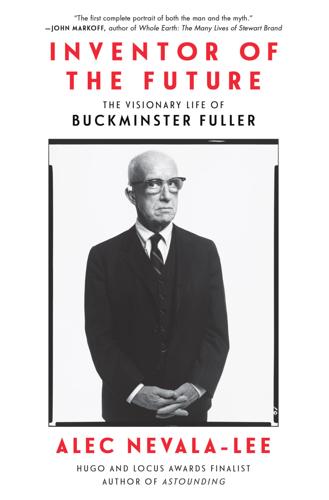
Inventor of the Future: The Visionary Life of Buckminster Fuller
by
Alec Nevala-Lee
Published 1 Aug 2022
In his classic book Hackers: Heroes of the Computer Revolution, writer Steven Levy described it as “a textbook example” of Fuller’s concept of synergy, in which the whole became more than the sum of its parts, and with Felsenstein as its moderator, it grew into the birthplace of an entire industry. Fuller was there in spirit as well. Toward the back of the garage sat Steve Wozniak, who was working with Jobs on the computer that would be sold as the Apple II. When they needed an industrial designer for the housing, they hired Jerry Manock, a graduate of the legendary product design program at Stanford University. Its founder, John E. Arnold, had been a pioneer of creative engineering, with a curriculum grounded in Fuller’s philosophy.
…
Another figure to cite RBF as an influence was Ted Nelson, the author of the 1974 book Computer Lib, who was inspired by the word Dymaxion to coin the term hypertext (Michael Fraase, Macintosh Hypermedia, vol. 1, Reference Guide [Glenview, IL: Scott, Foresman, 1990], 31). “prophetical voices”: Theodore Roszak, From Satori to Silicon Valley (San Francisco: Don’t Call It Frisco, 1986), 18. “Fuller and his Bay Area disciples”: Ibid., 20–21. “cut from the mold”: Ibid., 35. “the twentieth century’s Leonardo da Vinci”: Steve Wozniak, blurb for Lloyd Steven Sieden, ed., A Fuller View: Buckminster Fuller’s Vision of Hope and Abundance for All (Studio City, CA: Divine Arts, 2011). Wozniak was echoing a frequent comparison, with the most common version—“the Leonardo da Vinci of the twentieth century”—often attributed to Marshall McLuhan, who actually praised RBF as “the twentieth century Pythagoras” (McLuhan to Bruce Carrick, September 10, 1974, B375-V6).
…
Wozniak was echoing a frequent comparison, with the most common version—“the Leonardo da Vinci of the twentieth century”—often attributed to Marshall McLuhan, who actually praised RBF as “the twentieth century Pythagoras” (McLuhan to Bruce Carrick, September 10, 1974, B375-V6). Janek Kaliczak: Itinerary, February 1, 1982. “the Han Solo of the Apple world”: David Hunter, “Graphics in the Sky with Diamond Vision,” Softalk, July 1983, 88. “a graphical display”: George Madarasz to RBF, March 31, 1983, B482-F1. “but maybe better”: Steve Wozniak with Gina Smith, iWoz: Computer Geek to Cult Icon—How I Invented the Personal Computer, Co-founded Apple, and Had Fun Doing It (New York: W. W. Norton, 2006), 246. Fuller and the World Game: Hunter, “Graphics in the Sky,” 86. legacy at Apple: Jobs later hired RBF’s former associate Norman Foster to design the company’s corporate headquarters.

Palo Alto: A History of California, Capitalism, and the World
by
Malcolm Harris
Published 14 Feb 2023
It’s the same bet that has drawn investment capital to the West Coast for a long time, and it has continued to pay off into what was supposed to be the future. Once upon a time, the world’s most valuable company was a similar bet, one against the future of working-class power in American manufacturing. It wasn’t Steve Jobs’s “think different” vision or even Steve Wozniak’s circuit-design brilliance that drew Xerox into the partnership that gave Apple that influential look at PARC’s Alto; it was the secret network of Peninsula kitchens and basements where immigrant families assembled Apple’s electronics. Throughout the early years, Jobs’s most important contribution was getting things done faster than other people could imagine, and he did that by emotionally manipulating his employees (and cofounder) into working harder and longer than they wanted to.
…
The value chain links ex-Soviet extractionists like Usmanov—convicted of and imprisoned for “theft of socialist property” in the ’80s—with Foxconn’s company towns and their mandatory overtime, corporate dorms, and loathsome security patrols.35 Chasing no goal other than rapid private gain, Palo Alto’s capitalists once again found a nice place in the middle. It doesn’t matter that, as creators, this generation of petty scrapers and advertising salesmen is a joke compared to Charles Litton and Steve Wozniak. As capitalists they are unmatched, and that is what they are. The Million Dollar Spot “We think we have effectively dismantled the Taliban,” declared Ron Davis at an East Palo Alto press conference in the spring of 2009.36 East Palo Alto was an unusual location to announce the end of the Taliban, except that Davis was the chief of police, and he was talking about a local organization named for the then temporarily displaced Afghan regime.
…
Unable to compete, the supermajority of Chicago cab medallions had gone off the street, so “that cramped Uber ride to O’Hare might well set you back $100 or more on a busy Friday afternoon, double or triple the price of the cab that no longer cruises your neighborhood.”20 The board took a desperately apologetic tone, but it can’t get the cabs back on the street or the crabs back in the barrel. Compared to past cohorts of successful Silicon Valley tech founders, the crab platform leaders made Steve Jobs look like Steve Wozniak. Not only did they not build anything substantial—most of them didn’t have the technical expertise to know where to begin—they also didn’t even come up with anything new. Still, investors pumped novel magnitudes of value through these platforms, allowing them to pursue money-losing strategies indefinitely and hold out for monopoly positions.

Age of Context: Mobile, Sensors, Data and the Future of Privacy
by
Robert Scoble
and
Shel Israel
Published 4 Sep 2013
Some years will pass before people look back and try to understand how they ever could have lived without such a device. Scoble tells audiences it’s like seeing the first Apple IIs as they rolled off the assembly line in 1977: They were like nothing people had seen before, but you couldn’t do much with them. Decision makers at HP and Atari weren’t interested in cutting a deal with Steve Wozniak and Steve Jobs for rights to market their new computer—the new, highly personalized devices were obviously too radically different to sell in significant quantity. Yet, it turned out a lot of people wanted them and the Apple II kicked off a 20-year explosion of invention and productivity that we now remember as the PC revolution.
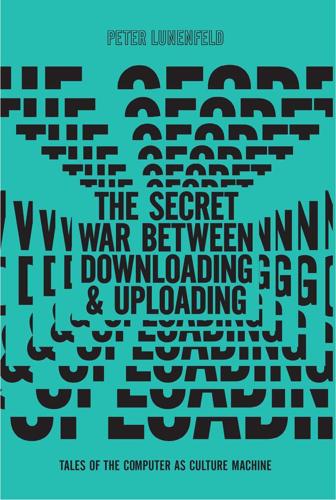
The Secret War Between Downloading and Uploading: Tales of the Computer as Culture Machine
by
Peter Lunenfeld
Published 31 Mar 2011
Jobs and Gates started out when personal computing, that idea advanced by Licklider the Patriarch and Kay the Aquarian, was the province of a tiny group of obsessed hobbyists. It was a business, but one with a smaller market than fly-fishing. As teenagers in the 1970s, Jobs and Gates were part of this small group of hobbyists who purchased kits to make simple, programmable computers to use (and play with) at home. Jobs, along with Steve Wozniak, were members of the best-known group of these enthusiasts, the Homebrew Computer Club of Cupertino, California. Gates, who had been programming since he found himself able to get access to a DEC mainframe in high school, was already writing software professionally while he was a student at Harvard.
…
What made them both rich and powerful was their ability to meld the attributes of the two generations that preceded them—fusing the hardheaded business logic of the Plutocrats with the visionary futurity of the Aquarians. 163 GENERATIONS Jobs and Gates have an interesting competitive history, leapfrogging each other in the quest to achieve “insane greatness,” in Jobs’s words, and global market preeminence, for Gates.21 Jobs and his partner, Wozniak, were the first to make the leap from hobbyists to industrialists with their Apple computers, launched in 1976. It was the Apple II that really broke loose, in 1977, attracting a huge user base, and establishing Jobs and Wozniak as the first publicly lauded millionaire whiz kids of Silicon Valley. As important as their early success with the Apple II was, however, their greatest impact came seven years later, when they took the inspiration of people like Engelbart and Kay, and created a mass-market personal computer that set a new standard for participation.
…
This spirit resonated with Jobs, who at one point had taken a personal pilgrimage to India and lived in an ashram. But even more so, the meme of participation entered his head on those visits to PARC. The Apple II, released in 1977, was unique in having a graphics capability and a soundboard built in. Here was the first major computer for the masses, designed from the start as a multimedia machine. These Apple IIs became the de facto machines in classrooms around the country, and without a doubt prepared a generation of computer users for what was to come. Jobs understood that the graphical user interface would open up a whole new range of applications to nonexpert users, but even more would expand that user community exponentially.
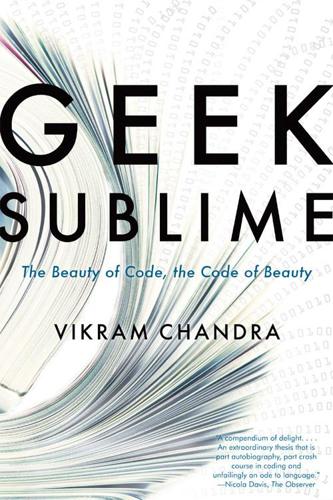
Geek Sublime: The Beauty of Code, the Code of Beauty
by
Vikram Chandra
Published 7 Nov 2013
I didn’t feel comfortable hacking up the code of a Real Programmer.12 Despite the allusion above to “the *macho* side of programming,” the non-geek may not fully grasp that within the culture of programmers, Mel es muy macho. The Real Programmer squints his eyes, does his work, and rides into the horizon to the whistling notes of Ennio Morricone. To you, Steve Wozniak may be that cuddly penguin who was on a few episodes of Dancing with the Stars, and by all accounts, he really is the good, generous man one sees in interviews. But within the imaginations of programmers, Woz is also a hard man, an Original Gangsta: he wired together his television set and a keyboard and a bunch of chips on a circuit board and so created the Apple I computer.
…
And when we say “wrote” this programming language we mean that he wrote the assembly code in a paper notebook on the right side of the pages, and then transcribed it into machine code on the left.13 And he did all this while holding down a full-time job at Hewlett-Packard: “I designed two computers and cassette tape interfaces and printer interfaces and serial ports and I wrote a Basic and all this application software, I wrote demos, and I did all this moonlighting, all in a year.”14 That second computer was the Apple II, the machine that defined personal computing, that is on every list of the greatest computers ever made. Woz designed all the hardware and all the circuit boards and all the software that went into the Apple II, while the other Steve spewed marketing talk at potential investors and customers on the phone. Every piece and bit and byte of that computer was done by Woz, and not one bug has ever been found, “not one bug in the hardware, not one bug in the software.”15 The circuit design of the Apple II is widely considered to be astonishingly beautiful, as close to perfection as one can get in engineering.
…
“On the Origin of the Literary Device of the Frame Story in Old Indian Literature.” In Hinduismus Und Buddhismus: Festschrift Für Ulrich Schneider, edited by Harry Falk, 380–414. Freiburg: Hedwig Falk, 1987. World Economic Forum. Global Gender Gap Report. October 23, 2012. http://www.weforum.org/issues/global-gender-gap. Wozniak, Steve. “And Then There Was Apple.” Apple II History. Accessed August 10, 2013. http://apple2history.org/museum/articles/ca8610/. Wright, Edmund, and John Daintith. A Dictionary of Computing. Online. Oxford University Press, 2008. http://www.oxfordreference.com/10.1093/acref/9780199234004.001.0001/acref-9780199234004-e-2050. Wujastyk, Dominik.

Silicon City: San Francisco in the Long Shadow of the Valley
by
Cary McClelland
Published 8 Oct 2018
My philosophy was—I’ve said this my whole career—you have to keep moving backwards, backwards into the organization. You can’t stay outside. You can’t be on the periphery. You have to move inside and drive it from where the original decisions are being made. With management. That’s what we did with Intel, with Apple, with all our clients. When Steve Jobs and Steve Wozniak came into my office, they had Birkenstocks and cutoffs. Steve had a Ho Chi Minh beard and hair down his back. That actually never, ever bothered me, because I had worked with a lot of crazy people in the semiconductor industry. They were making “hobby” computers. Things people could tinker with at home.
…
A large silicon ingot is suspended in acrylic glass, like a silver missile hanging in the Smithsonian. Stacks of pamphlets and history books fill the shelves, alongside trophies, old devices, trinkets from around the world, and an antique clock. There’s art on most of the walls, leaving no room for a large poster of the original Apple II logo, which lies in a corner, next to an Impressionist oil painting. They grew the ingots. They grew the ingots, and they sliced them. They did everything on the premises. None of this stuff was done by suppliers, because there were no suppliers at the time. I watched the ingots come out of molten silicon.
…
The Apple logo, by the way, I sold to him on the kitchen table upstairs—showing him the layouts. His retort was, “Can we print it on metal?” Because even getting paper to hold the register of all those different colors was quite a task. He made sure he saw it printed on metal before he accepted it. That was for the Apple II, so that was the first logo to appear on their products.* His sense of aesthetics, he had that innately. He was much broader than most people think he was, in terms of literature, in terms of art. He had a sort of melancholy view of this world. He used to call and tell me about these products coming, but he would doubt himself—and whether they would work or not.
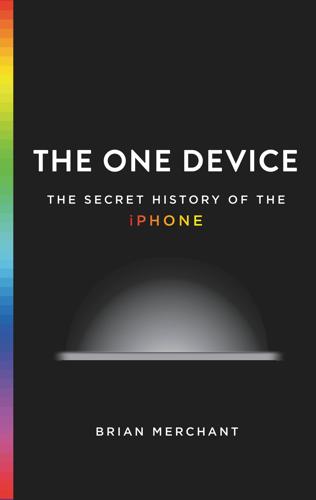
The One Device: The Secret History of the iPhone
by
Brian Merchant
Published 19 Jun 2017
He grew up in Florida with a love of tinkering and gadgets; he was more Wozniak than Jobs, and experimented with hardware in his spare time. “I was a hacker, and hackers, well, from that era—hackers meant you could build a computer from scratch. So, I was building computers,” he says, some based on the motherboard designs of Steve Wozniak. “It was unfortunate, I’ll call it, to live in Florida, outside of where the [Silicon] Valley stuff was going on.” He graduated with a degree in electrical engineering from the Florida Institute of Technology and went to work for IBM. He stayed at the company for sixteen years, rising through the ranks thanks to his mastery of both hardware and software.
…
John Draper, another legendary hacker who came to be known as Captain Crunch, found that the pitch of a toy whistle that came free in Cap’n Crunch cereal boxes could be used to open long-distance call lines; he built blue boxes, electronic devices that generated the tone, and demonstrated the technology to a young Steve Wozniak and his friend Steve Jobs. Jobs famously turned the blue boxes into his first ad hoc entrepreneurial effort; Woz built them, and Jobs sold them. The culture of hacking, reshaping, and bending consumer technologies to one’s personal will is as old as the history of those technologies. The iPhone is not immune.
…
We’ve already seen how Jobs felt about phones that dropped calls. “Apple is best when it’s fixing the things that people hate,” Greg Christie tells me. Before the iPod, nobody could figure out how to use a digital music player; as Napster boomed, people took to carting around skip-happy portable CD players loaded with burned albums. And before the Apple II, computers were mostly considered too complex and unwieldy for the layperson. “For at least a year before starting on what would become the iPhone project, even internally at Apple, we were grumbling about how all of these phones out there were all terrible,” says Nitin Ganatra, who managed Apple’s email team before working on the iPhone.
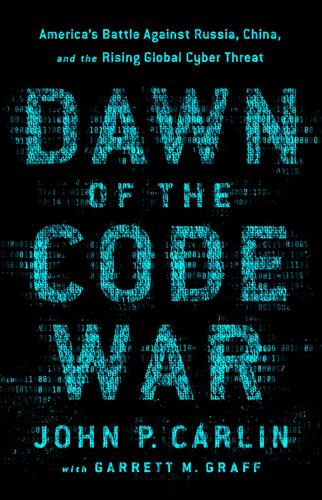
Dawn of the Code War: America's Battle Against Russia, China, and the Rising Global Cyber Threat
by
John P. Carlin
and
Garrett M. Graff
Published 15 Oct 2018
Sold through small ads in the backs of magazines, the home-brew computers involved long hours of soldering, circuit arranging, and wiring. “Phone phreakers,” who stole free telephone calls by circumventing AT&T’s long-distance system, played an integral role in early computing—including, most famously, Steve Wozniak and Steve Jobs, who founded Apple Computer. The phreakers used gadgets known as “blue boxes” to mimic the specific 2,600-hertz tone AT&T used to control its switches, allowing them to bypass billing systems and dial for free. In 1971, an Esquire magazine article, “Secrets of the Little Blue Box,” brought the practice out into the mainstream, celebrating the counterculture and making a celebrity out of John Draper, an early phreaker known as Captain Crunch, nicknamed after the red plastic captain’s whistles that came in the eponymous cereal boxes that happened to hit that perfect 2,600-hertz note.13* “Phreaking,” Draper explained, wasn’t about theft, it was about “learning about a system.
…
Barlow, who raised cattle in Wyoming, recalls awakening to the challenges of cyberspace when an FBI agent, Richard Baxter, showed up at his ranch asking about the “New Prosthesis League,” which was actually a hacking group known as Nu Prometheus League. Barlow had attended the Hackers Conference with phone phreakers like Steve Wozniak, and the FBI figured someone who had attended that conference might be able to help them track down the group that was stealing code from Apple Computer. “I knew Agent Baxter from before. I’d had livestock stolen when I was still in the cattle business, and he’s a pretty good hand with livestock theft.
…
Yet the moment when computers would be a real part of daily life still seemed far away; the computers he knew at the time were the “size of the side of a barn.” Then, Gibson passed a bus stop with an advertisement for Apple Computers, the upstart technology firm led by wunderkind Steve Jobs. He stopped again and stared at the life-sized businessman in the ad. As Gibson recalled, the businessman’s neatly cuffed arm was holding an Apple II computer, which was vastly smaller than the side of a barn. “‘Everyone is going to have one of these,’ I thought, and ‘everyone is going to want to live inside them,’” he recalled. “Somehow I knew that the notional space behind all of the computer screens would be one single universe.” But what to call this new thing, this new place where we would live our future lives?

Makers
by
Chris Anderson
Published 1 Oct 2012
From neighbors who worked in the electronics firm in the Valley, he learned about that field—and also understood that things like television sets were not magical things that just showed up in one’s house, but designed objects that human beings had painstakingly created. “It gave a tremendous sense of self-confidence, that through exploration and learning one could understand seemingly very complex things in one’s environment,” he told [an] interviewer. Later, when Jobs and his Apple cofounder, Steve Wozniak, were members of the Homebrew Computer Club, they saw the potential of desktop tools—in this case the personal computer—to change not just people’s lives, but also the world. In this, they were inspired by Stewart Brand, who had emerged from the psychedelic culture of the 1960s to work with the early Silicon Valley visionaries to promote technology as a form of “computer liberation,” which would free both the minds and the talents of people in a way that drugs had not.
…
They are pivoting from professionals to everyone. In short, the Maker Movement has arrived. This nascent movement is less than seven years old, but it’s already accelerating as fast as the early days of the PC, where the garage tinkerers who were part of the Homebrew Computer Club in 1975 created the Apple II, the first consumer desktop computer, which led to desktop computing and the explosion of a new industry. Similarly, you can mark the beginnings of the Maker Movement with such signs as the 2005 launch of Make magazine, from O’Reilly, a legendary publisher of geek bibles, and the first Maker Faire gatherings in Silicon Valley.
…
The leaders of the Maker Movement echo the fervor of Steve Jobs, who saw in the personal computer not just the opportunity to start a company but also a force that would change the world. But don’t forget: he was right. Indeed, Jobs himself was inspired by his Maker upbringing. Writing in Wired,12 Steven Levy explained the connection, which led to the original Apple II in 1977: His dad, Paul—a machinist who had never completed high school—had set aside a section of his workbench for Steve, and taught him how to build things, disassemble them, and put them together. From neighbors who worked in the electronics firm in the Valley, he learned about that field—and also understood that things like television sets were not magical things that just showed up in one’s house, but designed objects that human beings had painstakingly created.
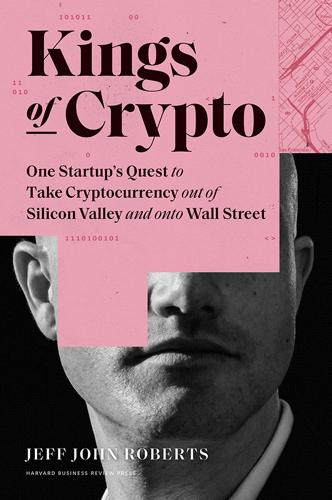
Kings of Crypto: One Startup's Quest to Take Cryptocurrency Out of Silicon Valley and Onto Wall Street
by
Jeff John Roberts
Published 15 Dec 2020
In works like Collaborative Circles and Powers of Two, researchers have shown how genius is rarely solitary: John Lennon and Paul McCartney relied on each other to compose timeless Beatles hits; Pablo Picasso and Georges Braque used their brushes side by side to create Cubism; biologists James Watson and Francis Crick worked intensely together to discover the double helix and DNA. Tech is no different. Apple is famously associated with Steve Jobs, but, in its early days, the computer company wouldn’t have gotten off the ground without the other Steve—Jobs’s partner and programming virtuoso Steve Wozniak. The same is true with Google. The Stanford graduate supervisor of Larry Page and Sergey Brin has remarked on the near total mind-meld of the search engine founders. And a garage in Palo Alto, known as the birthplace of Silicon Valley and now an official California state landmark, did not belong to a lone inventor but to two men: Bill Hewlett and Dave Packard, who founded HP.
…
“I think sometimes bitcoin fundamentalists are a bit naïve or simplistic in not realizing that they wouldn’t enjoy the high price of bitcoin if Coinbase hadn’t created a big market for it,” he says. None of this, though, means Coinbase is destined to be the JP Morgan in a coming era of crypto. A big reason is because, even though everyone familiar with crypto predicts it will disrupt Wall Street, no one’s quite sure when. • • • “We’re in the Apple II phase of crypto. What we really need is the PC,” says Chris Dixon, the venture capitalist and Coinbase board member. Dixon’s analogy is a good one. The desktop device Apple launched in 1977 was a hit, but only a small fraction of Americans would ever own one. It would only be four years later with the arrival of the IBM PC that personal computers became mainstream to the point that Time magazine declared 1982 the “year of the computer.”
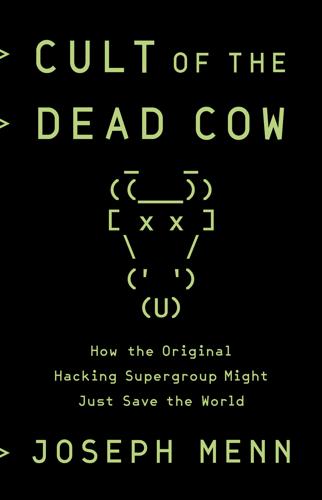
Cult of the Dead Cow: How the Original Hacking Supergroup Might Just Save the World
by
Joseph Menn
Published 3 Jun 2019
The phreakers were a diverse group, including John Draper, who called himself Cap’n Crunch after learning that whistles given out with that breakfast cereal could be used to blow 2600 hertz, which allowed free calls. The technical puzzles of phreaking would attract future innovators up to and including Apple founders Steve Jobs and Steve Wozniak, who sold blue boxes to make free calls while in college. The political divide in America at the end of the 1960s was the worst until the 2000s, and that helped push phreaking in a radical direction. The phone companies were very clearly part of the establishment, and AT&T was a monopoly to boot.
…
A couple of the older kids had set up electronic forums known as bulletin boards, where strangers, using modems to call in over regular phone lines, could read or leave messages and text files, which the locals also called t-files. Widespread use of web browsers was still a dozen years away. Kevin had put in two years on his Apple II by the time he moved to Lubbock, so he found the local bulletin boards in short order. There weren’t a lot in his 806 area code, and most were run by hobbyists talking about computers. Some older teenagers had one that was more freewheeling, and Kevin and a group of friends chatted there for a while, until the bigger kids got tired of the hangers-on and banned them.
…
By the time he got to Berklee he was practicing five hours a day, a routine he compared to the grueling training of Chinese acrobats. But he was never just about music. David Zatko worked on the government’s space shuttle efforts and brought home computer parts to his toddler. With a $5,000 bequest from Mudge’s grandfather, the middle-class family bought an Apple II Plus, intending it to be educational. That it was, especially because a nearby store offered software that the buyer could return quickly for a partial refund. That made cracking the copy protection an imperative for Mudge and his father, and it was an early lesson in perverse incentives, a subject that Mudge would one day find himself debating in the Pentagon.
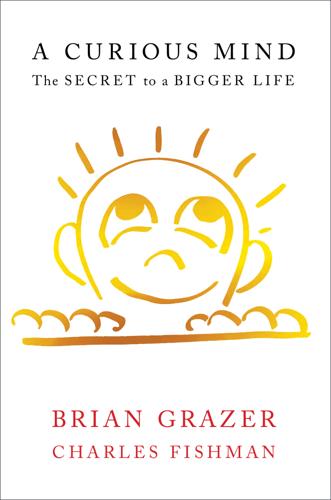
A Curious Mind: The Secret to a Bigger Life
by
Brian Grazer
and
Charles Fishman
Published 6 Apr 2014
Wilson: biologist, author, professor emeritus at Harvard University, two-time winner of the Pulitzer Prize Oprah Winfrey: founder and chairwoman of the Oprah Winfrey Network, actress, author George C. Wolfe: playwright, theater director, two-time winner of the Tony Award Steve Wozniak: cofounder of Apple Inc., designer of Apple I and Apple II computers, inventor John D. Wren: president and CEO of marketing and communications company Omnicom Will Wright: game designer, creator of Sim City and The Sims Steve Wynn: businessman, Las Vegas casino magnate Gideon Yago: writer, former correspondent for MTV News Eitan Yardeni: teacher and spiritual counselor at the Kabbalah Centre Daniel Yergin: economist, author of The Prize: The Epic Quest for Oil, Money and Power, winner of the Pulitzer Prize Dan York: chief content officer at DirecTV, former president of content and advertising sales, AT&T Michael W.
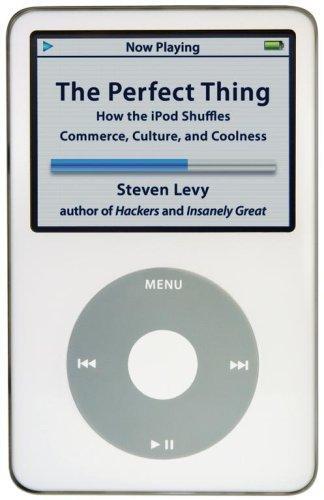
The Perfect Thing: How the iPod Shuffles Commerce, Culture, and Coolness
by
Steven Levy
Published 23 Oct 2006
One is drugs; the other is technology, applied so as to please ourselves. When the latter is used to get effects as mind-blowing as the former, things become really interesting. (One of the most memorable quotes I've ever gathered in my reporting career came in 1982, covering the US Festival, a huge rock concert sponsored by Apple cofounder Steve Wozniak. At a motel nearby, Jerry Garcia, who was prepping to play a "Breakfast with the Grateful Dead" set, proclaimed, "Technology is the new drugs." Okay, not an original concept, but consider the source.) Without altering one's chemical composition, the iPod does change your head. Plugging directly into your ears, dominating the Personal brain matter in between, and shuffling your music collection to extract constant delight, it generates a portable alternative reality, almost always more pleasant than the real one.
…
The Sony-ites in attendance, mostly younger engineers, technical designers, and marketers, responded with panic but executed with fervor, in part because the Walkman was a product they wanted to own themselves. They made the deadline. On June 22, 1979, Sony unveiled its baby with a degree of showmanship and suspense that Steve Jobs—then a twenty-four-year-old mogul-in-training, beginning to contemplate a successor to the Apple II—might have appreciated. Journalists arriving at Sony's headquarters in the Ginza were directed to buses and handed a Walkman. Not until they arrived at Yoyogi Park—Tokyo's version of Central Park, which was filled every Sunday with crazed Elvis impersonators-were they directed to turn the devices on, to hear a sonically thrilling stereo introduction to the capabilities and virtues of the Walkman.
…
(Jobs considers cover stories his birthright and often grants exclusive access in exchange for getting Apple's new products on the cover.) But only recently, with the dual success of the iPod and Pixar, have people come to realize that Jobs is building a historical legacy. This is a guy who has pulled of[four accomplishments that rocked the world. With the Apple II, he was instrumental in introducing the concept of a personal computer to the world. With the Macintosh, he popularized what was to become the dominant—and friendliest—means of using a computer. As the CEO of Pixar, he helped usher in the era of computer-animated feature films. And now there is the iPod.
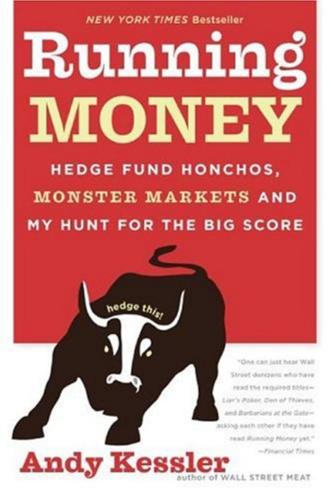
Running Money
by
Andy Kessler
Published 4 Jun 2007
He quickly pulled up his sleeve and pointed to a Microma watch on his wrist and told me he wore it often to remind himself to never be that stupid again. Intel’s lesson: make the intellectual property, not the end product. The cool thing about a computer on a chip is you can start a computer company without knowing much about computers. Steve Jobs and Steve Wozniak created Apple Computer without knowing that much. Wozniak had to write some software to get data on and off a floppy disk drive, which no one else had, and their Apple I became a hit. IBM knew lots about how to milk big bucks out of big computers, but nothing about microprocessors. So a stealth group in Florida contracted out the work, creating a Frankensteinlike IBM PC in 1981, using an Intel microprocessor, Microsoft software and a Western Digital disk controller.
…
Tech luminaries like Carver Mead, Bob Metcalfe and Paul Allen were regulars. “I don’t know what the first packet was,” I confessed. My tablemate turned out to be Leonard Kleinrock, a UCLA professor, according to his name tag. It turned out that he had been at the creation. Since the 1978 introduction of the Apple II computer, to the 1981 announcement of the IBM PC, the world has been flooded with smaller, cheaper and faster computers. More than 100 million new ones get sold every year. But today, these are no islands—the power of these computers is in their ability to communicate. The telephone network, which is optimized for your talks with 184 Running Money Mom, was the medium for computer communications.
…
See AOL Andreessen, Marc, 197, 199 animation, 134–35 AOL (America Online), 69–73, 207, 208, 223, 290 Cisco routers and, 199 Inktomic cache software and, 143 Netscape Navigator purchase, 201, 225 Telesave deal, 72–73 TimeWarner deal, 223, 229 as top market cap company, 111 Apache Web server, 247 Apple Computer, 45, 127, 128 Apple II, 183 Applied Materials, 245 Archimedes (propeller ship), 94 Arkwright, Richard, 65 ARPANET, 186, 187, 189, 191 Arthur Andersen, 290 Artists and Repertoire (A&R), 212, 216 Asian debt crisis, 3, 150, 151, 229, 260 yen and, 162–65, 168, 292 @ (at sign), 187 AT&T, 61, 185–86, 189 August Capital, 2, 4 auto industry, 267–68 Aziz, Tariq, 26 Babbage, Charles, 93 Baker, James, 26 Balkanski, Alex, 44, 249 bandwidth, 60, 111, 121, 140, 180, 188–89 Baran, Paul, 184, 185 Barbados, 251, 254 300 Index Barksdale, Jim, 198, 199–201 Barksdale Group, 201 BASE, 249 BASIC computer language, 126, 127 BBN.
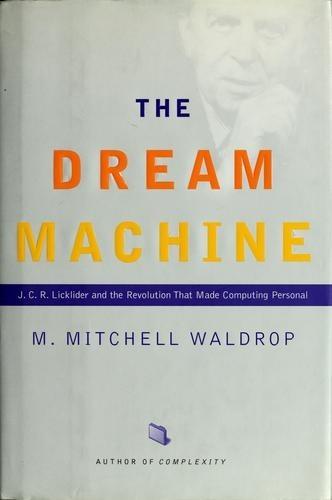
The Dream Machine: J.C.R. Licklider and the Revolution That Made Computing Personal
by
M. Mitchell Waldrop
Published 14 Apr 2001
Partly, this reaction was a function of his counter- cultural disdain for large corporations in general. (The scruffily bearded Jobs wore his T-shirts, jeans, and sandals like a badge of honor.) And partly it was at- tributable to his memory of Steve Wozniak's former employer, Hewlett-Packard, which had once rebuffed Woz's proposal for a microcomputer. But in any case, Jobs changed his mind after repeated urging by Apple engineer Jef Raskin, who had joined the company to help design the Apple II. Raskin had visited PARC, as it happened, and his friends there had shown him its wonders. So on April 2, 1979,Jobs and his team met with the XDC people and struck a deal that could make sense only in the go-go world of Silicon Valley: Xerox would be allowed to invest $1.05 million in Apple's private stock sale, and in re- turn it would allow Apple full access to PARC's technology.
…
Instead of just providing a kit, a bag of parts, they would have to offer something much more like an appliance: a finished system that would work as soon as you plugged it in. Keyboard, moni- tor, disk drives, operating system, software-everything had to be right there in the box, or else be very easy to add. On the hardware side, this challenge was taken up most famously by the Apple Computer Company, founded in 1976 by Homebrew Computer Club members Steve Wozniak and Steve Jobs, longtime buddies from the Silicon Val- ley town of Cupertino. After some encouraging success with their first com- puter, which they marketed through local hobby shops-it was actually just a single circuit board using the new, 8-bit 6502 microprocessor from MOS Tech- nology, plus 4 kilobytes of RAM-Jobs and Wozniak were joined by the thirty- four-year-old A.
…
Yet like Lick and most of the rest of the ARPA community, 438 THE DREAM MACHINE they found it hard to see the micros as anything more than toys. Imagine what it was like to go from the Alto's WYSIWYG text editing to an Apple II, says Jerry Elkind: "You had to hook it up to a television, and you got only forty characters per line, with no lowercase letters. It was terrible." "It was a different level of as- piration," agrees Chuck Thacker. "I did buy an Apple II and look at it early on. It turned out to be based on a 6502 microprocessor, which was the same chip we used as a controller in the Alto keyboard!" PARC, they were confident, had something much more exciting to offer-if they could ever get that something out the door.

The Entrepreneurial State: Debunking Public vs. Private Sector Myths
by
Mariana Mazzucato
Published 1 Jan 2011
While the products owe their beautiful design and slick integration to the genius of Jobs and his large team, nearly every state-of-the-art technology found in the iPod, iPhone and iPad is an often overlooked and ignored achievement of the research efforts and funding support of the government and military. Only about a decade ago Apple was best known for its innovative personal computer design and production. Established on 1 April 1976 in Cupertino, California by Steve Jobs, Steve Wozniak and Ronald Wayne, Apple was incorporated in 1977 by Jobs and Wozniak to sell the Apple I personal computer.1 The company was originally named Apple Computer, Inc. and for 30 years focused on the production of personal computers. On 9 January 2007, the company announced it was removing the ‘Computer’ from its name, reflecting its shift in focus from personal computers to consumer electronics.
…
In effect, the government and business community underestimated the challenge at hand, though critics tend to focus on the failure of government and not of finance; and that (3) failure is hard to judge unless we have proper metrics to be able to understand the spillover effects that investments have, even when there is no final product. These international projects did establish networks of learning between utilities, government R&D, the business community and universities. 3 Moreover, as discussed in Chapter 5, the Apple II, which ran Kenetech’s first projects, would also not have been possible without government investments. 4 Hoffman had acquired the original Bell Labs patent through acquisition of National Fabricated Products in 1956. 5 Details on Suntech are based on a forthcoming piece of work by Matt Hopkins and Yin Li, ‘The Rise of the Chinese Solar Photovoltaic Industry and its Impact on Competition and Innovation’.
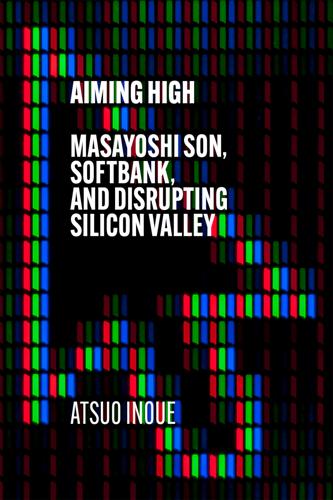
Aiming High: Masayoshi Son, SoftBank, and Disrupting Silicon Valley
by
Atsuo Inoue
Published 18 Nov 2021
It was the start of an arms race within the nascent computer industry and the two had just developed a way for BASIC to run on an Altair. Gates was only 19 at the time whilst Allen was 22. Allen quit his job at Honeywell and Gates dropped out of Harvard to move to Albuquerque and start Microsoft. Steve Jobs and Steve Wozniak were also at the forefront of the emerging computer industry (they would go on to found Apple Computer Company in 1976), while Scott McNealy (Sun Microsystems) and Larry Ellison (Oracle) could also be said to be Son’s contemporaries. The digital information revolution was calling and all of these individual Damascus moments would lay the groundwork for it to become a reality.
…
The second chapter is the birth of the internet. ‘Jerry Yang founded Yahoo! in the States, which paved way for Amazon, Google and Facebook. Each company has played a major role in the Internet in its unique way.’ It follows on that the third chapter would be mobile internet. ‘What was amazing about Steve Jobs was that he had invented the Apple II and opened up the first chapter of the information revolution along with Bill Gates but eventually he got fired by Apple and had a hard time. But – true genius that he was – he picked himself up, dusted himself off and once again completely redefined the future of humankind.’ Like Son says, there is no doubt that Steve Jobs was a bona fide genius, creating the platform during his second coming for each mobile service provider to accelerate and expand their own products’ growth.
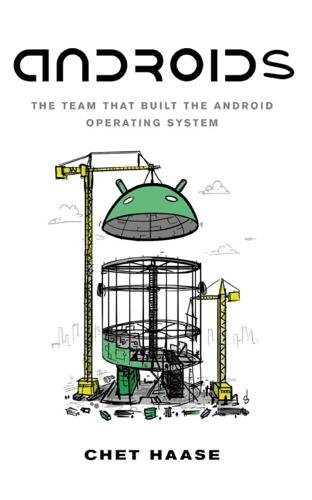
Androids: The Team That Built the Android Operating System
by
Chet Haase
Published 12 Aug 2021
This device was not a computer as we know it today, but used plastic and metal parts to perform simple boolean and math operations, like counting from zero to seven.251 Cary was so fascinated by this machine that he wore it out and asked for the same present the following Christmas. He upgraded to a used Apple II in the late 70s while he was at college, spending so much time learning programming in his dorm room by taking apart Steve Wozniak’s BASIC implementation on the Apple II that he flunked out of college. He eventually came back and finished his degree, but in the meantime had started working in sales at a hobbyist computer store. When customers had questions about their Apple computers, Cary would call up the regional Apple tech support office for answers, but realized that the staff had no idea how things actually worked.
…
Andy McFadden and the Demo In May of 2005, Andy McFadden (known to the team as “Fadden”45) joined the company. Fadden had worked with Andy Rubin and Chris White at WebTV. When Andy [Rubin] was looking to hire someone else for his startup, he emailed Fadden: WTF? How are you? I want to hire you. It’s going to be huge™ When he was thirteen, Fadden was programming BASIC and assembly46 on an Apple II. So it was no surprise that he would later be one of the people on Android working on low-level code for Android’s Dalvik runtime. “Some people [later, when Android was a large team at Google] didn’t like having parts of the Dalvik VM47 written in ARM48 assembly. When you’ve been crawling around in the guts of computers since the 8th grade you have a different perspective.”
…
Dan (known to the team as “danfuzz”) had taken over the runtime from Brian at Danger. “Not long after I was hired, I started referring to myself as ‘Brian Jr.’ He really didn’t like it… which is why I kept saying it.” Dan was introduced to programming at the age of seven. He and his brother just wanted to play video games, so they eventually talked their parents into getting an Apple II, which the parents thought would be both a game and an education machine. The parents apparently won, because Dan didn’t just play games; he started programming them: “I totally wrote crappy video games, mostly text and low-res graphics.” Both Dan and his brother eventually became software engineers.

From Airline Reservations to Sonic the Hedgehog: A History of the Software Industry
by
Martin Campbell-Kelly
Published 15 Jan 2003
However, a number of individuals who developed software for these machines—including Bill Gates, Paul Allen, and Gary Kildall—were to get a first-mover advantage that would give them early dominance of the personal computer software industry. The transforming event for the personal computer was the launch of the Apple II in April 1977. The tiny firm of Apple Computer had been formed by the computer hobbyists Steve Jobs and Steve Wozniak in 1976. Their first machine, the Apple, was a raw computer board designed for kit-building hobbyists. The Apple II, however, was an unprecedented leap of imagination and packaging. Looking much like the computer terminals seen on airport reservation desks, it consisted of a keyboard, a CRT display screen, and a central processing unit, all in one package.
…
Though Jobs was not alone in having such a vision of the personal computer, he was by far the most successful at orchestrating the technological and manufacturing resources to bring it to fruition. During 1977, the Apple II was joined by many imitators from entrepreneurial startups, and by machines from two major electronics manu- The Personal Computer Software Industry 203 facturers: the Commodore PET and the TRS-80. The PET was a product of Commodore Business Machines, a major manufacturer of calculators; the TRS-80 was made by the Radio Shack subsidiary of the giant electronics retailer Tandy. Each of these three machines was initially targeted at its manufacturer’s natural markets: the Apple II at the hobbyist, domestic, and education markets, the Commodore PET at the engineering calculator and education markets, the TRS-80 at home and videogame users.
…
The package was developed for the Apple II, with ease of use rather than technical sophistication as its prime selling point. It was priced at $140, barely one-fifth the price of dBase II. Produced and published in house, the package was distributed directly to computer stores. All this was achieved in 1980, when the founders were still full-time employees of Hewlett-Packard. In early 1981, with the The Personal Computer Software Industry 221 success of PFS:File, they secured venture funding and incorporated as Software Publishing. By the fall of 1983, they had sold a quarter-million copies of PFS:File for Apple II, TRS-80, and IBM-compatible machines.

Augmented: Life in the Smart Lane
by
Brett King
Published 5 May 2016
Leonard Kleinrock, UCLA, from an interview on the first ARPANET packet-switching test in 1969 In parallel to the development of early computer networks, various computer manufacturers set about shrinking and personalising computer technology so that it could be used at home or in the office. Contrary to popular belief, IBM wasn’t the first company to create a personal computer (PC). In the early 1970s, Steve Jobs and Steve Wozniak had been busy working on their own version of the personal computer. The result—the first Apple computer (retrospectively known as the Apple I)—actually preceded the IBM model6 by almost five years, and used a very different engineering approach. However, it wasn’t until Apple launched the Apple II that personal computing really became a “thing”. Figure 3.2: An original Apple I computer designed by Jobs and Wozniak and released in 19767 (Credit: Bonhams New York) Around the same time as Jobs and Wozniak’s development of the earliest form of PC, there was also a rapid downsizing of computers in the workplace.
…
I still vividly remember the time when I hacked into the school administrator system to find the teachers’ records; I got a two-week time out from the computer room for that one. I would offer to code other kids’ assignments for them for a nominal fee. It wasn’t about the money, it was simply a test to see if I could get the same results or output using different versions of the program. Around this time, my pal Dan Goldberg introduced me to my first Apple II computer, and not long after that I got my first Vic-20 microcomputer at home. A few years later, I convinced my father to invest in an IBM compatible computer for the home. I’d gone from punching in programs on paper cards that read graphite pencil marks to keyboards and monochrome screens. Interfaces, especially when it came to games or graphics, were extremely primitive.

This Is for Everyone: The Captivating Memoir From the Inventor of the World Wide Web
by
Tim Berners-Lee
Published 8 Sep 2025
• While attending Emanuel I decided I would build my own computer. What choice did I have? Personal computers like the Apple II were still years away, and even if they were available, I couldn’t have afforded one. Besides, homebrew computing gives you a feel for the system from the CPU to the backplane. This was a project that would take me years to complete, and it helped lay the foundations for my journey. In fact, as I later learned, building a computer from scratch was a rite of passage for many engineers in my generation – Bill Gates and Steve Wozniak did it too. I already had some experience with electrical engineering. With my friends Nick and Christopher, I had manufactured an electromagnet by softening an iron nail in the fireplace, then wrapping the nail in coils of copper wire.
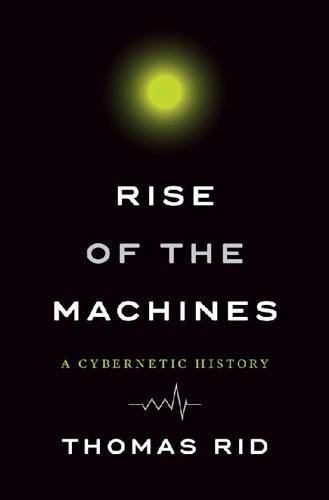
Rise of the Machines: A Cybernetic History
by
Thomas Rid
Published 27 Jun 2016
They invented time-sharing, against the interest of large corporations, and gave more people access to SAGE-style supercomputers—in effect, turning mainframes into more widely accessible virtual personal computers. The second wave of hackers, in the late 1970s, overturned mainframes entirely by bringing the personal computer to market. Many of them were hard-core counterculture types—for instance, Steve Jobs and Steve Wozniak, two cofounders of Apple. They had honed their skills by developing, and then selling, so-called blue boxes, illegal phone phreaking devices to make free calls. Then came the third wave of “hackers,” the social hackers of the early 1980s. The personal computer and emerging network technology didn’t articulate an entire philosophy and aesthetic just by themselves.
…
“Fortunately I knew absolutely nothing about computers,” he recalled.45 Until late in 1985, the fêted science fiction author and creator of cyberspace didn’t even own a personal computer. And people talking about computers bored him. For Christmas that year, Gibson finally bought an Apple II at a discount. The machine’s successor model, the Macintosh, had been launched so effectively nearly one year earlier with the legendary cyberpunk ad “1984,” but the older Apple II was still a best-selling device. When Gibson booted up the machine at home and got ready to use it, he was shocked by the computer’s mundane mechanical makeup. “Here I’d been expecting some exotic crystalline thing, a cyberspace deck or something, and what I’d gotten was something with this tiny piece of a Victorian engine in it, like an old record player.”46 The science fiction writer called up the store to complain.
…
“Here I’d been expecting some exotic crystalline thing, a cyberspace deck or something, and what I’d gotten was something with this tiny piece of a Victorian engine in it, like an old record player.”46 The science fiction writer called up the store to complain. What was making this noise? The operator told him it was normal; the hard drive was simply spinning in the box that was the Apple II. Gibson’s ignorance about computers, he recounted, had allowed him to romanticize technology. And romanticize he did: She slid the trodes on over the orange silk headscarf and smoothed the contacts against her forehead. “Let’s go,” she said. Now and ever was, fast forward, Jammer’s deck jacked up so high above the neon hotcores, a topography of data he didn’t know.

This Machine Kills Secrets: Julian Assange, the Cypherpunks, and Their Fight to Empower Whistleblowers
by
Andy Greenberg
Published 12 Sep 2012
So a kindergarten-age Zatko acquired the ability to write software as naturally as most children learn to write their ABCs. At the same time, his parents introduced him to the violin and later the guitar; his talents on both sets of instruments, digital and analog, developed in parallel. When the Apple II was released, Zatko’s grandfather spent Zatko’s father’s entire inheritance to buy the sleek new machine for the family’s prodigy. Plugging into Steve Jobs and Steve Wozniak’s powerful creation, Zatko soon discovered video games, their annoying copyright protections, and the tantalizing task of picking those digital locks. “It’s 1978, I’m eight years old, and twenty dollars for a game is a lot of money,” says Zatko.
…
In 1999, he told The New York Times Magazine that he had once received an informal warning from a “three letter agency.” Zatko claims he never knowingly broke computer laws as a teenager; he has no criminal record. The only souvenir that remains of his adventures on the edge of the law would be a long-confiscated Apple II PC that his colleagues say appeared in his office many years later, a well-preserved time capsule from a more anarchic period of Zatko’s and the Internet’s life. Fortunately for the young hacker, he also possessed less controversial talents. In 1988, Zatko was accepted to the Berklee College of Music in Boston and spent the next four years honing his guitar skills and composing music.

User Friendly: How the Hidden Rules of Design Are Changing the Way We Live, Work & Play
by
Cliff Kuang
and
Robert Fabricant
Published 7 Nov 2019
Still another problem is that when digital products have greater and greater reach, it means fewer and fewer people are making the decisions. That’s all the more surprising because the power and promise of the personal computer wasn’t born from whole cloth. It was born of the fact that a bunch of hackers like Steve Wozniak could break machines apart and assemble their own, better machines. But as our machines have become more elegant, our ability to alter them hasn’t nearly kept pace. As easy as it is to change the preferences on your smartphone, it’s all but impossible to make a different smartphone. The most optimistic thinkers in Silicon Valley believe that the answer is for all of us to be able to code.
…
Think how fun it is to surf on the front of a wave, and how not fun it is to dog-paddle on the tail edge of that same wave.” Atkinson wanted to surf. Two weeks later, he was at Apple, where he soon became Jobs’s regular dinner partner and sounding board, and a star engineer on Apple’s follow-up to the Apple II, the Lisa.15 Jobs’s main way of motivating people wasn’t merely fear, but rather capriciousness, which was both scarier and far more magnetic. “Steve would say you were great one day, and an idiot the next,” recalled Bruce Horn, part of the team that went on to create the drag-and-drop method of moving files around.16 Atkinson seemed to float above Jobs’s ire, and below it too, buried in his work.
…
Acumen, 283 addiction, 257, 274 Adler, Felix, 57 advertising, 58–59, 240–42; on Facebook, 267 AEG, 333 Aeron chair, 204, 208, 341 affordances, 124 Airbnb, 35, 287 Air Force, U.S., 80, 82–85, 102–103 airplanes, 70; cockpit controls in, 83–84, 106, 124; crashes of, 77, 81–85, 102–103, 104, 106, 121, 173, 257 alarm clocks, 154 Alexa, 122, 123, 190, 227, 341, 346 algorithms, 35–36, 42, 44, 156, 231, 241, 243 Amazon, 35, 117, 118, 227, 231, 243, 269, 351n33; Alexa, 122, 123, 190, 227, 341, 346; Apple and, 145–46; Kindle, 41; one-click purchases, 145–46, 342 America, 59–63, 93 American Express, 59 American Management Association, 64 ancestor thinking, 274–75 Anthropometric Source Book, 337 APL (A Programming Language), 7 Apple, 3–6, 8, 140–41, 145, 148, 177, 195, 227–28, 231, 239, 243, 269, 289, 295, 296, 299, 317, 326–27; advertisements of, 8, 43; Amazon and, 145–46; App Store, 149–50, 292, 344; graphical user interface, 143, 145, 146, 148; iCloud, 351n32; iMac, 5, 23, 149; iPad, 5, 296; iPhone, 5, 23, 43, 127, 145–47, 149, 191, 216, 228, 259, 274, 289–90, 291, 296, 313, 327, 338, 343; iPod, 5, 23, 145, 338, 342–43, 346; iTunes, 146, 343; Ive at, 23, 149, 299, 338, 342; Jobs at, 3–4, 7, 139–41, 145, 149, 157, 183, 190, 317, 340, 343; laptop trackpads, 359n25; Lisa (Apple II), 140, 141, 143, 145; Macintosh, 8, 143–46, 157, 338, 340; mouse, 141, 169, 177, 182–83; Norman at, 22–23; Shortcuts, 151; Siri, 122, 151, 190–91, 193, 195, 208, 312; Stores, 150; touchscreens, 127, 145–47, 343, 359n25; visual metaphors and, 148–49, 210; Xerox and, 8, 139–44, 146 Apple Park, 4–5 appliances: home, 63, 117, 179, 230, 333, 370n16; medical, 69 apps, 26–27, 69, 147, 192, 194, 242, 255, 261, 288, 315–16; Apple App Store, 149–50, 292, 344; consistency of, 31; metaphors and, 149–52; navigability of, 31 arguments, 42 Army, U.S., 87 Arnold, John, 165–68, 170, 174, 190 artificial intelligence (AI), 105, 189–90, 208–209, 242, 312; in assistants, 108; Capital One chatbot, 211–12, 259, 268; Eliza conversational bot, 337–38; feedback and, 35–36; Google Lens and, 44; and suit to augment muscles of the elderly, 107 Art Nouveau, 148 Asana, 248, 291 assembly lines, 60, 333 assistants, digital, 108, 122–24, 199; trust in, 193–94, 208 “As We May Think” (Bush), 189 AT&T, 337, 371n21 Atkinson, Bill, 140–44, 145 Atlantic, The, 188 atomic bomb, see nuclear weapons Audi, 99–104, 106, 108, 111–13, 118–20, 126, 144, 355n5 automation, 105; paradox of, 272, 273 autopilot, 119, 124, 272, 346 B-17 Flying Fortress, 83–84, 335–36 Bach, Richard, 60–61 bag-mapping technique, 307–308 banks, 287 Barbaric, Mladen, 49–55, 71, 117 Barrett, K.
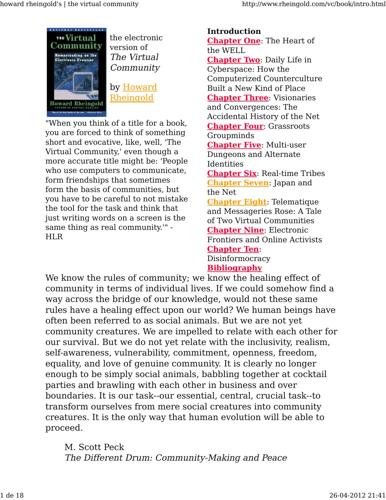
Howard Rheingold
by
The Virtual Community Homesteading on the Electronic Frontier-Perseus Books (1993)
Published 26 Apr 2012
Kapor, concerned about the nature of the Sun Devil arrests and what they signaled for civil liberties in cyberspace, offered to support the costs of legal defense. Acid Phreak, Phiber Optik, and their buddy Scorpion were represented by Rabinowitz, Boudin, Standard, Krinsky, and Lieberman. Within days of the Pinedale meeting, Steve Wozniak, cofounder of Apple Computer, and John Gilmore, Unix telecommunications wizard and one of the first employees of the enormously successful Sun Microsystems, offered to match Kapor's initial contributions. A board of directors was recruited that included, among others, WELL founder Stewart Brand.
…
Through Gena he became involved with Steve Plummer, the dean of students at the American University of Paris. Plummer and 26-04-2012 21:45 howard rheingold's | the virtual community 4 de 22 http://www.rheingold.com/vc/book/8.html another partner wanted to give personal computer users remote access to advanced programming languages. At that time, most PC users in France used the Apple II, a laughably puny antique by today's standards, with modems that transmitted information at 300 bits per second. But they had high hopes that the hardware would become more powerful in the future and they would have a growing business. Plummer and his partner needed a technically knowledgeable Parisian.
…
The word began to get around the French Apple community, and by 1985, Calvados had grown to about three thousand users, and income was about $100,000 a month. In 1986, Steve Plummer found $2 million to finance the system outside the American University. They bought more powerful hardware, rewrote the software, and targeted the service not just to Apple II users but to all PC users. They designed the new version of their online service, which they renamed CalvaCom, using the metaphor of different "cities" to represent different forums. The Macintosh city, The PC city, and the Atari city were the major discussion areas. Like the first BBSs in the United States, CalvaCom was still frequented mostly by computer enthusiasts or people in the computer business, talking 26-04-2012 21:45 howard rheingold's | the virtual community 5 de 22 http://www.rheingold.com/vc/book/8.html mostly about computing.
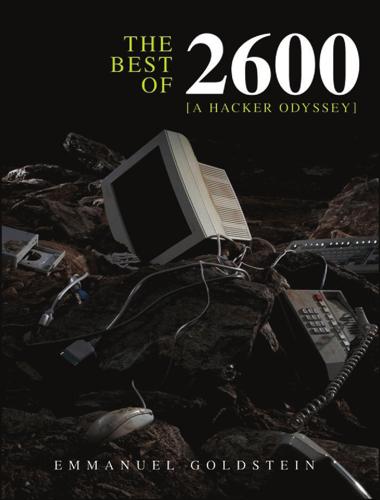
The Best of 2600: A Hacker Odyssey
by
Emmanuel Goldstein
Published 28 Jul 2008
I am a modern hacker, but I’ve been interested in computers since I was a child in the early 1970s when “hack” meant “create” and not the current media corruption, which essentially translates to “destroy.” 94192c15.qxd 6/4/08 3:45 AM Page 619 Still More Hacker Stories This was a time when there were no visible computers and the government still decided who had ARPANET access. Around then, the first ads started appearing for Steve Jobs’ and Steve Wozniak’s Apple II—a useful configuration cost the same as taking a family to Europe (or the United States if you’re European). A real physical computer like the ones I saw in the magazines that taught me to program were simply out of the question. My only computer was imaginary. It existed only as a simulation in my head and in my notebook—the old fashioned paper kind.
…
It would be nice if there was substantially less of this to report for our next issue. What is the EFF? (Summer, 1990) One of the results of our public outcry over the hacker raids this spring has been the formation of the Electronic Frontier Foundation (EFF). Founded by computer industry giants Mitch Kapor and Steve Wozniak along with writer John Barlow, the EFF 501 94192c13.qxd 6/3/08 3:34 PM Page 502 502 Chapter 13 sought to put an end to raids on publishers, bulletin board operators, and all of the others that have been caught up in recent events. The EFF founders, prior to the organization’s actual birth this summer, had said they would provide financial support to those affected by unjust Secret Service raids.
…
If I had, I don’t think I would have emerged a survivor. Quite honestly, I probably wouldn’t be here today. I don’t think this mark on my record, this felony, reflects with much accuracy what kind of person I am, or what kind of employee I am. Many youths do stupid things that aren’t necessarily injurious to anyone. Before Steve Wozniak and Steve Jobs co-founded Apple Computer, they “cheated” the phone company with a device called a “blue box” while in college at Berkeley, CA. Didn’t they turn into quasi-responsible multimillionaires? 94192c15.qxd 6/4/08 3:45 AM Page 633 Still More Hacker Stories “They didn’t get caught,” a landlord said to me, whose rental operation routinely turned away convicted felons per police sponsored programs.
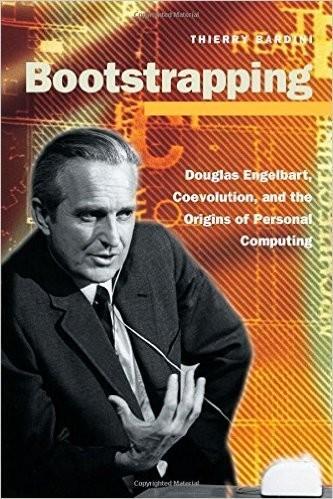
Bootstrapping: Douglas Engelbart, Coevolution, and the Origins of Personal Computing (Writing Science)
by
Thierry Bardini
Published 1 Dec 2000
(Johnson et al. 1989, 25-26) The "other" personal computer revolution that redefined the idea of the per- sonal computer was indeed partly the result of the computing philosophy that had led to the Star and that had invented a personal user for the computer. The final stages of product development and marketing of the interface for the per- sonal computer, however, occurred at Apple, not at Xerox. Apple and The End of the Bootstrapping Process The fairy-tale story of the founding of Apple Computer by Steve Jobs and Steve Wozniak, beginning with the Apple I and the meetings of computer hobbyists at the Home Brew Computer Club in a Palo Alto burger joint, is often told and need not be repeated here. It is necessary, however, to trace the path followed by Douglas Engelbart's innovations as they reached their terminus in the form in which they now are employed, a form very different from the one Engelbart had envisioned for them.
…
I thank all the editors of these journals for granting me the permission to reprint and update parts of these publications. 1943-1946 1958 1964 ENIAC IBM 709 IBM SABRE 1951 CDC 1604 PDP-6 1948 UNIVAC MARK Whirlwind 1959 TX-O & TX-2 1949 1952 1960 EDSAC EDVAC IBM 7090 1950 1961 1953 IBM 1730 SEAC IBM 701 & 702 PDP I 1962 1954 ATLAS IBM 704 1963 PDP8 1956 LISP 1954 FORTRAN 1960 COBOL ALGOL 1963 CTSS Sketchpad ll BASIC PASCAL 1957 FORTRAN Compiler 1947 the transistor 1958 the integrdted circuit (lC) Developments in Computer Technology, 1943 - I 964 1969 NOVA 1971 IBM 370 MAXC 1973 ALTO 1981 IBM PC OSBORNE I XEROX STAR 1975 ALTAIR IMSAI 8080 1982 LISA 1979 TRS 80 NEC 8001 1983 COMPAQ portablc 1984 MACINTOSH IBM PC AT 1977 APPLE II 1975 ALTAIR BASIC 1983 WORD 1974 INTEL X080 1973 the floppy di...k drive BRAVO 1982 MULTIPLAN LOTUS 1-2-1 ADOBE 1971 INTEL 4004 & 800X 1970 ROM IC RAM IC 1979 VISICALC WORDSTAR WORDPERFECT D-BASE 1981 HITACHI LCD MS DOS QUICKDRA W Developments In Computer Technology, 1969-1984 (Computers are shown above the line; software and components, below) INTRODUCTION Douglas Engelbart's Crusade for the Augmentation of Human Intellect Journal entry 37.
…
Two major factors influenced the success of the technology transfer of the graphic user interface from Xerox PARC to Apple. Jobs and Wozniak were connected to the hobbyist movement of the early 1970'S, and by 1979, Apple had successfully moved from this hobbyist market to the office market, thanks to Visicalc, the first spreadsheet program developed for the Apple II. "The two Steves-Jobs and Wozniak-they understood their market. The way they un- derstood their market was twofold: I) they were it, and that's the best way to understand a market, and 2) they just liked to go to the Homebrew Computer Club and having the neatest thing. . . The neatest thing available to that com- munity" (Belleville 1992).

Machines of Loving Grace: The Quest for Common Ground Between Humans and Robots
by
John Markoff
Published 24 Aug 2015
Smart young computer hackers like Steve “Slug” Russell and Whitfield Diffie followed McCarthy west, and during the next decade and a half a startling array of hardware engineers and software designers would flow through the laboratory, which maintained its countercultural vibe even as McCarthy became politically more conservative. Both Steve Jobs and Steve Wozniak would hold on to sentimental memories of their visits as teenagers to the Stanford laboratory in the hills. SAIL would become a prism through which a stunning group of young technologists as well as full-blown industries would emerge. Early work in machine vision and robotics began at SAIL, and the laboratory was indisputably the birthplace of speech recognition.
…
Kaplan’s expertise was on natural language front ends that would allow typed questions to an expert system. What Hendrix needed, however, was a simple database back end for his demonstration. And so over a Christmas holiday at the end of 1980, Kaplan sat down and programmed one. The entire thing initially ran on an Apple II. He did it on a contingent basis and in fact he didn’t get rich. The first Symantec never went anywhere commercially and the venture capitalists did a “cram down,” a financial maneuver in which company founders often see their equity lose value in exchange for new investments. As a result, what little stock Kaplan owned was now worthless.

The Optimist: Sam Altman, OpenAI, and the Race to Invent the Future
by
Keach Hagey
Published 19 May 2025
University professors scrambled to create policies on AI usage and new ways to give final exams. Investors demanded to know how AI was going to lower costs for the companies they had invested in—would it cut 20 percent? 30? How many people would be fired? Could it start today? By the end of March, Elon Musk, Yoshua Bengio, and Steve Wozniak were among more than one thousand signatories to an open letter by the Future of Life Institute calling for a six-month pause on developing AI models more powerful than GPT-4.29 The government took notice. Altman was summoned to the White House, along with Nadella, Pichai, Amodei, and Clark, for a two-hour meeting on May 4, 2023, with Vice President Kamala Harris and Commerce Secretary Gina Raimondo, among others, about the risks of AI.
…
MCADOO HAD grown up in Manhattan, the son of a Black civil rights activist and academic who had once recorded an album with Pete Seeger and went on to found the Africana Studies department at Stony Brook University.1 Once, when he was four, McAdoo told his father he wanted to walk on the moon. His father responded that to do that, he needed to learn to fly. From that moment onward, McAdoo had been obsessed with airplanes. He wrote computer graphics software, including simulations of space flight. His first computer was a TRS-80, and he later got an Apple II Plus–compatible Franklin Ace computer from his uncle in exchange for writing some accounting software for his uncle’s farm. After college, he received a private pilot’s license. After initially working for a New York–based bank as a software engineer, he worked for a time flying night cargo, but quickly went back to software engineering.

Coastal California Travel Guide
by
Lonely Planet
Consumers didn’t know quite what to do with computers, but in his 1969 Whole Earth Catalog, author (and former LSD tester for the CIA) Stewart Brand explained that the technology governments used to run countries could empower ordinary people. Hoping to bring computer power to the people, 21-year-old Steve Jobs and Steve Wozniak introduced the Apple II at the 1977 West Coast Computer Faire. Still, the question remained: what would ordinary people do with all that computing power? By the mid-1990s an entire dot-com industry boomed in Silicon Valley with online start-ups, and suddenly people were getting everything – their mail, news, politics, pet food and, yes, sex – online.
…
SAN JOSE FOR CHILDREN Children’s Discovery MuseumMUSEUM ( GOOGLE MAP ; %408-298-5437; www.cdm.org; 180 Woz Way; $13, child under 1yr free; h10am-5pm Tue-Sat, noon-5pm Sun; c) Downtown, this science and creativity museum has hands-on displays incorporating art, technology and the environment, with plenty of toys and cool play-and-learn areas for tots to school-aged children. The museum is on Woz Way, named after Steve Wozniak, cofounder of Apple. California's Great AmericaAMUSEMENT PARK ( GOOGLE MAP ; %408-988-1776; www.cagreatamerica.com; 4701 Great America Pkwy, Santa Clara; adult/child under 4ft $69/48; hApr-Oct, hours vary; c) If you can handle the shameless product placements, kids love the roller coasters and other thrill rides.

Smart Cities: Big Data, Civic Hackers, and the Quest for a New Utopia
by
Anthony M. Townsend
Published 29 Sep 2013
But you had to put the thing together yourself.12 Hobbyists quickly formed groups like Silicon Valley’s Homebrew Computer Club to trade tips, hacks, and parts for these DIY computers. Homebrew was a training camp for innovators like Apple cofounders Steve Jobs and Steve Wozniak who would overthrow IBM’s dominance of the computer industry. (According to Wozniak, the Apple I and Apple II were demo’d at Homebrew meetings repeatedly during their development.)13 Never before had so much computing power been put in the hands of so many. Grassroots smart-city technologies—mobile apps, community wireless networks, and open-source microcontrollers among them—are following a similar trajectory as the PC: from utopian idea to geek’s plaything to mass market.

San Francisco
by
Lonely Planet
Top 5 for Weird Technology Exploratorium (the Presidio) Musée Mécanique (Fisherman’s Wharf) Audium (Japantown) SFMOMA (SoMa) Children’s Creativity Museum (SoMa) The next wave of California techies was determined to create a personal computer that could compute and communicate without crashing. When 21-year-old Steve Jobs and Steve Wozniak introduced the Apple II at San Francisco’s West Coast Computer Faire in 1977, techies were abuzz about the memory (4KB of RAM!) and the microprocessor speed (1MHz!). The Mac II originally retailed for the equivalent today of $4300, or for 48KB of RAM, more than twice that amount – a staggering investment for what seemed like a glorified calculator/typewriter.
…
November 20, 1969 Native American activists reclaim the abandoned island of Alcatraz as reparation for broken treaties. The occupation lasts 19 months, until FBI agents forcibly oust the activists. December 6, 1969 A free concert at Altamont Speedway goes tragically wrong when Hells Angels on bodyguard duty turn on the performers and audience. Four people are killed . April 16–17, 1977 The Apple II is introduced in SF at the first West Coast Computer Faire, and stuns the crowd with its computing speed (1MHz) – current computers run 2000 to 3000 times faster. 1977 Harvey Milk becomes the first openly gay man elected to US public office. Milk sponsors a gay-rights bill and trend-setting ‘pooper-scooper’ ordinance before his murder by Dan White.

San Francisco
by
Lonely Planet
Top 5 for Weird Technology Exploratorium (the Presidio) Musée Mécanique (Fisherman’s Wharf) Audium (Japantown) SFMOMA (SoMa) Children’s Creativity Museum (SoMa) The next wave of California techies was determined to create a personal computer that could compute and communicate without crashing. When 21-year-old Steve Jobs and Steve Wozniak introduced the Apple II at San Francisco’s West Coast Computer Faire in 1977, techies were abuzz about the memory (4KB of RAM!) and the microprocessor speed (1MHz!). The Mac II originally retailed for the equivalent today of $4300, or for 48KB of RAM, more than twice that amount – a staggering investment for what seemed like a glorified calculator/typewriter.
…
November 20, 1969 Native American activists reclaim the abandoned island of Alcatraz as reparation for broken treaties. The occupation lasts 19 months, until FBI agents forcibly oust the activists. December 6, 1969 A free concert at Altamont Speedway goes tragically wrong when Hells Angels on bodyguard duty turn on the performers and audience. Four people are killed . April 16–17, 1977 The Apple II is introduced in SF at the first West Coast Computer Faire, and stuns the crowd with its computing speed (1MHz) – current computers run 2000 to 3000 times faster. 1977 Harvey Milk becomes the first openly gay man elected to US public office. Milk sponsors a gay-rights bill and trend-setting ‘pooper-scooper’ ordinance before his murder by Dan White.

Northern California Travel Guide
by
Lonely Planet
Consumers didn’t know quite what to do with computers, but in his 1969 Whole Earth Catalog, author (and former LSD tester for the CIA) Stewart Brand explained that the technology governments used to run countries could empower ordinary people. Hoping to bring computer power to the people, Steve Jobs and Steve Wozniak, both in their 20s at the time, introduced the Apple II at the 1977 West Coast Computer Faire, with unfathomable memory (4KB of RAM) and microprocessor speed (1MHz). Still, the question remained: what would ordinary people do with all that computing power? By the mid-1990s an entire dot-com industry boomed in Silicon Valley with online start-ups, and suddenly people were getting everything – their mail, news, politics, pet food and, yes, sex – online.
…
SAN JOSE FOR CHILDREN Children’s Discovery MuseumMUSEUM ( GOOGLE MAP ; %408-298-5437; www.cdm.org; 180 Woz Way; $13, child under 1yr free; h10am-5pm Tue-Sat, noon-5pm Sun; c) Downtown, this science and creativity museum has hands-on displays incorporating art, technology and the environment, with plenty of toys and cool play-and-learn areas for tots to school-aged children. The museum is on Woz Way, named after Steve Wozniak, cofounder of Apple. California's Great AmericaAMUSEMENT PARK ( GOOGLE MAP ; %408-988-1776; www.cagreatamerica.com; 4701 Great America Pkwy, Santa Clara; adult/child under 4ft $69/48; hApr-Oct, hours vary; c) If you can handle the shameless product placements, kids love the roller coasters and other thrill rides.

Nexus: A Brief History of Information Networks From the Stone Age to AI
by
Yuval Noah Harari
Published 9 Sep 2024
It was a conscious ideological decision, influenced by the 1960s counterculture with its anarchist ideas of power to the people and libertarian distrust of governments and big corporations.53 Leading members of the Homebrew Computer Club, like Steve Jobs and Steve Wozniak, had big dreams but little money and didn’t have access to the resources of either corporate America or the government apparatus. Jobs and Wozniak sold their personal possessions, like Jobs’s Volkswagen, to finance the creation of the first Apple computer. It was because of such personal decisions, rather than because of the inevitable decree of the goddess of technology, that by 1977 individuals could buy the Apple II personal computer for a price of $1,298—a considerable sum, but within reach of middle-class customers.54 We can easily imagine an alternative history.
…
Fred Turner, From Counterculture to Cyberculture: Stewart Brand, the Whole Earth Network, and the Rise of Digital Utopianism (Chicago: University of Chicago Press, 2010). 54. Paul Freiberger and Michael Swaine, Fire in the Valley: The Making of the Personal Computer, 2nd ed. (New York: McGraw Hill, 2000), 263–65; Laine Nooney, The Apple II Age: How the Computer Became Personal (Chicago: University of Chicago Press, 2023), 57. 55. Nicholas J. Schlosser, Cold War on the Airwaves: The Radio Propaganda War Against East Germany (Champaign: University of Illinois Press, 2015), esp. chap. 5, “The East German Campaign Against RIAS,” 107–34; Alfredo Thiermann, “Radio Activities,” Thresholds 45 (2017): 194–210, doi.org/10.1162/THLD_a_00018.
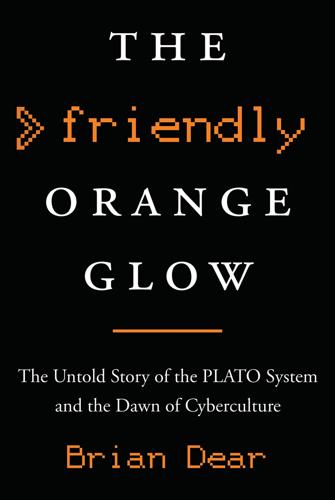
The Friendly Orange Glow: The Untold Story of the PLATO System and the Dawn of Cyberculture
by
Brian Dear
Published 14 Jun 2017
The only difference between what he envisioned for PLATO IV back in 1968 and what he was envisioning in 1975 was the scale. His revised, broader vision did not contemplate nor include microcomputers, which were still in their infancy. The same week Bitzer gave this presentation, microcomputer hobbyists, including Steve Wozniak, who had already begun working on what would soon be known as the Apple I, were meeting at the Homebrew Computer Club in Silicon Valley. Despite the fact that CERL and Xerox PARC had opened their respective labs to each other and offered demos and hands-on experiences and dialogue, none of what was brewing in Silicon Valley either in corporate offices or hackers’ garages was affecting Bitzer’s vision.
…
“When micros came out,” says Tenczar, “all the empowered courses, all the computer science departments, all the major companies completely missed the microprocessor revolution. Some of us, Stan Smith was one, and then myself, began looking at the Apple II. I actually did homework, and I looked at that and realized that that has about ten times the processing power of a PLATO terminal—this was in ’77, when the Apple II came out.” He tried to drum up interest in the Apple II but, he says, “people thought I was nuts.” After having a falling out with Bitzer and members of the senior staff, he founded, with some partners, a company called Regency Systems, designed to bring PLATO’s CBE capabilities to a PC platform.
…
In Warner’s game, instead of players deciding how they were going to move and how they were going to shoot, he thought, why not have a robot player that you could program to move and shoot a certain way? Instead of player versus player, Warner wanted to be able to play against the computer as an option when real players weren’t around, hanging out in the Big Board. His game was called Robotwar, a game that would go on to huge success when reprogrammed to run on the Apple II and sold commercially a few short years later. — Nineteen seventy-three and 1974 were the boom years for Big Board games. They were easy to write, instantly popular, and as the code to run a Big Board game became standardized and shared like a plug-in component, akin to open-source software routines today, it made it even easier to get a new game up and running.

Architects of Intelligence
by
Martin Ford
Published 16 Nov 2018
But we’ve also got other limitations to deal with, like we still don’t have generalized tools in AI and we still don’t know how to solve general problems in AI. In fact, one of the fun things, and you may have seen this, is that people are now starting to define new forms of what used to be the Turing test. MARTIN FORD: A new Turing Test? How would that work? JAMES MANYIKA: Steve Wozniak, the co-founder of Apple, has actually proposed what he calls the “coffee test” as opposed to Turing tests, which are very narrow in many respects. A coffee test is kind of fun: until you get a system that can enter an average and previously unknown American home and somehow figure out how to make a cup of coffee, we’ve not solved AGI.
…
There was no reason to think that it wasn’t. MARTIN FORD: Did you follow that with computer science at college? DAVID FERRUCCI: No, I had no idea about careers in computer science or AI, so I went to college and majored in biology to become a medical doctor. During my studies, I got my grandparents to buy me an Apple II computer, and I just started programming everything I could think of. I ended up programming a lot of software for my college, from graphing software for experimental lab work, to ecology simulation software, to analog-to-digital interfacing for lab equipment. This, of course, was before any of this stuff even existed, never mind being able to just download it form the internet.
…
Essentially, as a child I lived through the previous big wave of excitement in AI in the late 1970s and 1980s, which allowed me to go to AI conferences as a kid. We grew up in the Bay Area, and one-time my father took us to Southern California because there was an Apple AI conference taking place, and this was in the Apple II era. I remember that Apple had bought out Disneyland for the evening for all of the attendees of the big AI conference. So, we flew down for the day just to be able to go on Pirates of the Caribbean 13 times in a row, which, looking back, tells you something about just how big AI was even then. It’s hyped now, but it was the same back then.

The Code Breaker: Jennifer Doudna, Gene Editing, and the Future of the Human Race
by
Walter Isaacson
Published 9 Mar 2021
By being the first person to try to edit his own DNA, he showed that the gene genie would someday be out of the bottle, which he insisted was a good thing. Zayner wants to make the genetic engineering revolution as open and crowdsourced as the early digital revolution was, when coders like Linus Torvalds created the open-source operating system Linux and hackers like Steve Wozniak gathered at the Homebrew Computer Club and talked about liberating computers from the exclusive control of corporations and government institutions. Genetic engineering, he insists, is no harder than computer engineering. “I almost failed out of high school,” he says, “but I was able to learn how to do this stuff.”
…
Isn’t it dangerous, I ask, for everyone to have access to this technology? “No, it’s fucking exciting,” he counters. “No great technology has flourished until people had complete access to it.” He has a point. What truly caused the digital age to blossom was when computers became personal. It happened in the mid-1970s with the advent of the Altair and the Apple II, devices that democratized control of computing power. First hackers and then the rest of us got to play with our own computers and produce digital content. The digital revolution was kicked into an even higher orbit in the early 2000s with the birth of the smartphone. As Zayner says, “Once we have people doing biotechnology at home, like we did with computer programming, so many amazing things will be contributed.”5 Zayner will probably have his way.

California
by
Sara Benson
Published 15 Oct 2010
* * * To read more about the garage-workshop culture of Silicon Valley go to www.folklore.org, which covers the crashes and personality clashes that made geek history. * * * The next wave of Californian techies was determined to create a personal computer that could compute and communicate without crashing. When 21-year-old Steve Jobs and Steve Wozniak introduced the Apple II at the first West Coast Computer Faire in 1977, techies were abuzz about the memory (4KB of RAM!), the microprocessor speed (1MHz!) and a function straight out of science fiction: the ability to communicate directly with other computers, without a person in between. Not until the 1990s would Silicon Valley engineers finally give computers something to talk about.
…
San Jose for Children Downtown, the technology-focused Children’s Discovery Museum (Map; 408-298-5437; www.cdm.org; 180 Woz Way; admission $8; 10am-5pm Tue-Sat, noon-5pm Sun; ) has hands-on science and space displays, plenty of toys and some pretty cool play-and-learn areas such as the kooky ‘Alice’s Wonderland.’ The museum is on Woz Way, which is named after Steve Wozniak, the cofounder of Apple. On hot days, kids can cavort among the 22 minigeysers that climb and fall at the play fountain (Map; Plaza de Cesar Chavez) on downtown’s central square. Kids can romp and whoop it up at two nearby theme parks. Raging Waters ( 408-238-9900; 2333 South White Rd; adult/child under 48in $30/22; May-Sep; ), a water park inside Lake Cunningham Regional Park, has fast water slides, a tidal pool and a nifty water fort.
…
Geek Chic Industry dwindled steadily in San Francisco after World War II, but the brains of military-industrial operations found work in the so-called Silicon Valley, a technology-centric area that runs south of San Francisco to San Jose. A company started in a South Bay garage called Hewlett-Packard introduced the forward-thinking 9100A ‘computing genie’ in 1968, and the ground-breaking Apple II was introduced at San Francisco’s West Coast Computer Faire in 1977. By the mid-1990s the tech boom had expanded to include internet sites that sold vegan dog food, art by the yard and extra socks – until venture capital funding dried up and multimillion dollar dot-coms shrank into online oblivion.

Free Speech: Ten Principles for a Connected World
by
Timothy Garton Ash
Published 23 May 2016
The influence of a Steve Jobs or a Mark Zuckerberg on their respective empires has been more like that of an idiosyncratic absolute ruler in some mediaeval principate than that of the head of government in a modern liberal democracy. Apple’s tethered perfectionism has everything to do with Jobs’s personality. If the other Apple-founding Steve—Wozniak—had become Apple’s dominant figure, it might have remained the open, generative platform it was at the time of the 1982 Apple II desktop computer. For years, Google did not allow advertisements for cigarettes and hard liquor because Sergey Brin and Larry Page disapproved of them. Facebook’s insistence on people using their real names is, to a significant degree, a result of Zuckerberg’s personal attitude.
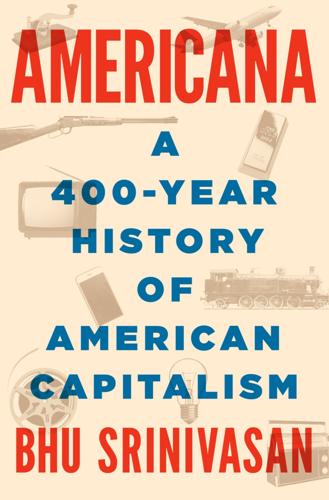
Americana: A 400-Year History of American Capitalism
by
Bhu Srinivasan
Published 25 Sep 2017
When September came around, Gates decided to stay. The Altair, at the time, was causing significant excitement among early adopters—enthusiasts known as hobbyists—including some in Silicon Valley. At the Homebrew Computer Club, formed just weeks after the Popular Electronics issue premiered the Altair, Steve Wozniak made it to the first meeting, which he would later call “one of the most important nights” of his life. There he saw the Altair demonstrated, beginning to understand the implications and flexibility of low-cost microprocessors. Wozniak spent the next few months hacking together the functions of a keyboard and a microprocessor that could show keystrokes on a television screen—which, in Wozniak’s telling, was an achievement that had never been accomplished outside large corporate mainframes costing tens or often hundreds of thousands of dollars.
…
Markkula, a young marketing veteran from pre-IPO Intel who had made a fortune from its climbing stock, agreed to provide $250,000 through a combination of a credit line and an equity investment. In turn Markkula received a one-third share, equal to those of Jobs and Wozniak, and turned their entity into a legal corporation. Through the first nine months of 1977, Apple sold 570 units of a new and improved product, the Apple II. Markkula then helped raise a little over $500,000. The bulk of this round, however, came not from Silicon Valley but from the venture capital arm of the Rockefeller family—a small piece of the great oil fortune had circulated into Intel and now into Apple. In 1978 sales grew to $8 million. Then $48 million.

Americana
by
Bhu Srinivasan
When September came around, Gates decided to stay. The Altair, at the time, was causing significant excitement among early adopters—enthusiasts known as hobbyists—including some in Silicon Valley. At the Homebrew Computer Club, formed just weeks after the Popular Electronics issue premiered the Altair, Steve Wozniak made it to the first meeting, which he would later call “one of the most important nights” of his life. There he saw the Altair demonstrated, beginning to understand the implications and flexibility of low-cost microprocessors. Wozniak spent the next few months hacking together the functions of a keyboard and a microprocessor that could show keystrokes on a television screen—which, in Wozniak’s telling, was an achievement that had never been accomplished outside large corporate mainframes costing tens or often hundreds of thousands of dollars.
…
Markkula, a young marketing veteran from pre-IPO Intel who had made a fortune from its climbing stock, agreed to provide $250,000 through a combination of a credit line and an equity investment. In turn Markkula received a one-third share, equal to those of Jobs and Wozniak, and turned their entity into a legal corporation. Through the first nine months of 1977, Apple sold 570 units of a new and improved product, the Apple II. Markkula then helped raise a little over $500,000. The bulk of this round, however, came not from Silicon Valley but from the venture capital arm of the Rockefeller family—a small piece of the great oil fortune had circulated into Intel and now into Apple. In 1978 sales grew to $8 million. Then $48 million.

Western USA
by
Lonely Planet
GEEKING OUT When California’s Silicon Valley introduced the first personal computer in 1968, advertisements breathlessly gushed that Hewlett-Packard’s ‘light’ (40lb) machine could ‘take on roots of a fifth-degree polynomial, Bessel functions, elliptic integrals and regression analysis’ – all for just $4900 (about $29,000 today). Hoping to bring computer power to the people, 21-year-old Steve Jobs and Steve Wozniak introduced the Apple II at the 1977 West Coast Computer Faire with unfathomable memory (4KB of RAM) and microprocessor speed (1MHz). By the mid-1990s, an entire dot-com industry boomed in Silicon Valley with online start-ups, and suddenly people were getting their mail, news, politics, pet food and, yes, sex online.

The Rise and Fall of American Growth: The U.S. Standard of Living Since the Civil War (The Princeton Economic History of the Western World)
by
Robert J. Gordon
Published 12 Jan 2016
In April 1975, they together founded Microsoft. A month earlier, another computer legend, Steve Wozniak, had attended the Homebrew Computer Club in California and was immediately inspired by what he saw. He began work on his own personal computer, the Apple Computer or the Apple I, and got his friend, Steve Jobs, to help with sales. The computer had more memory and a cheaper microprocessor than the Altair and could be plugged into any television to use as a screen. Soon Jobs and Wozniak began work on the Apple II, which included a keyboard and a color screen as well as an external cassette tape (soon replaced with floppy disks).